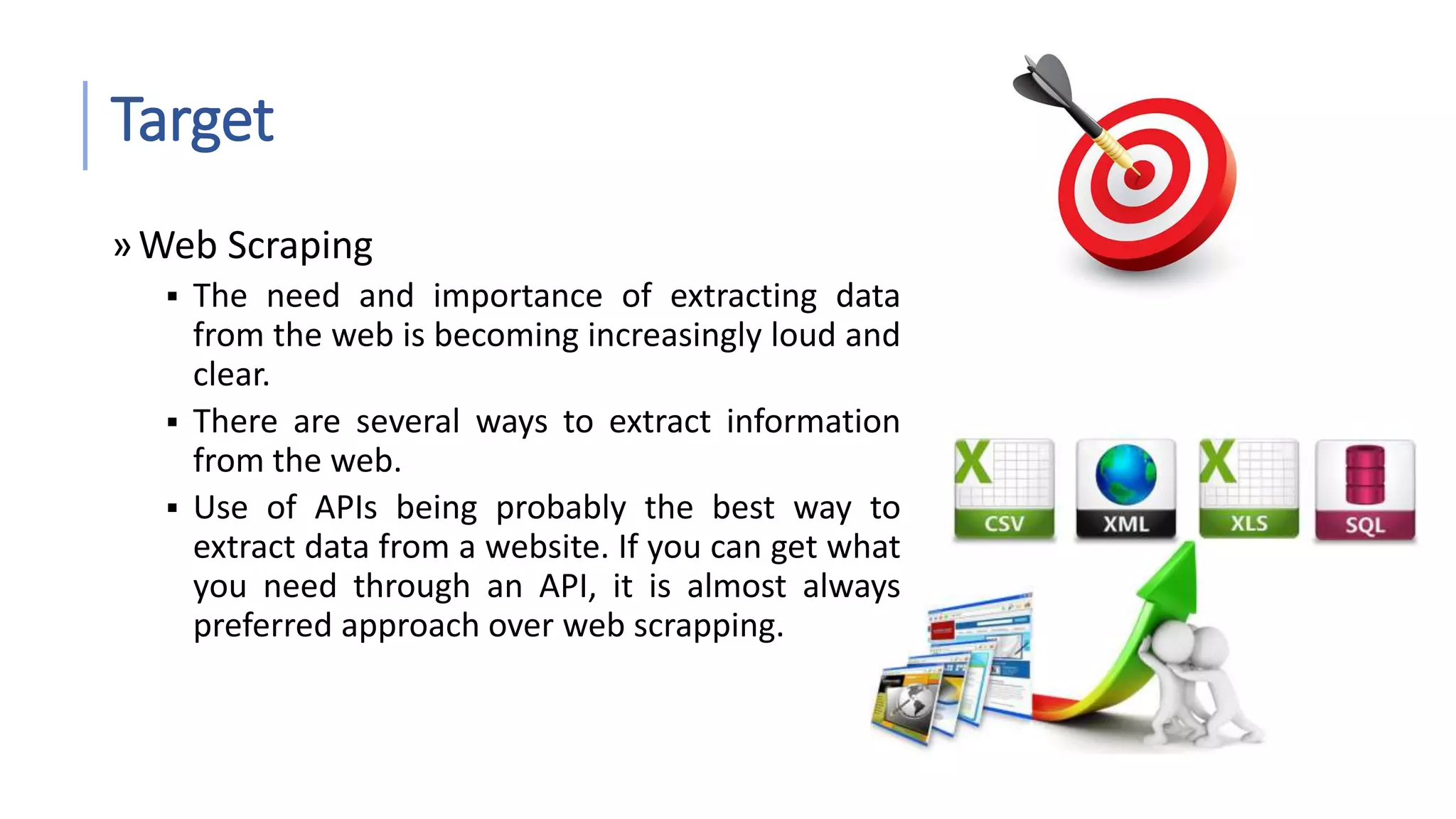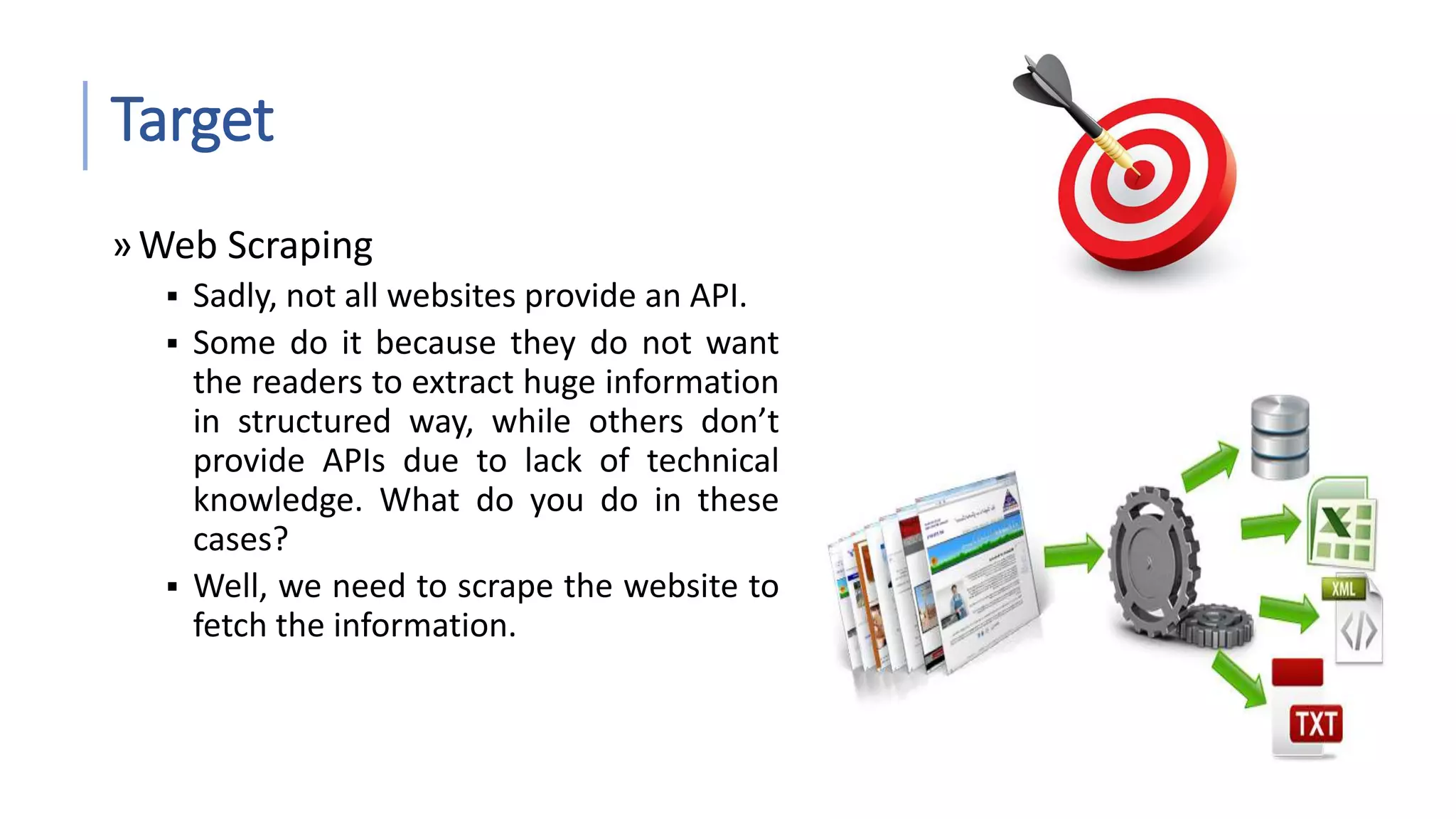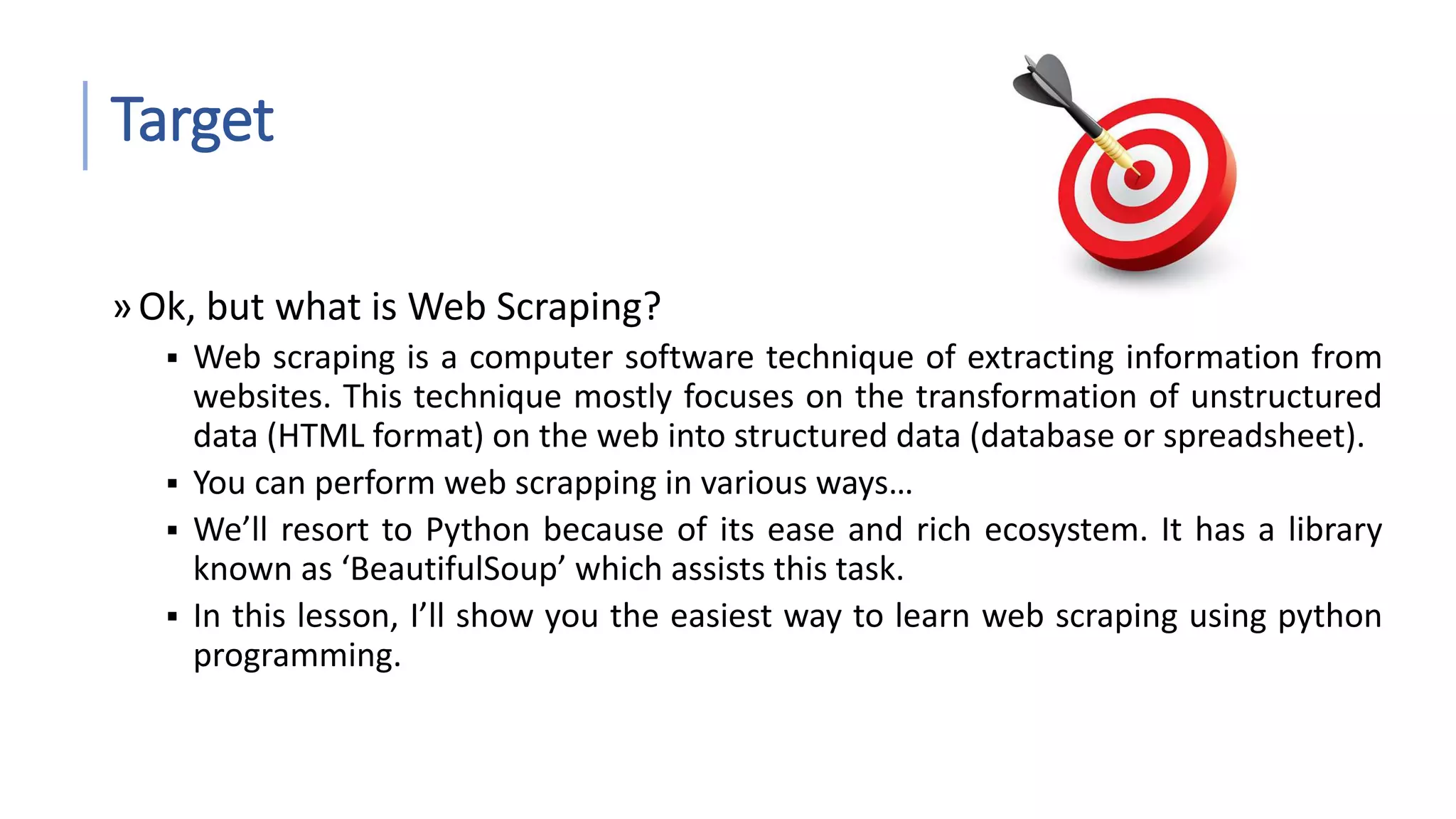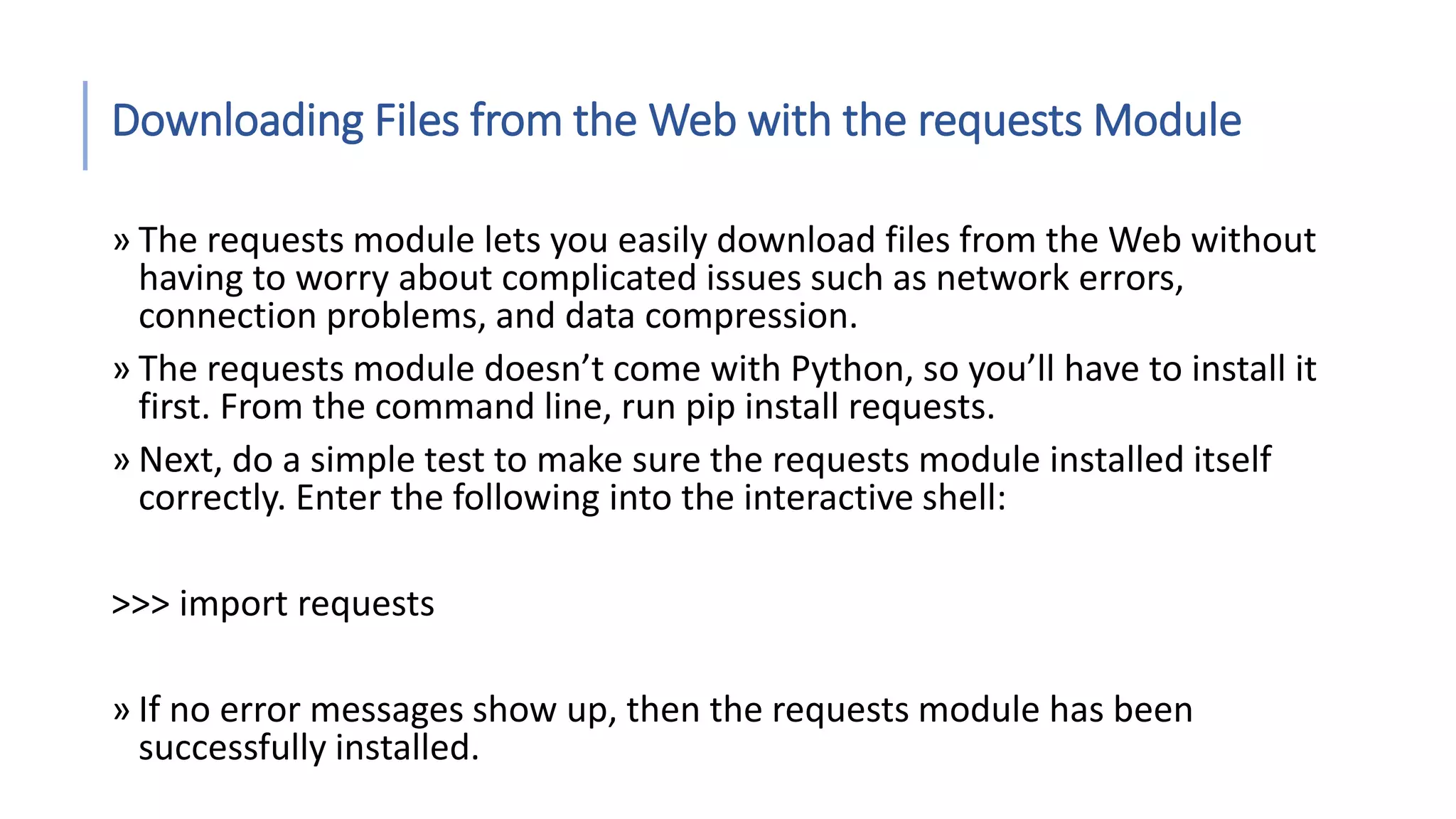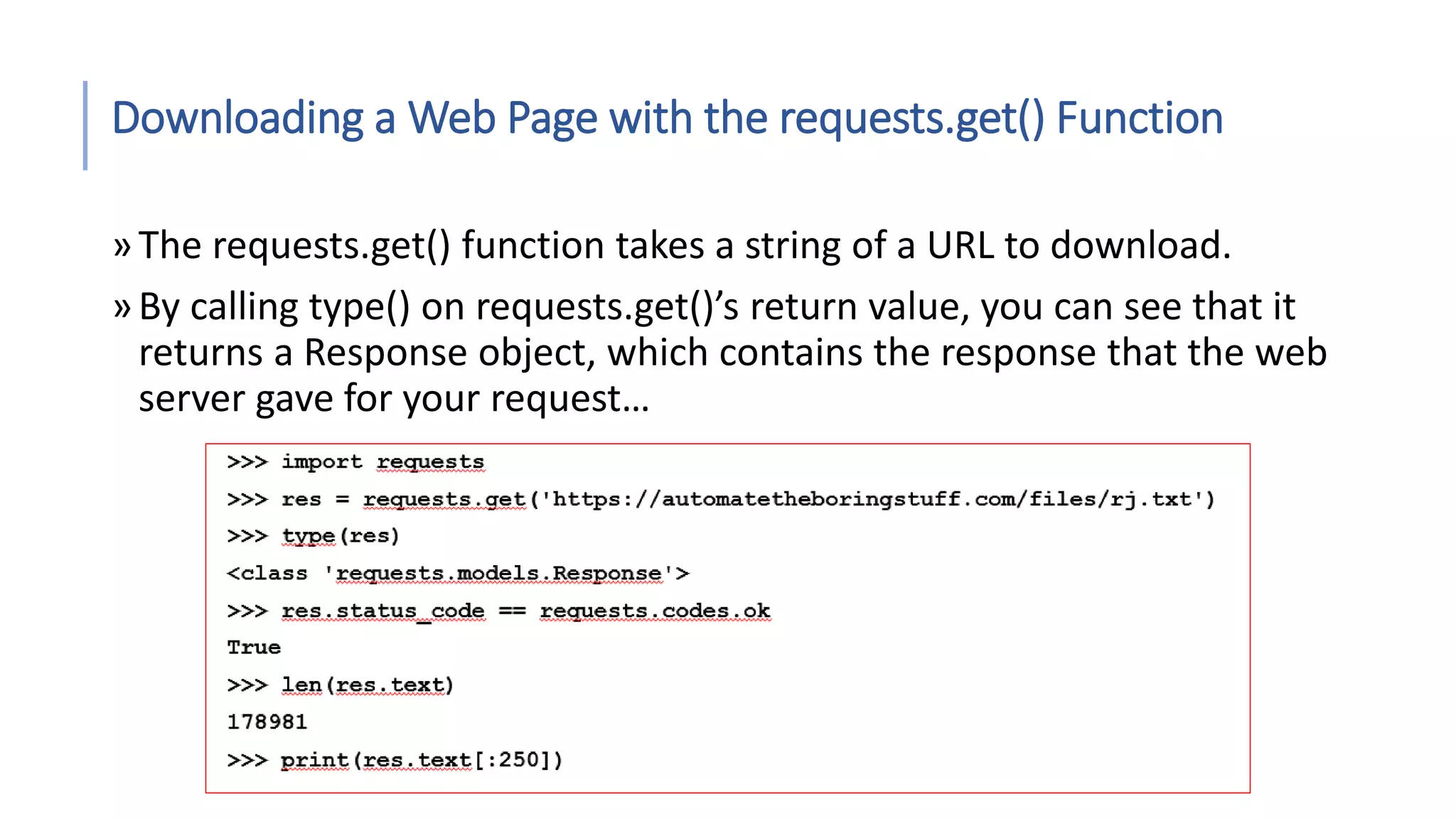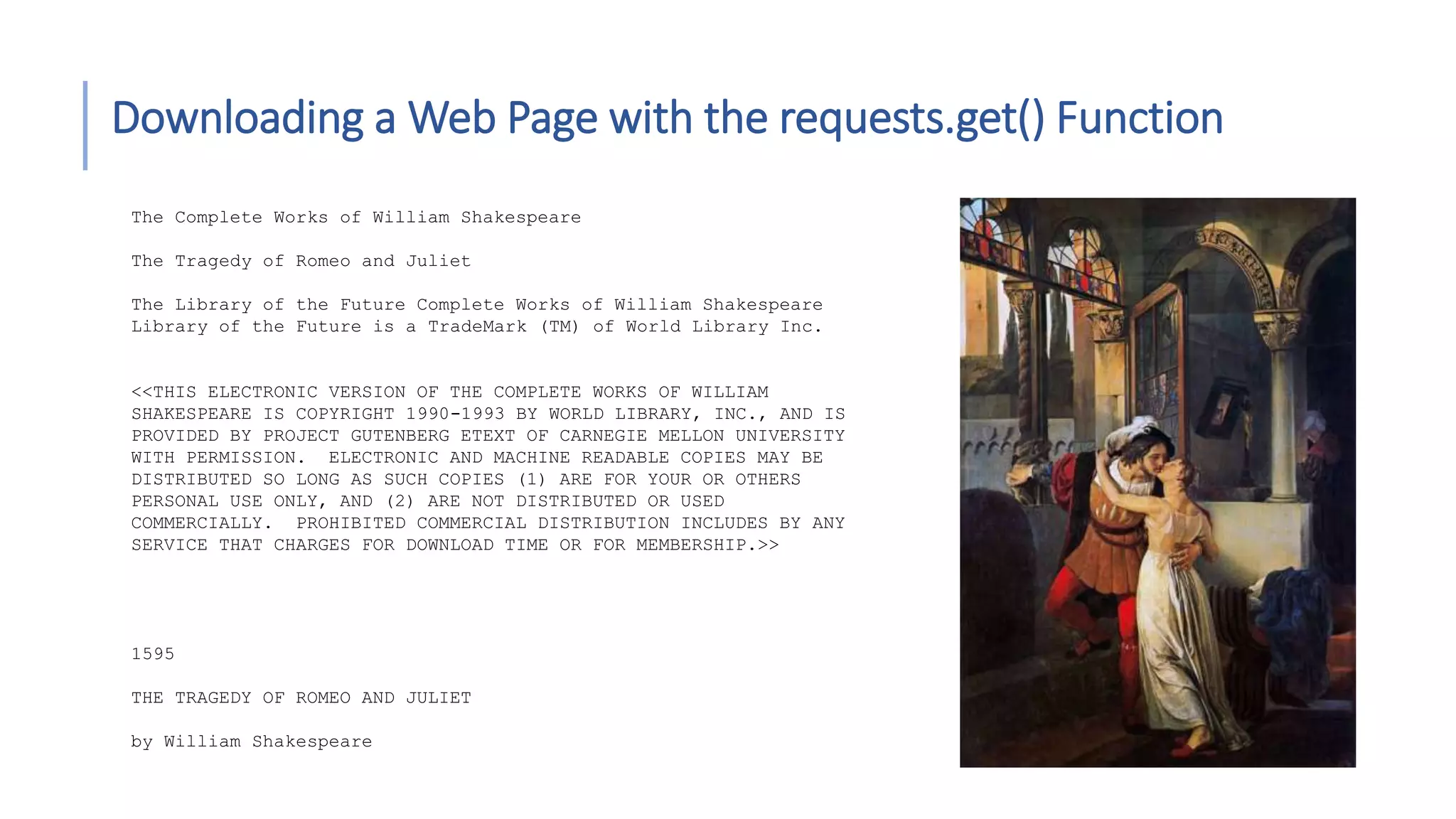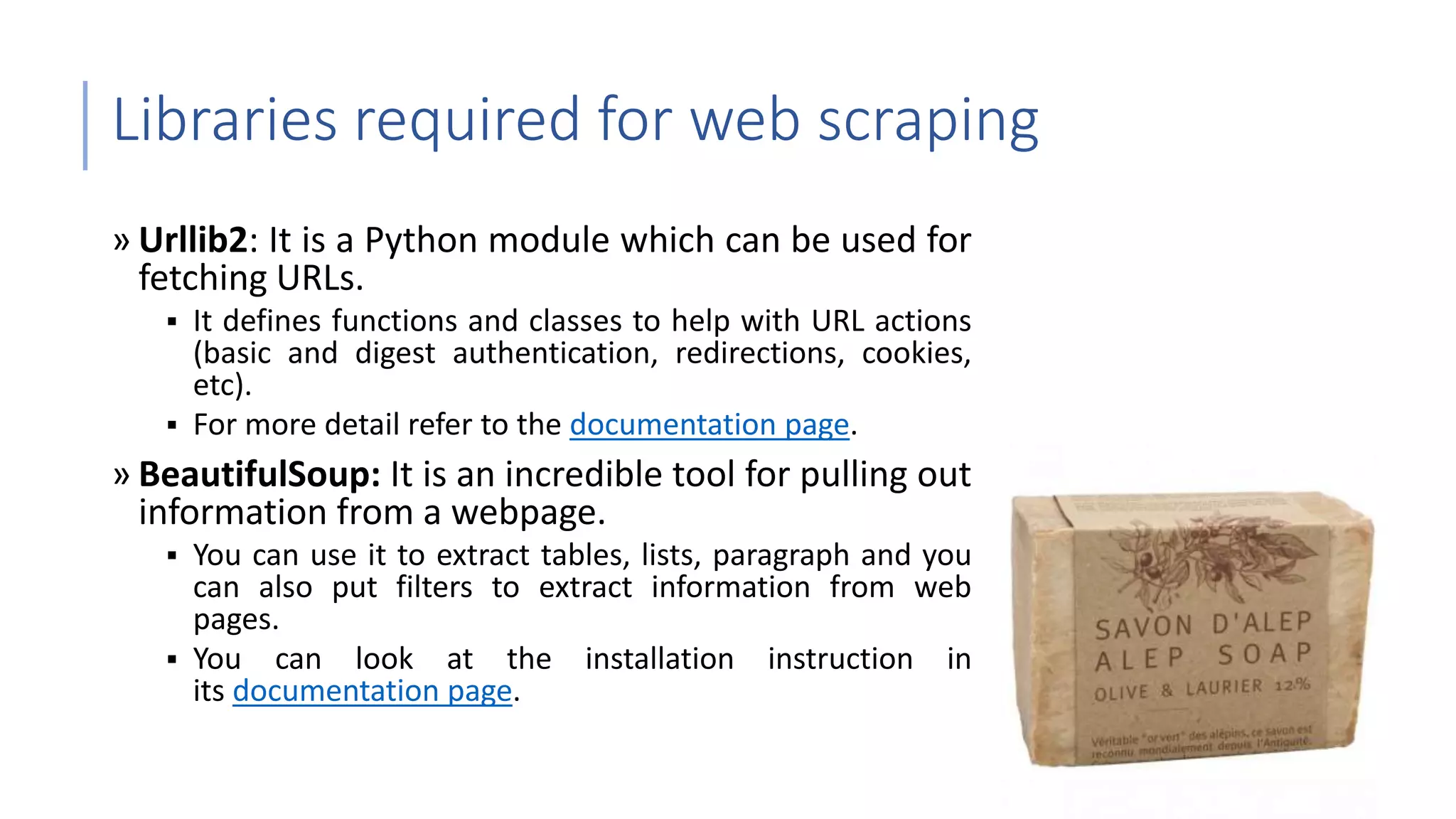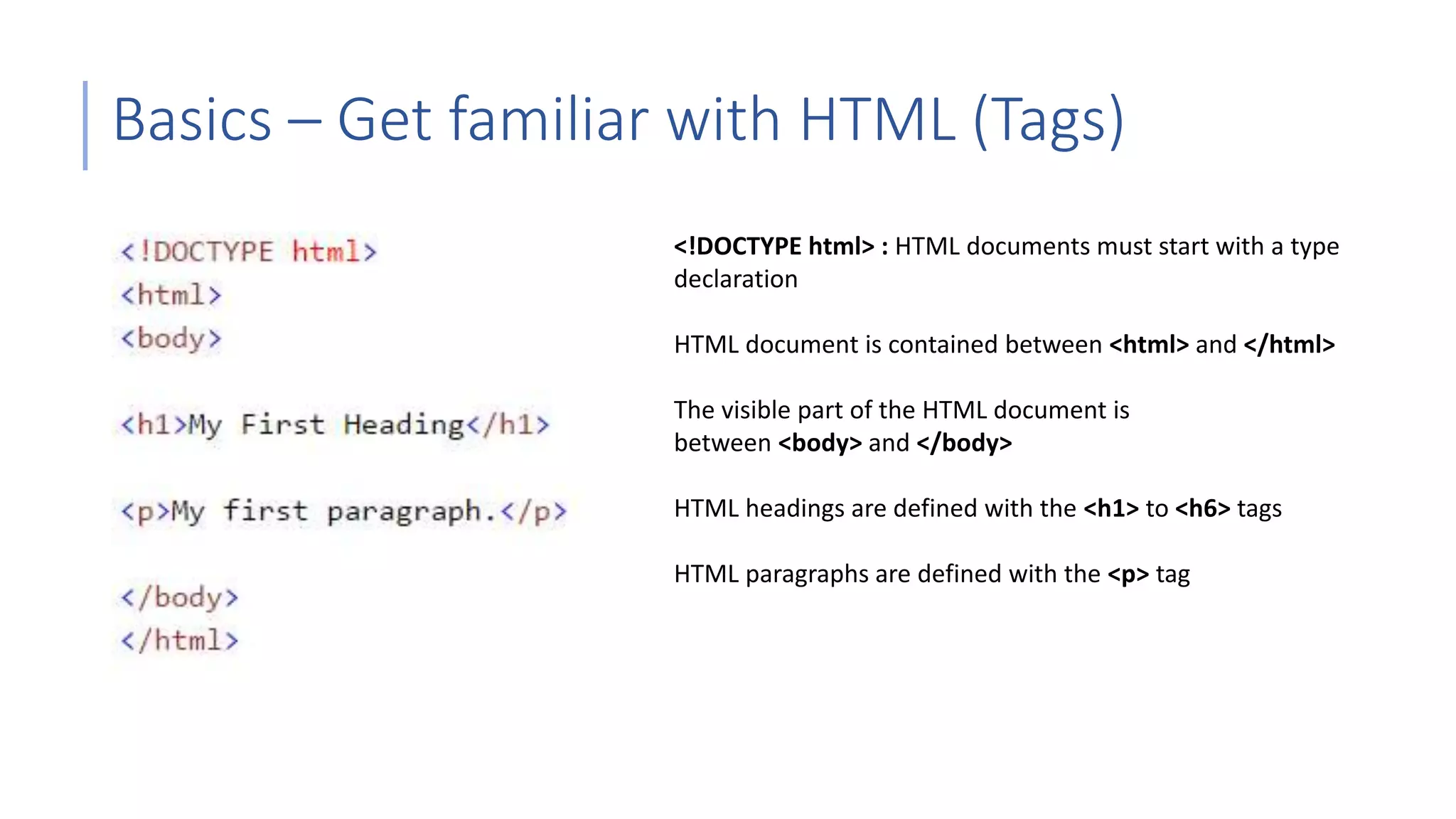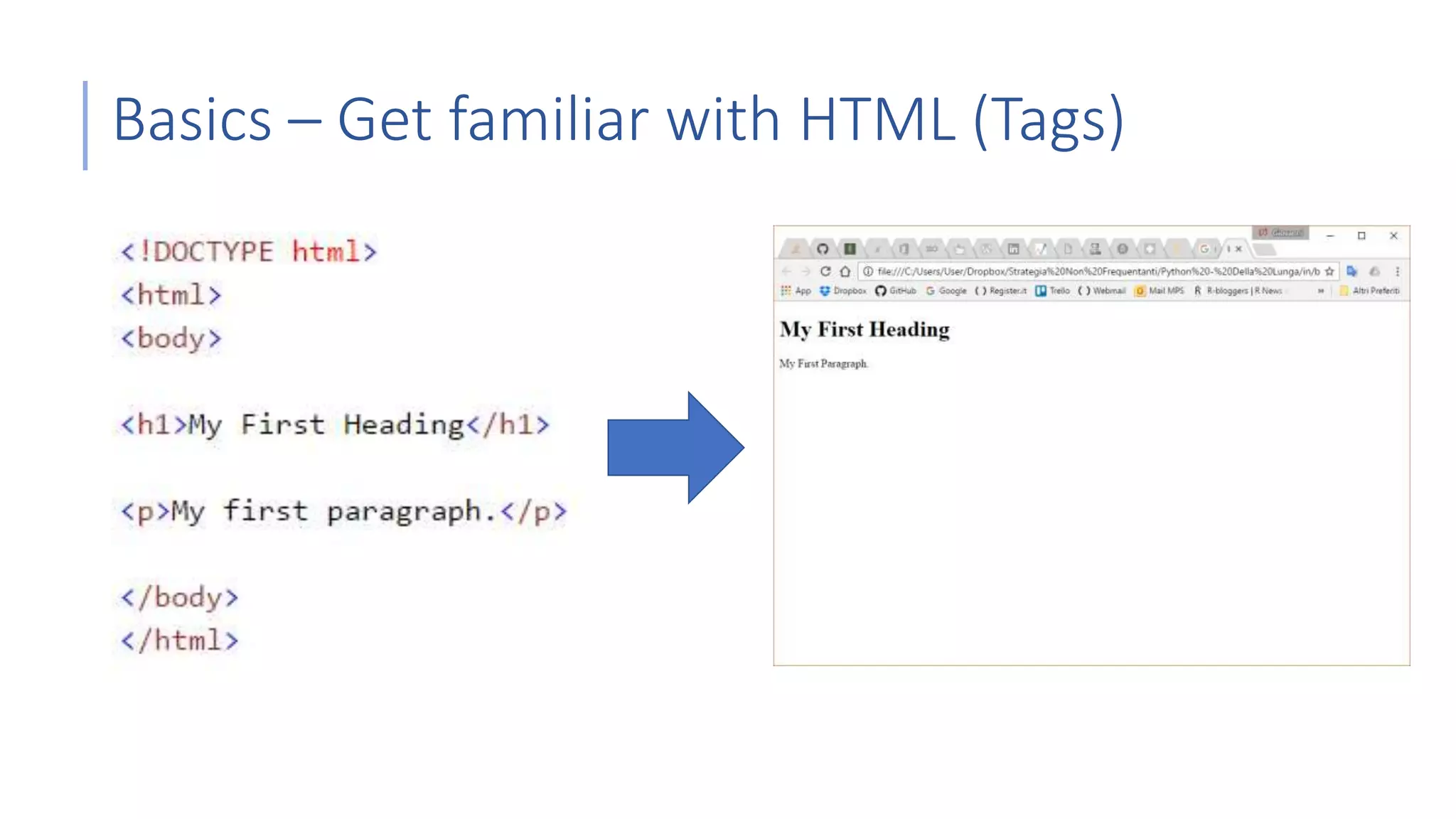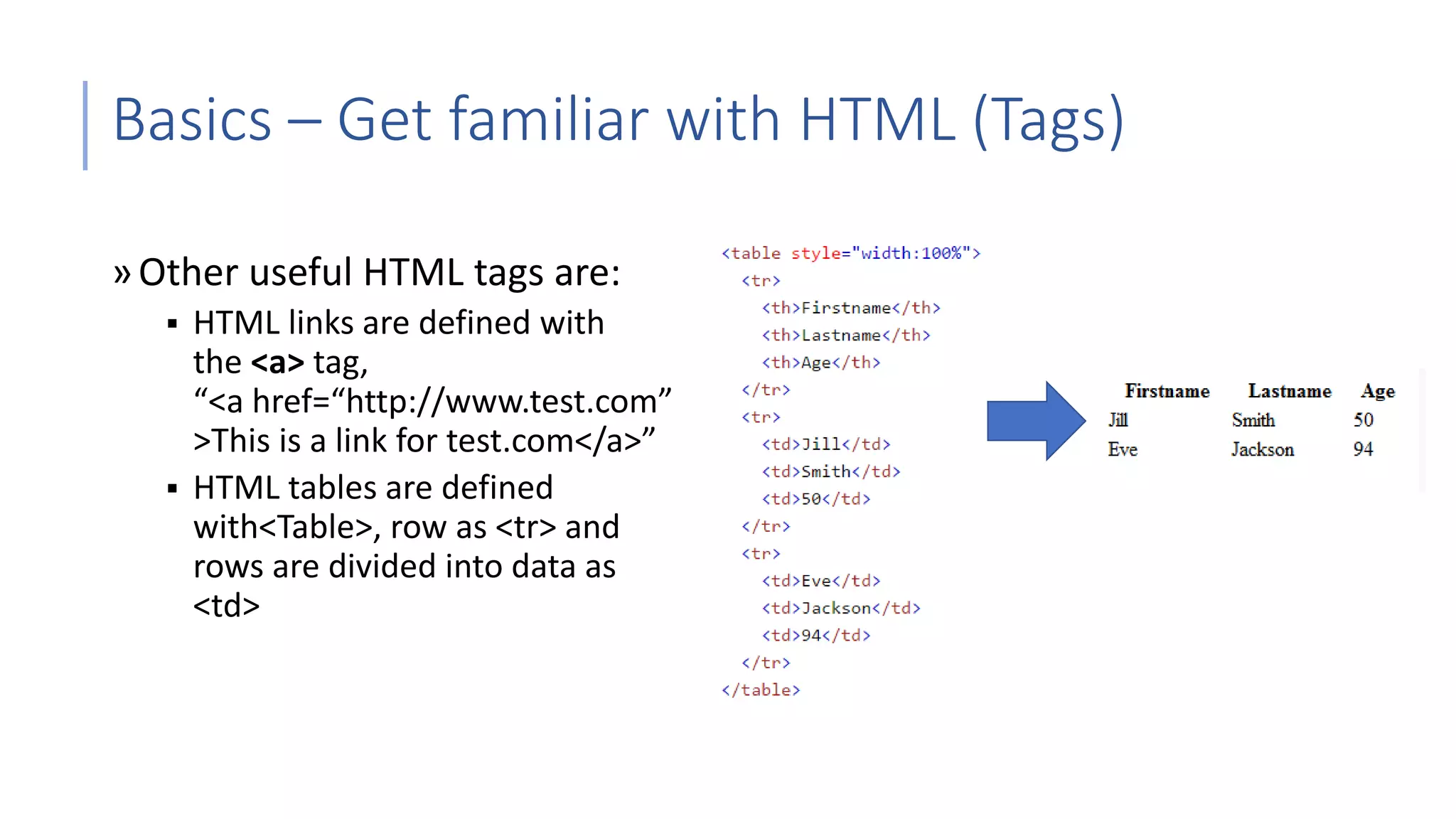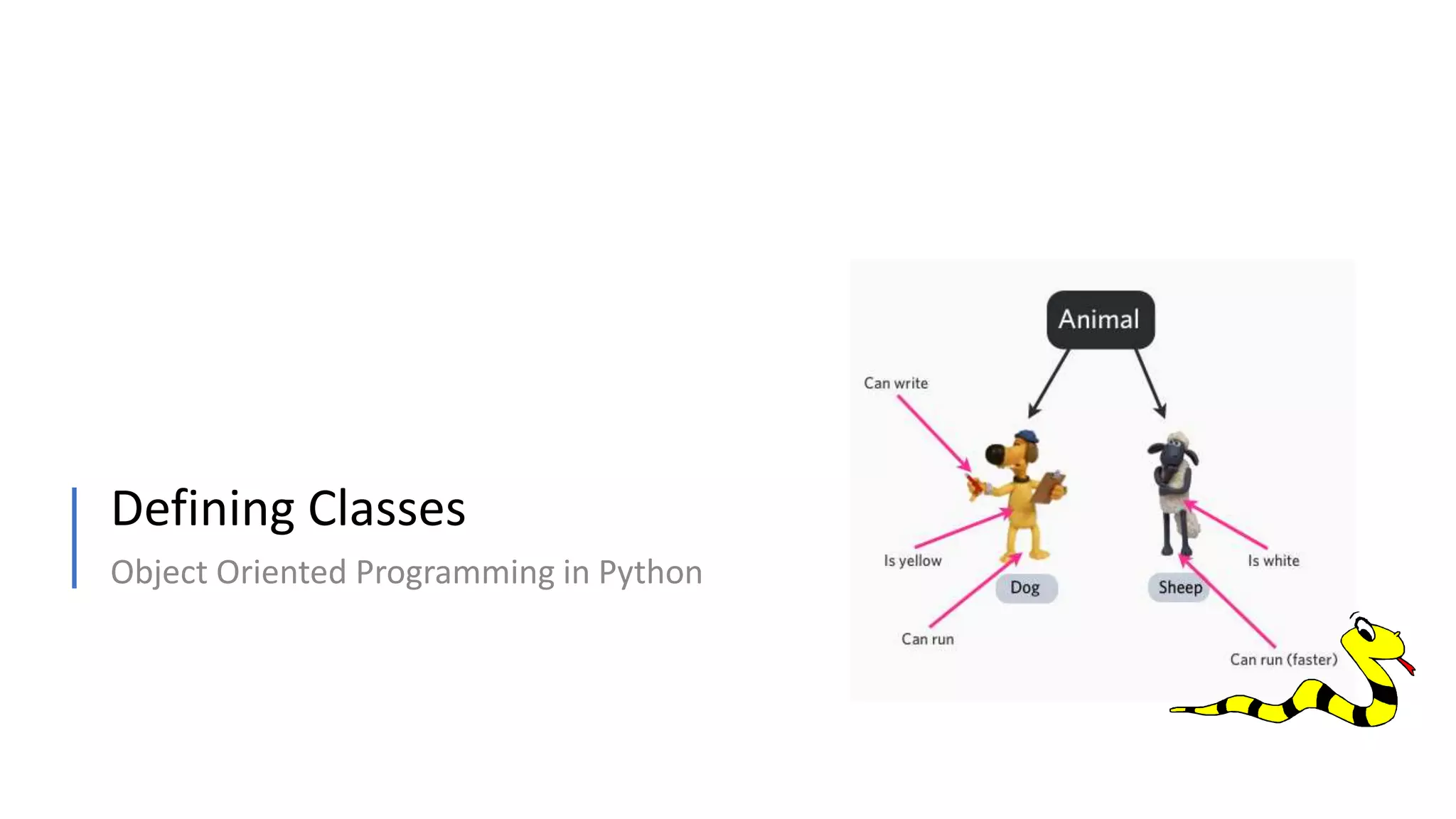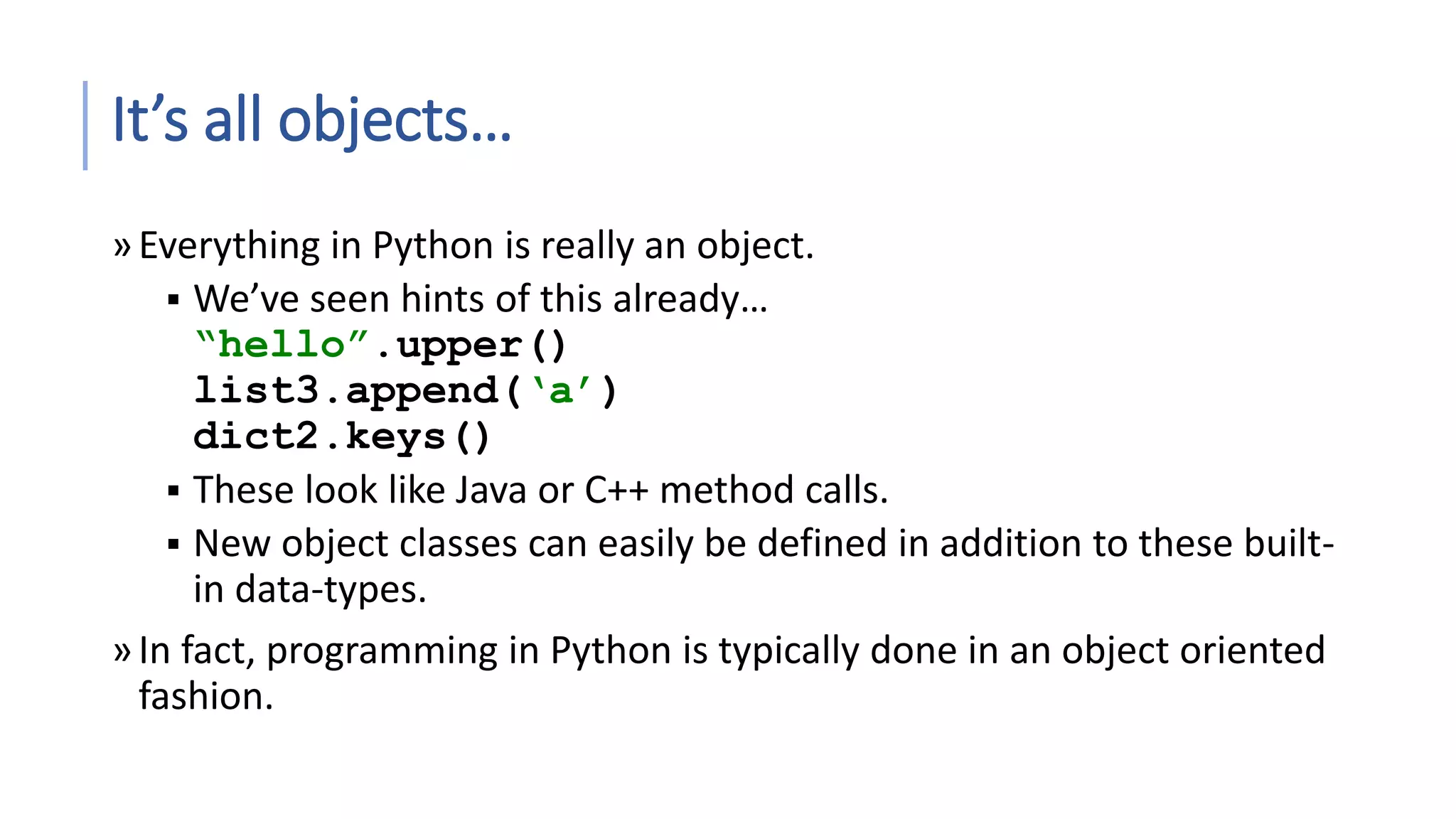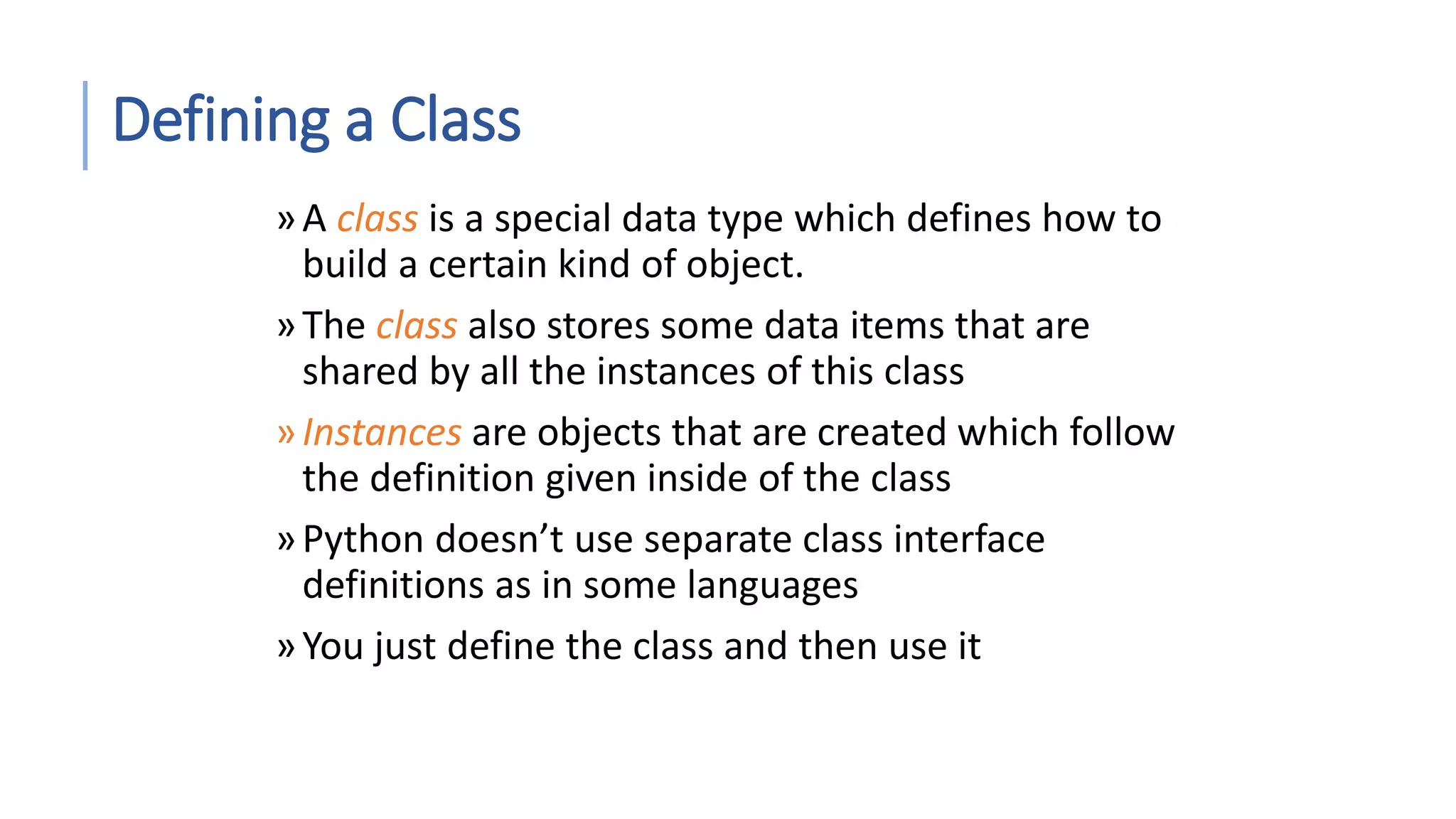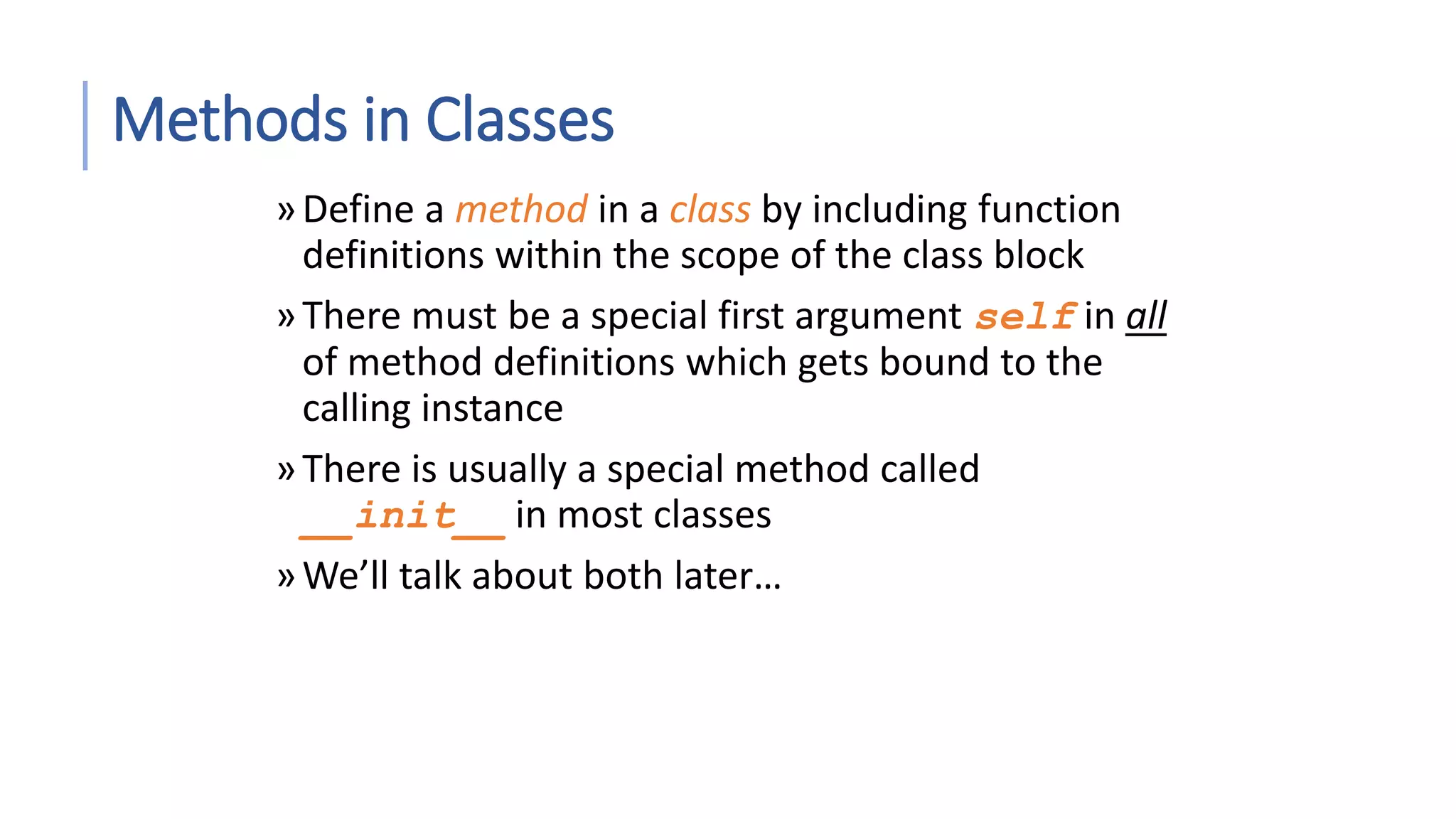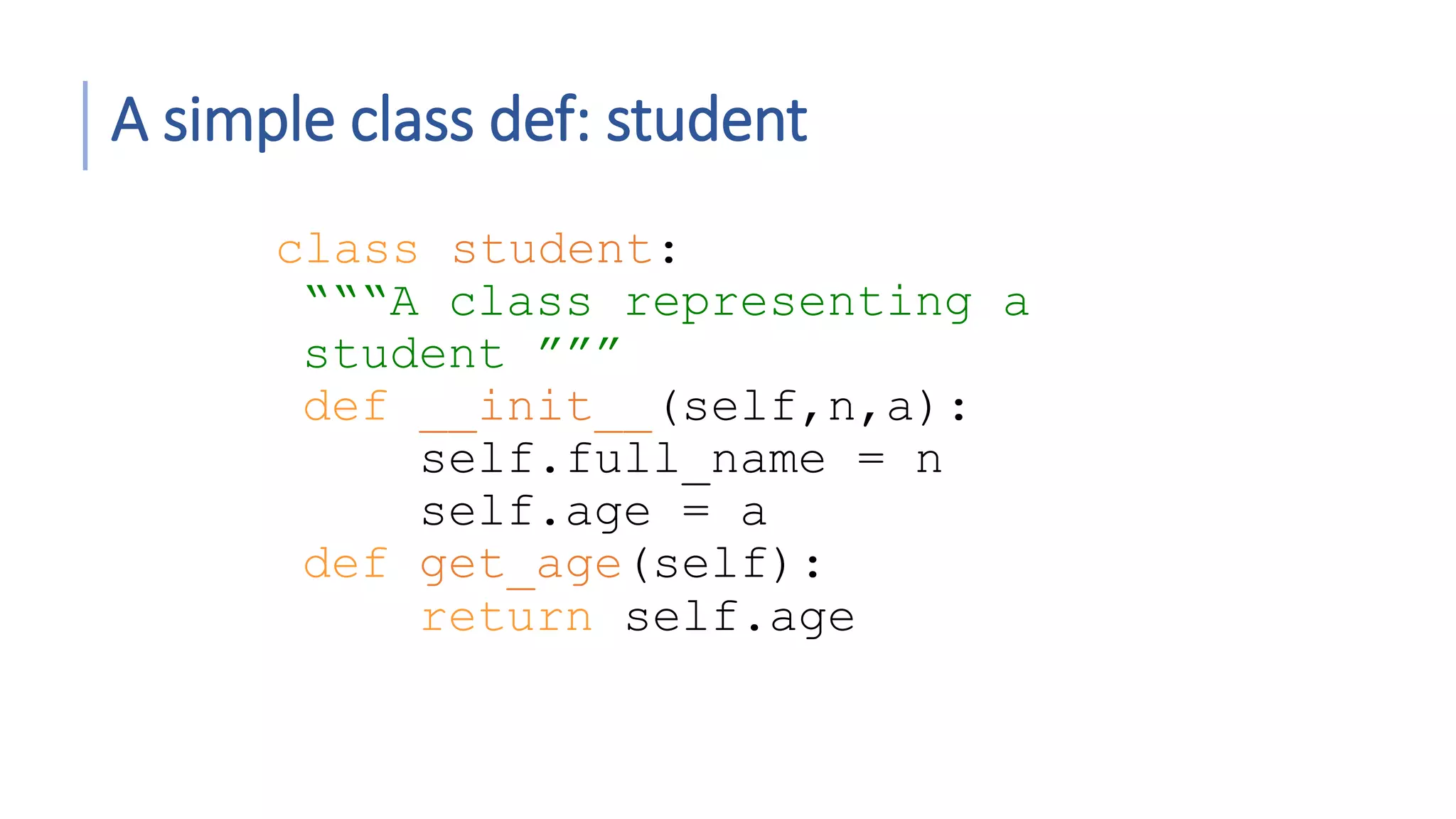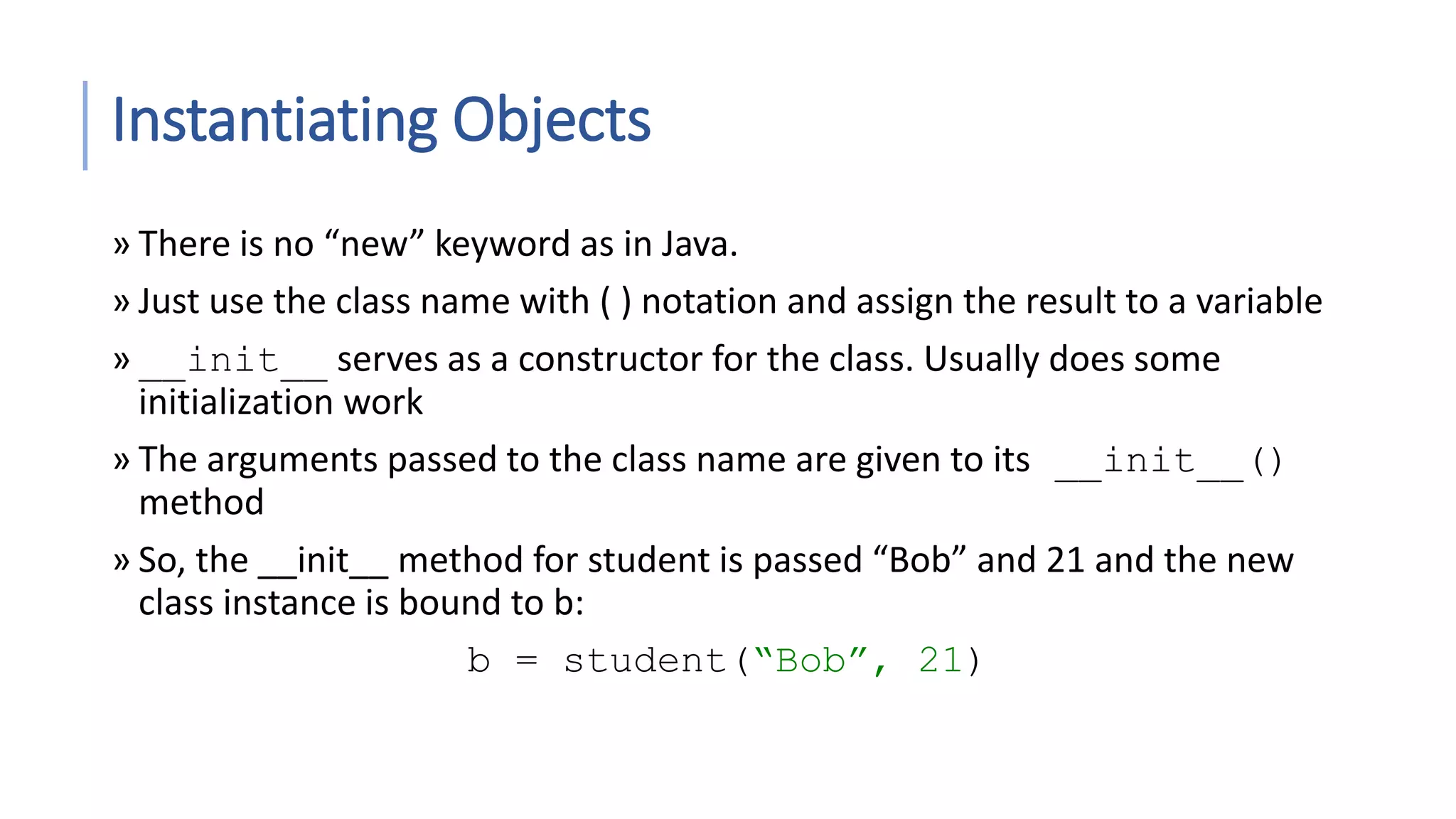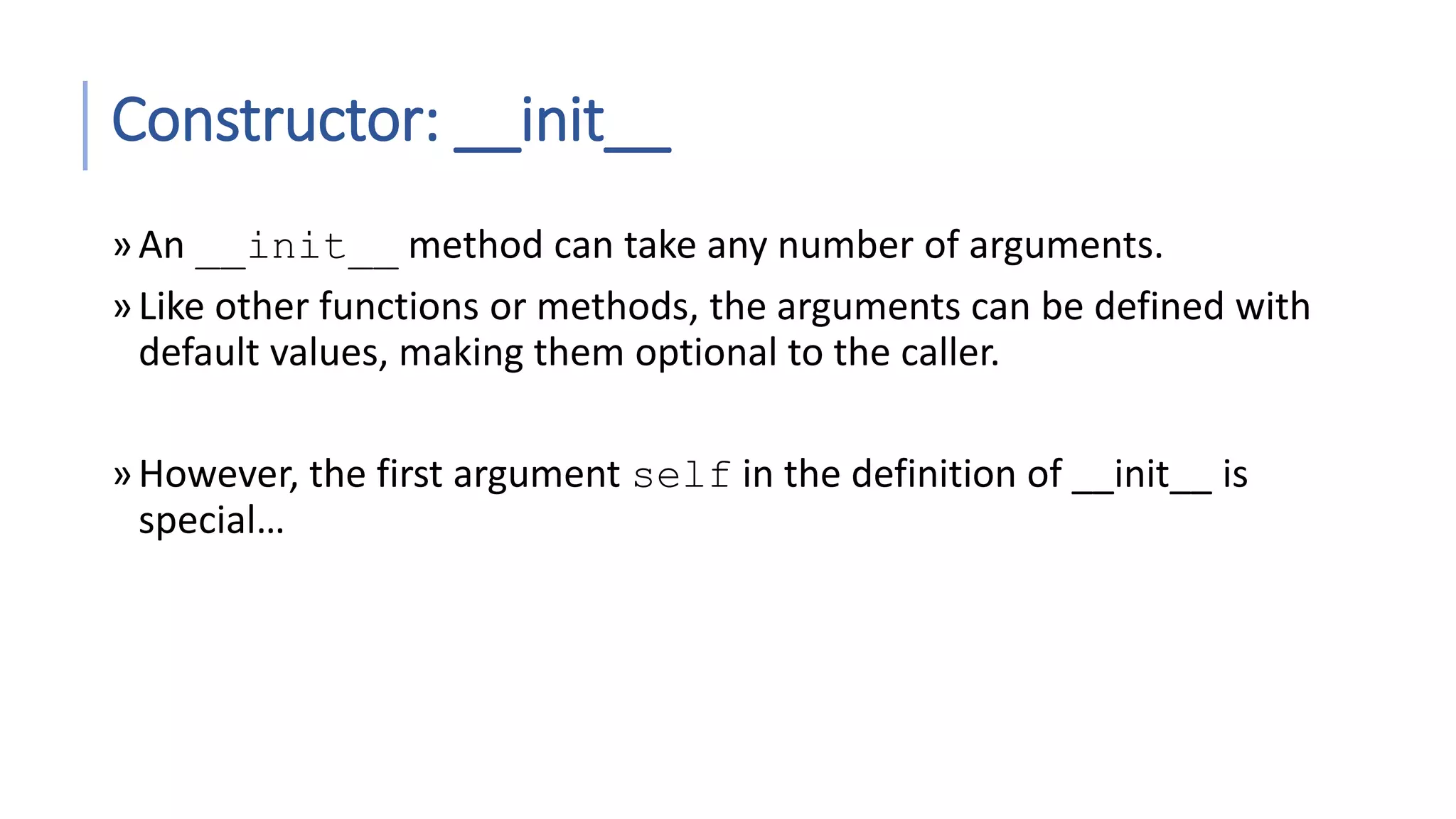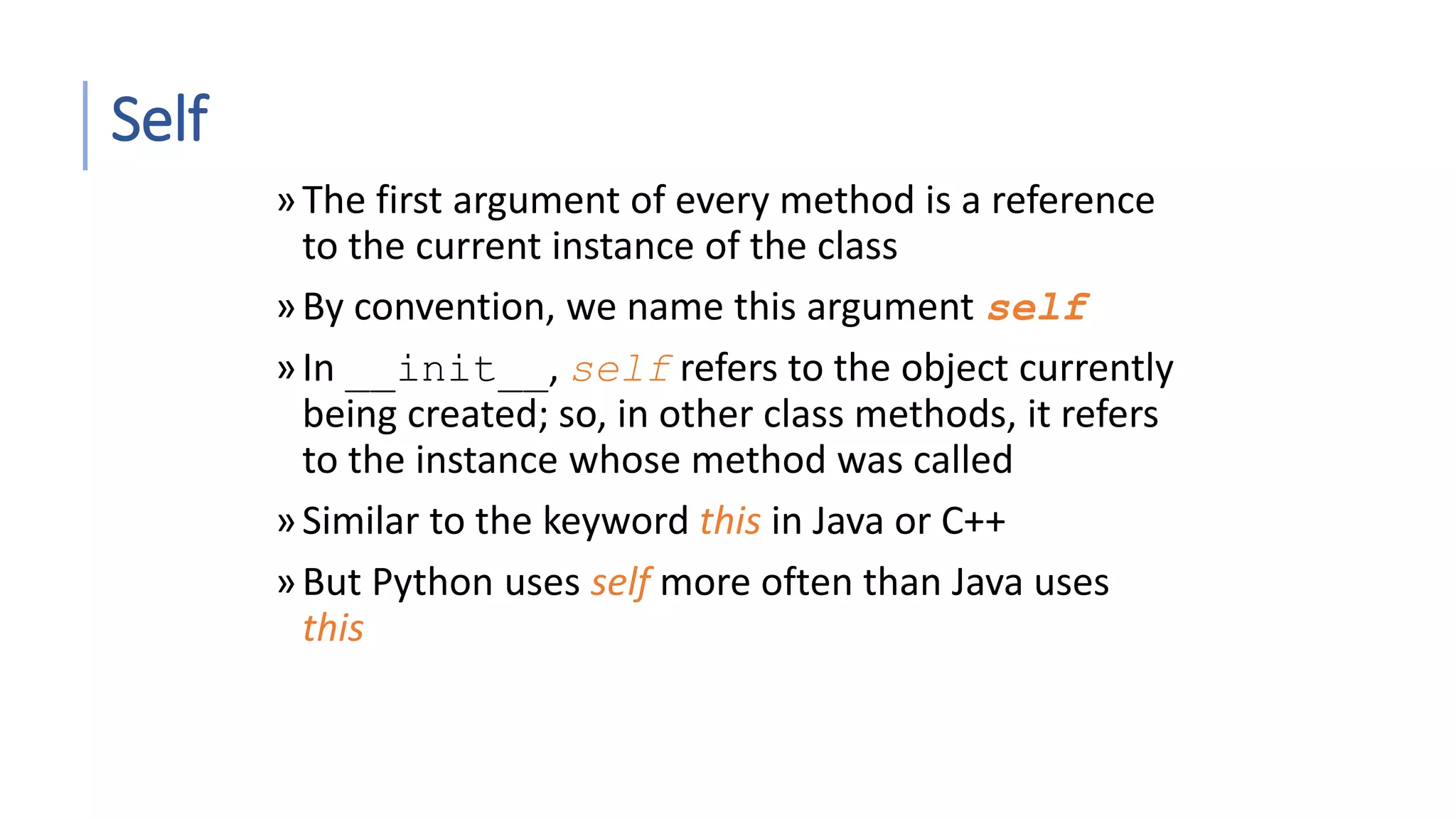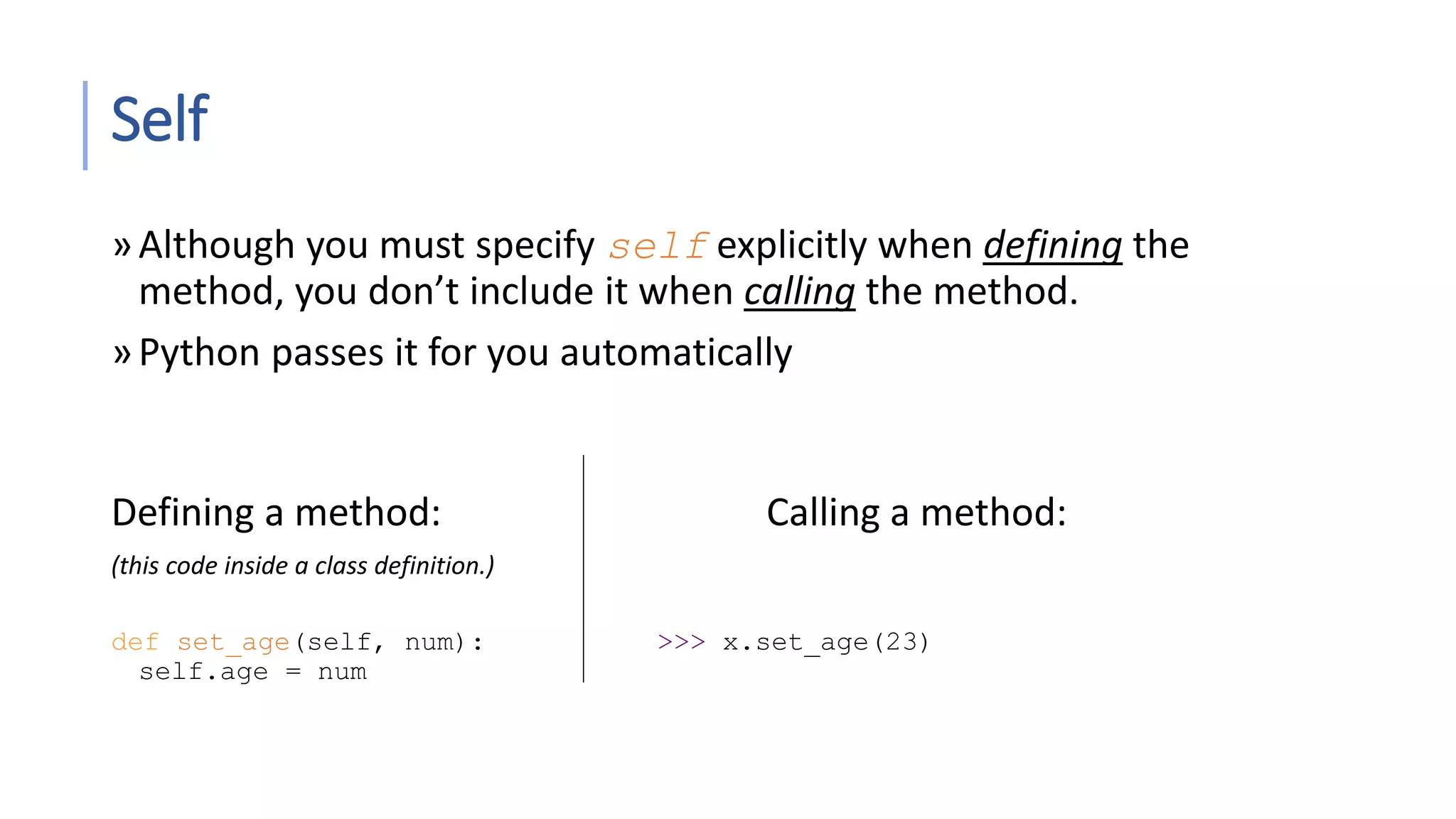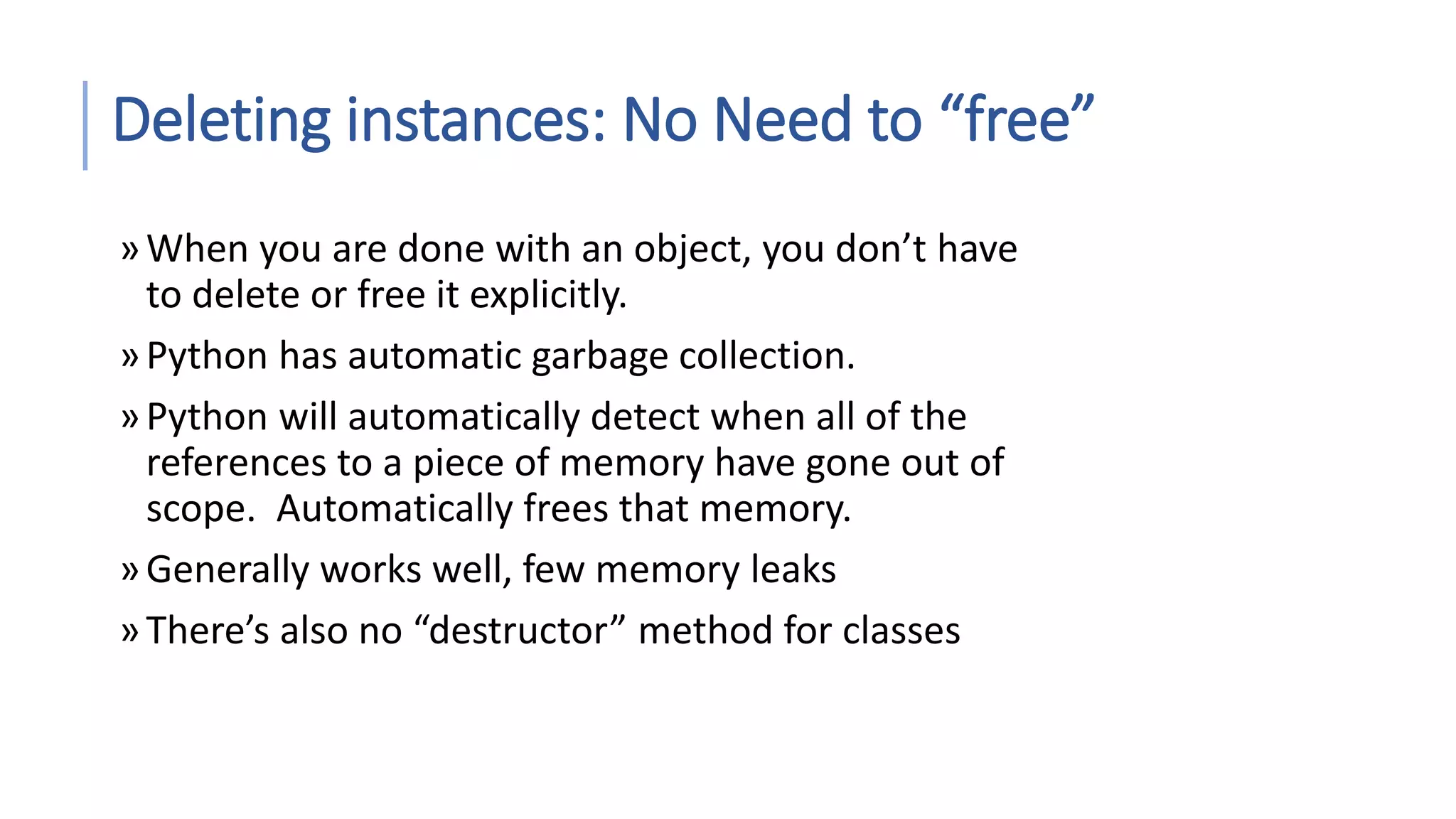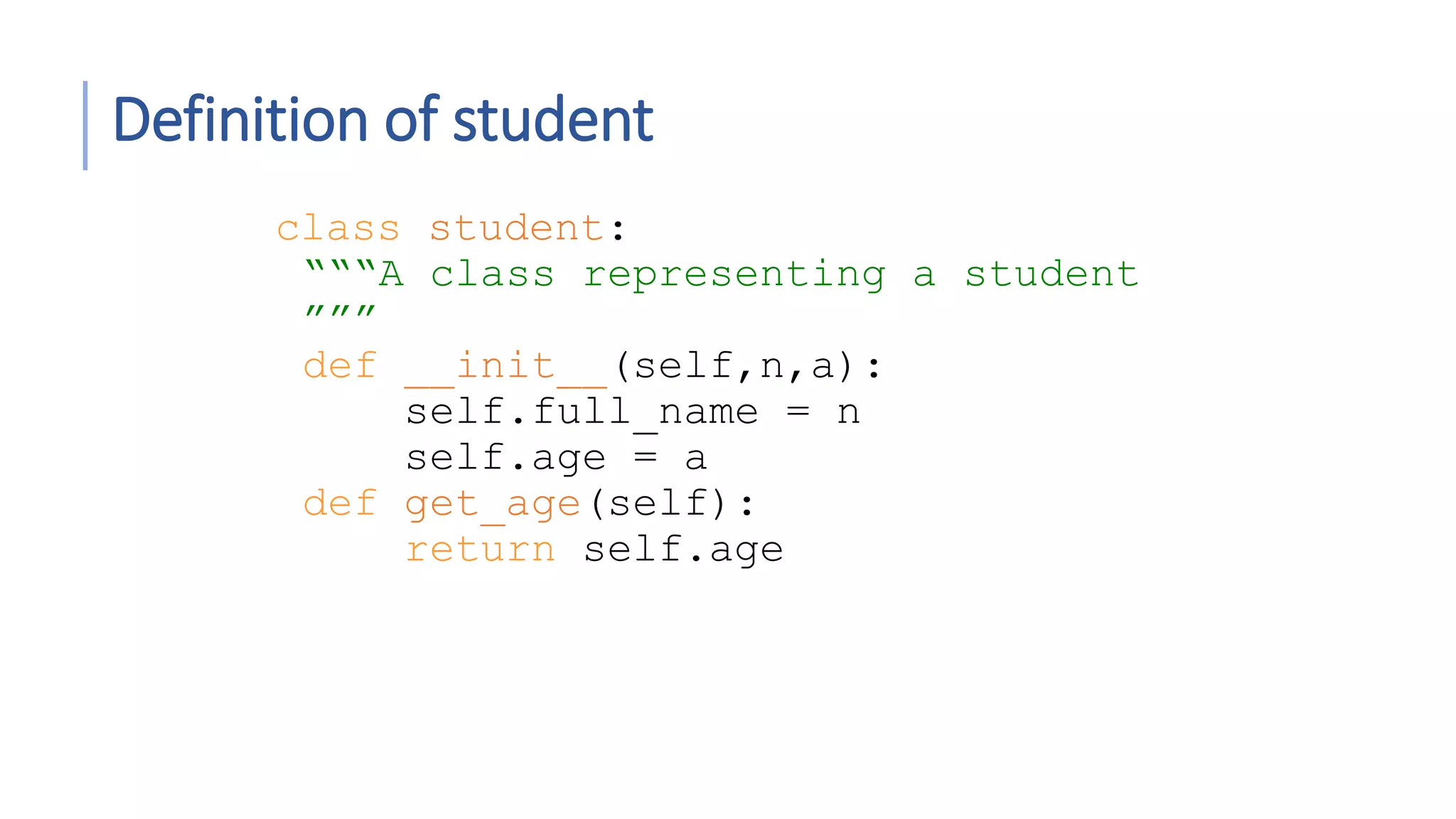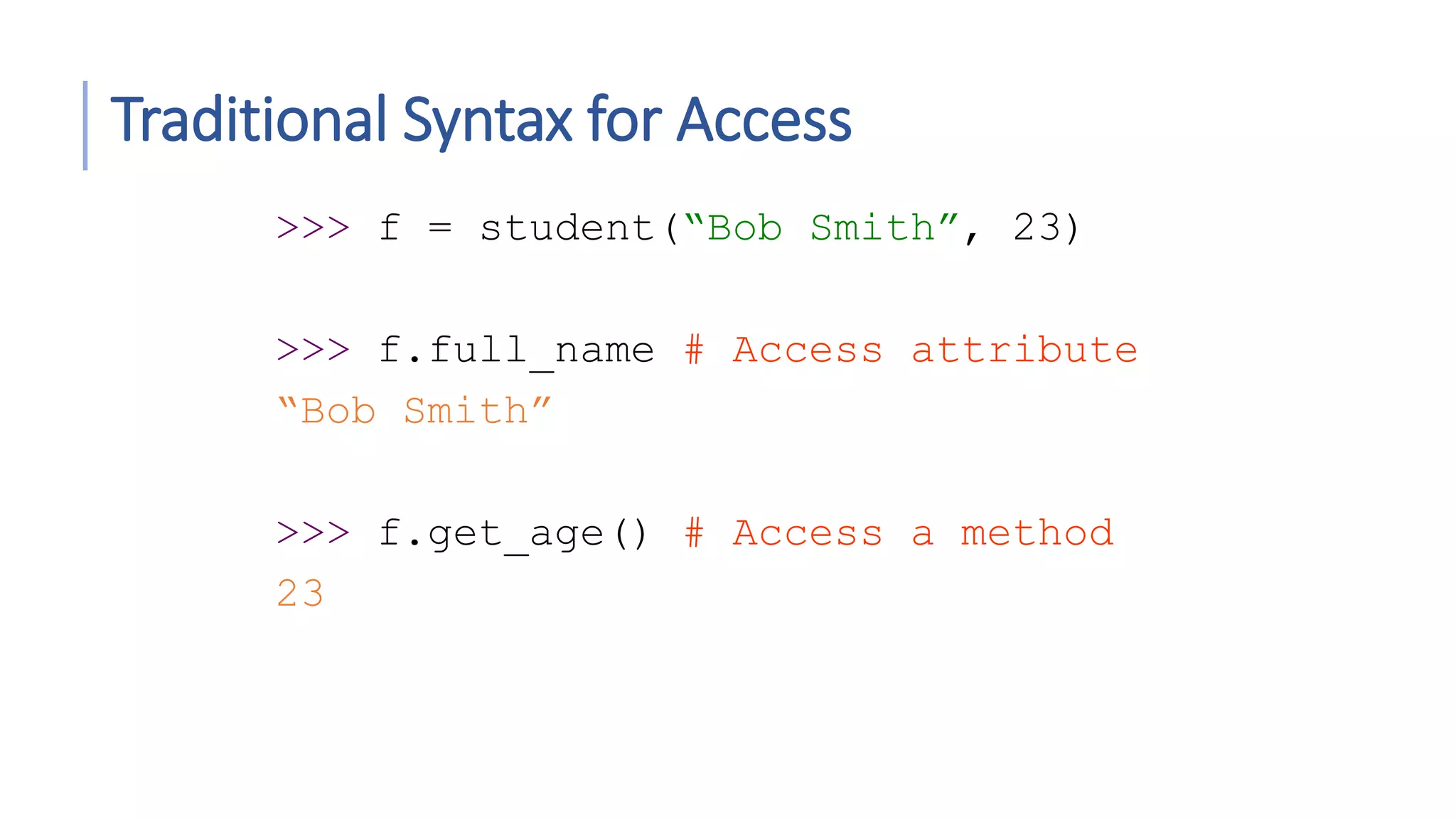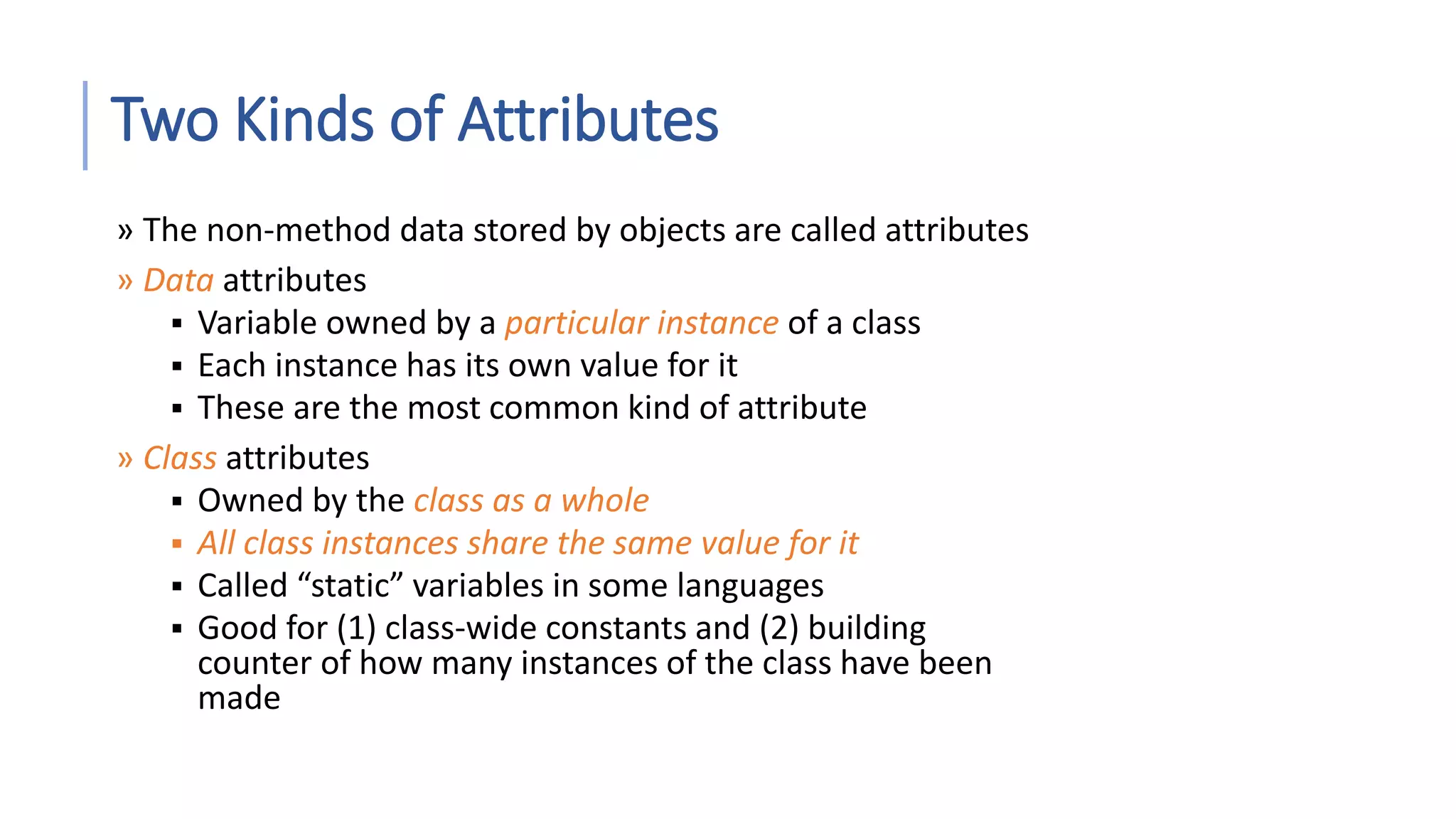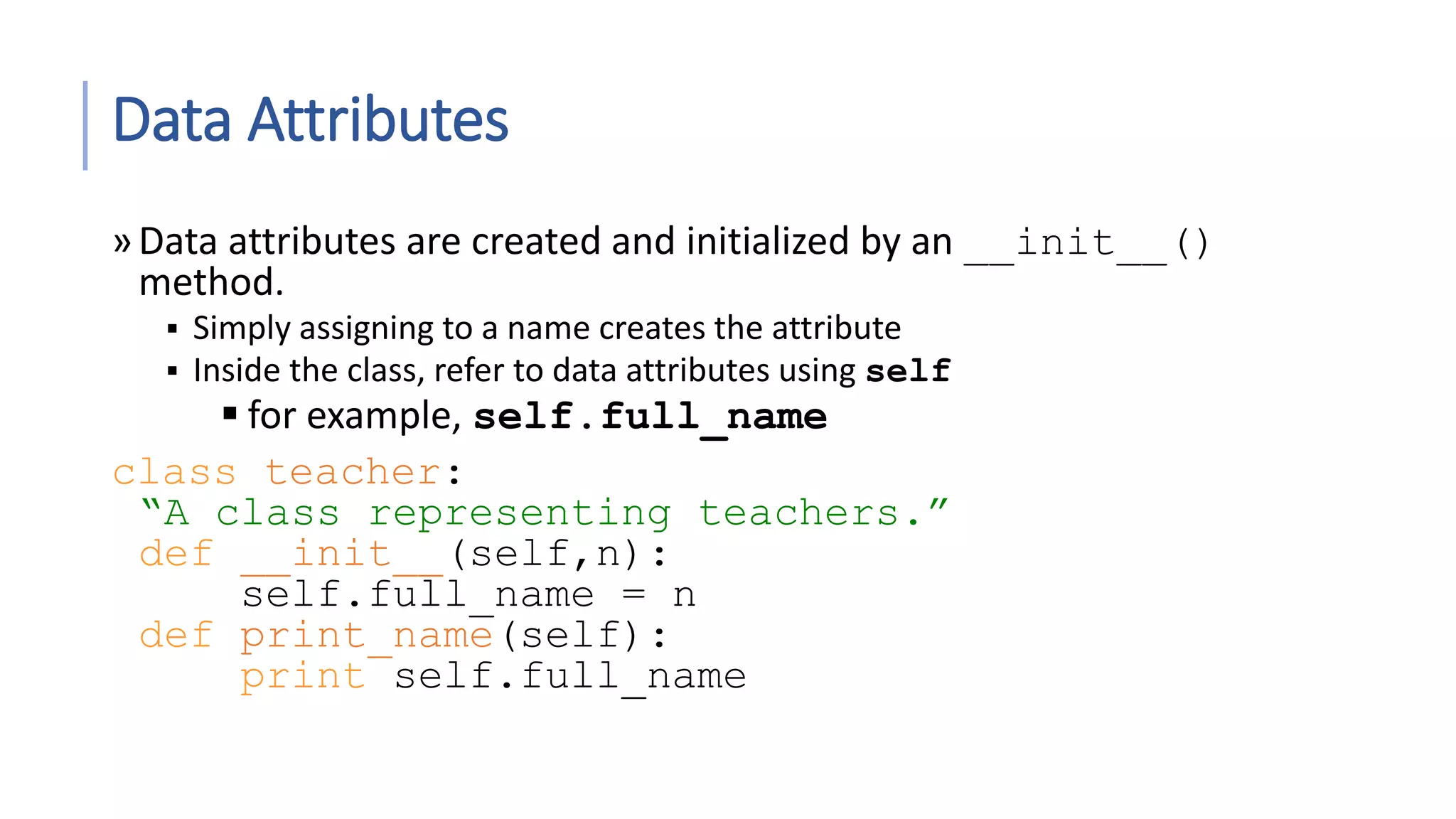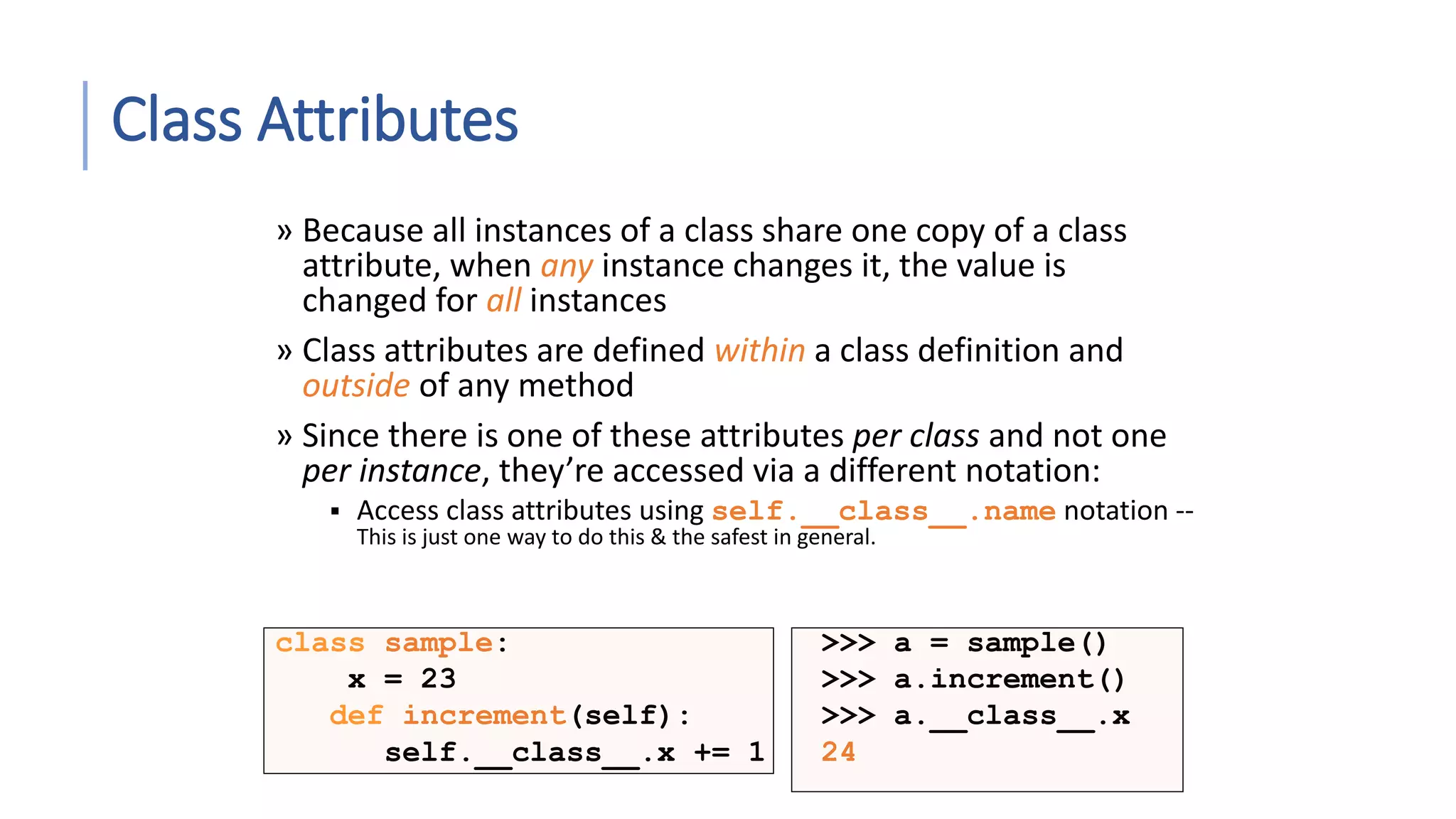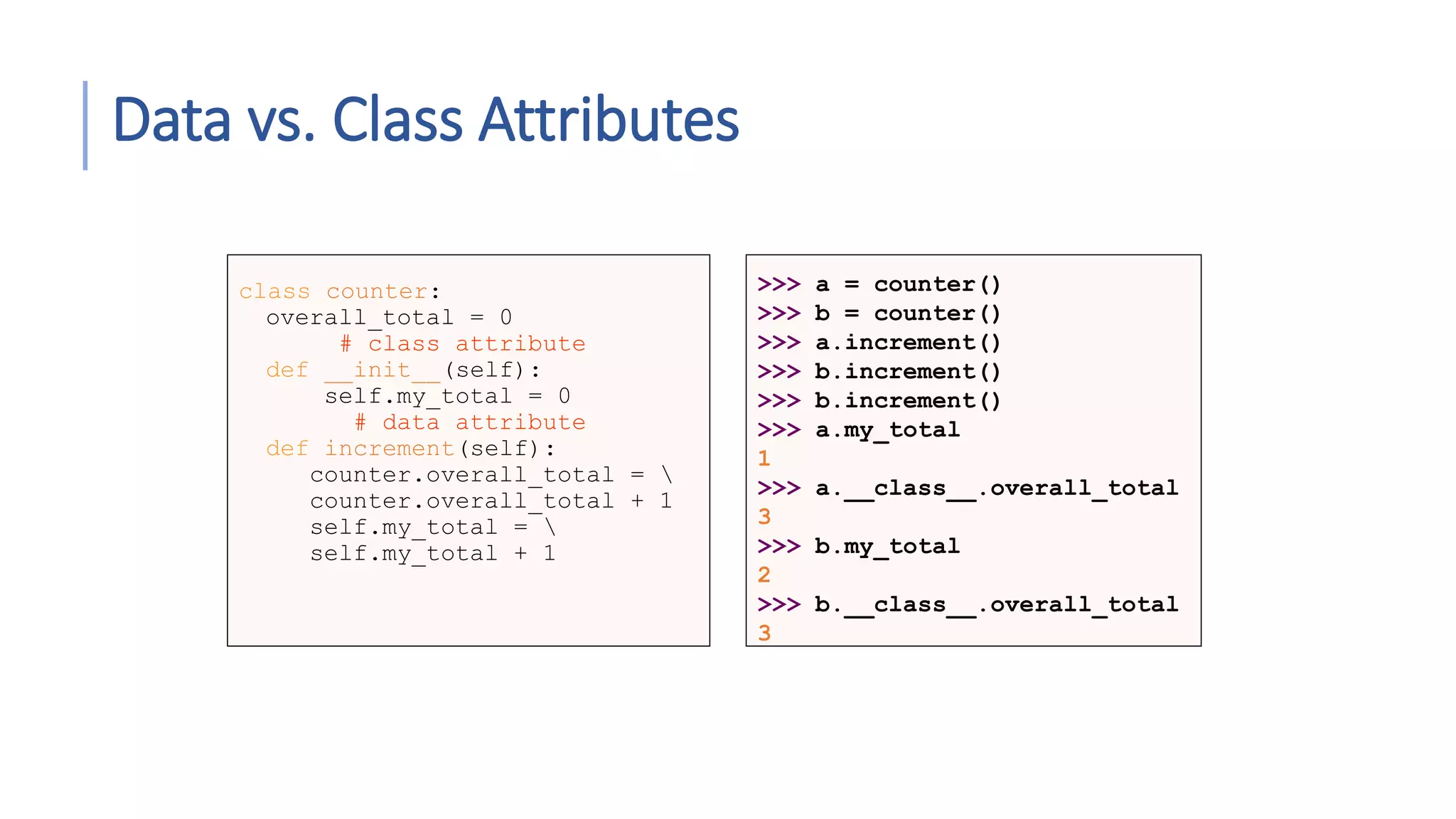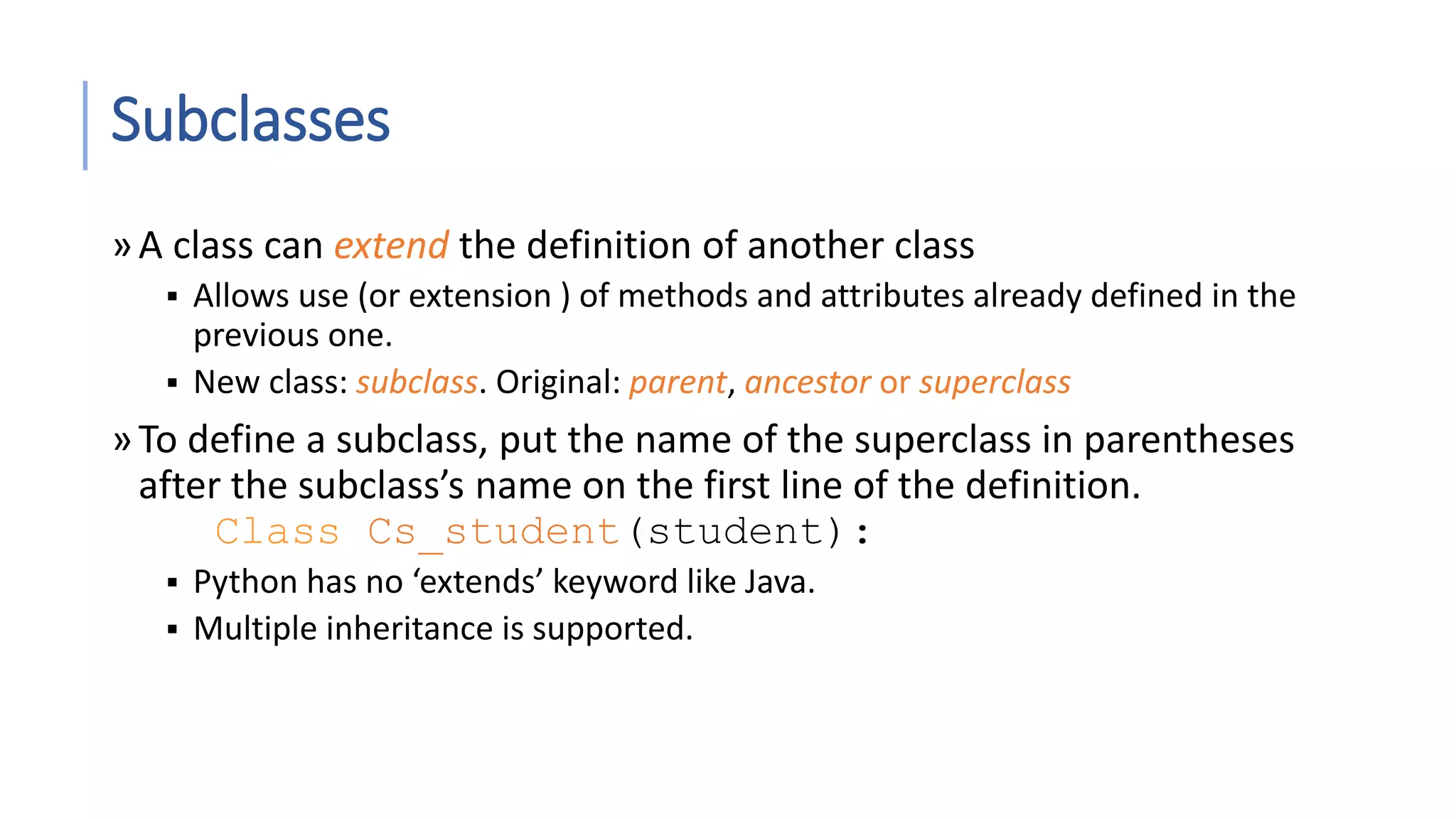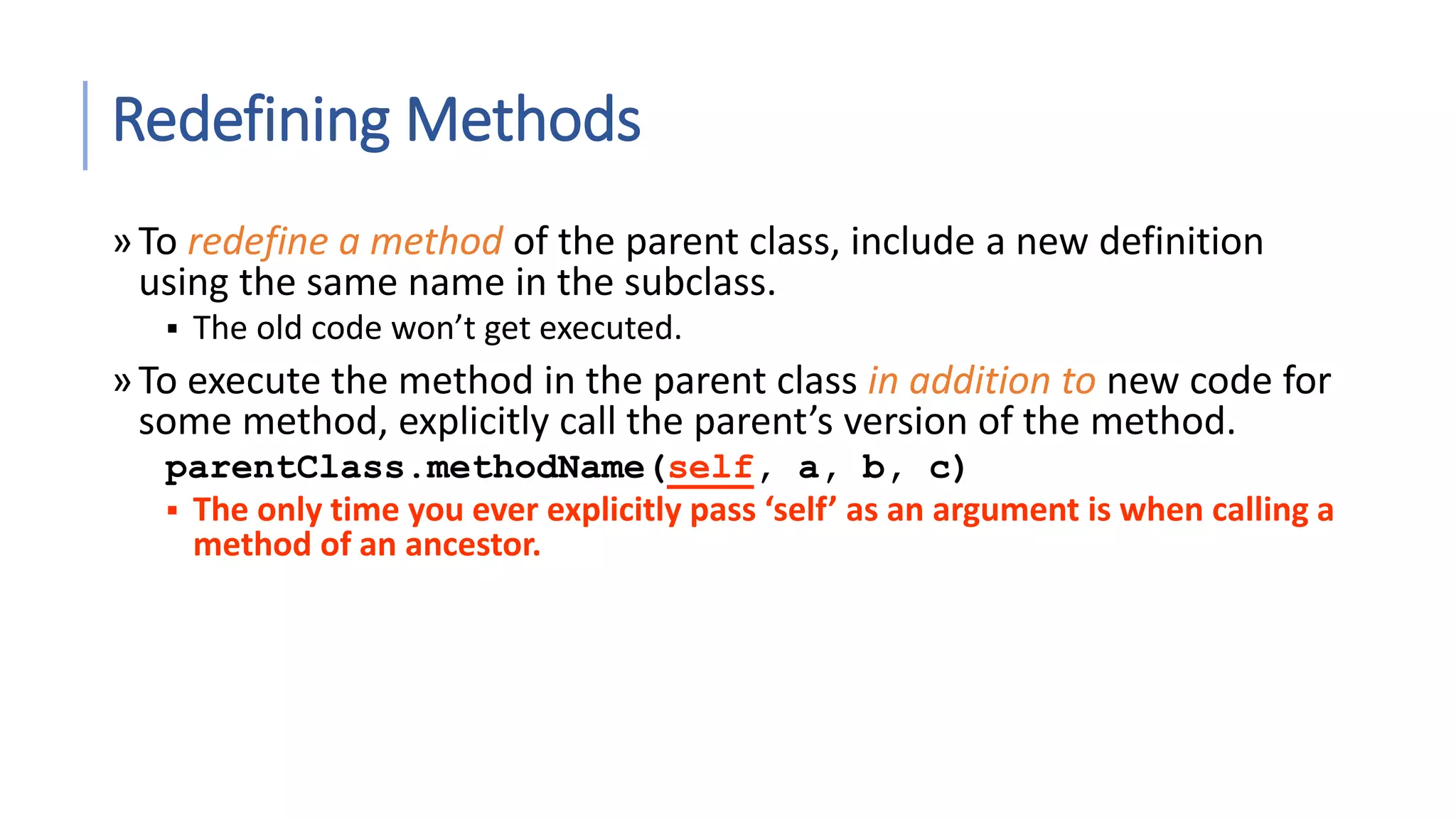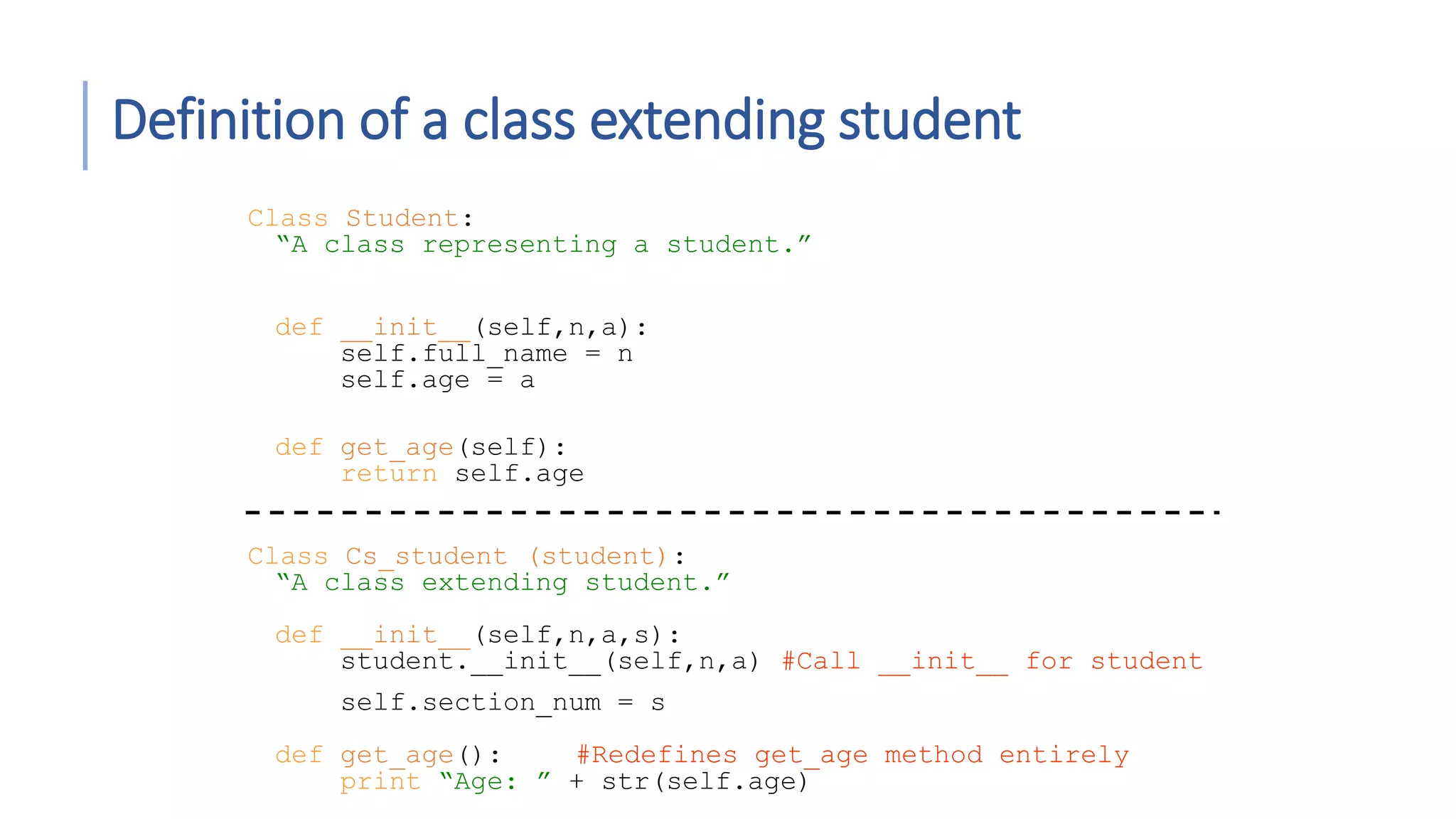This document provides an introduction to Python including: - The major versions of Python and their differences - Popular integrated development environments for Python - How to set up Python environments using Anaconda and Eclipse - An overview of Python basics like variables, numbers, strings, lists, dictionaries, modules and functions - Examples of Python control flow structures like conditionals and loops
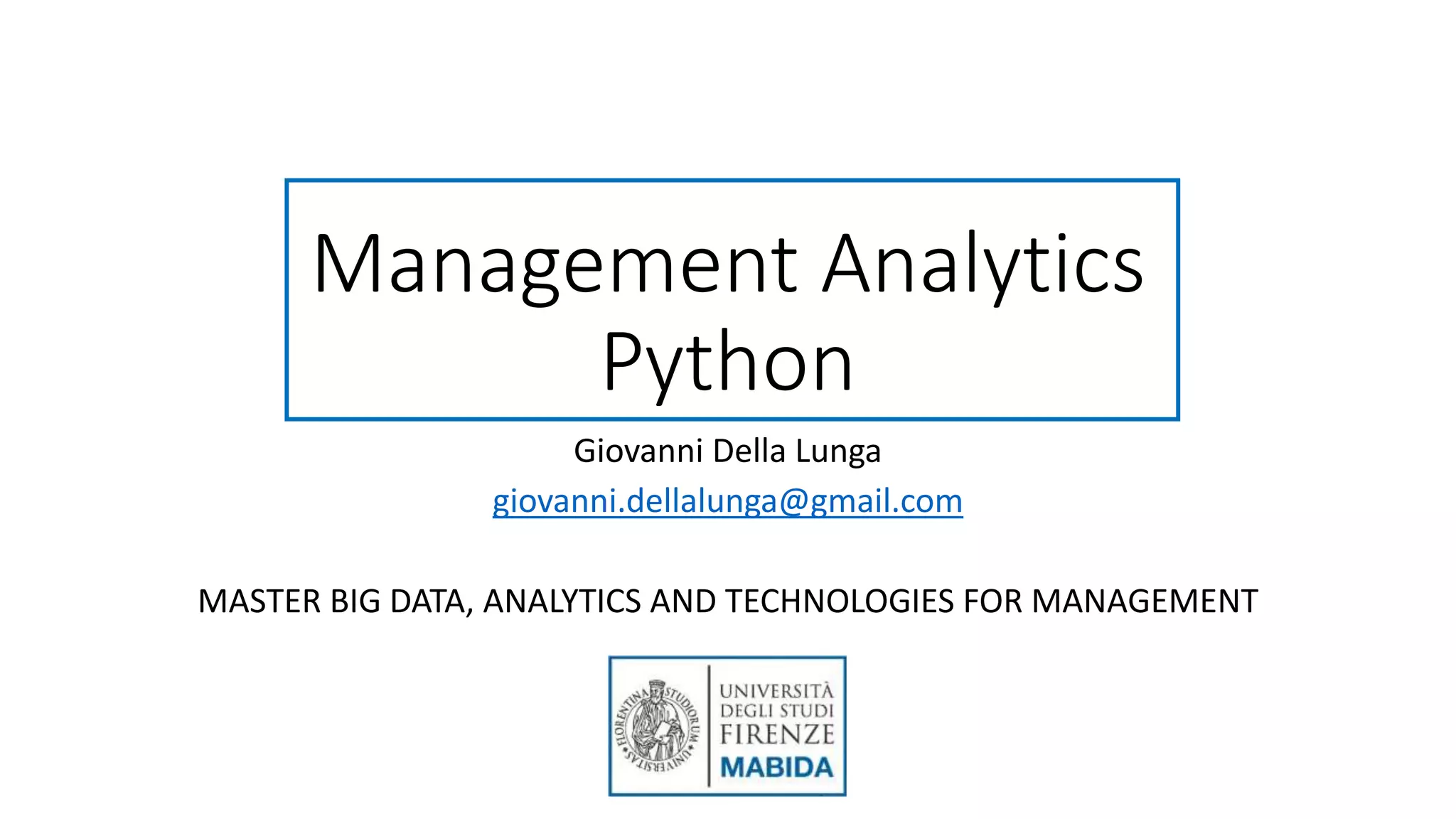
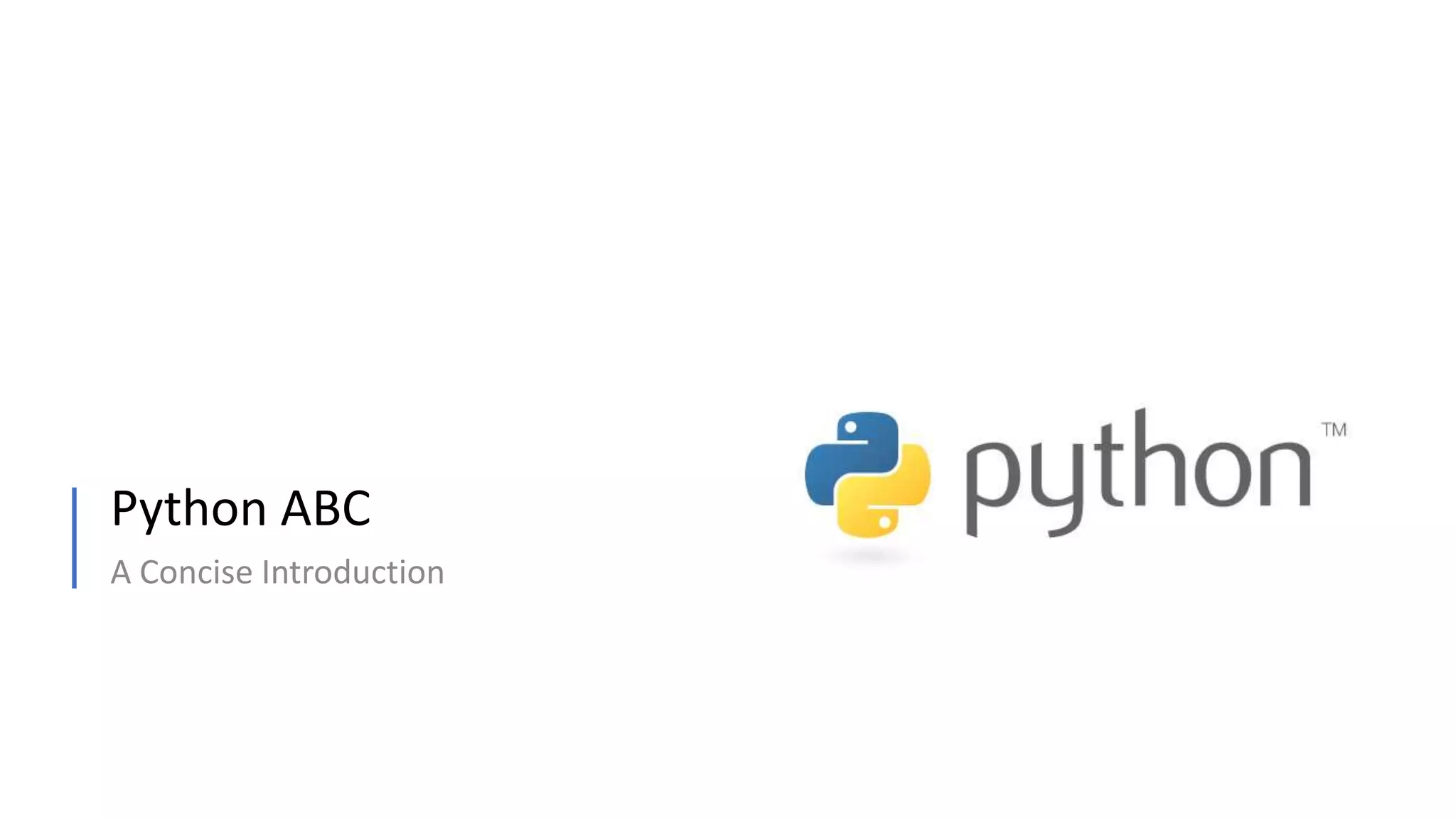
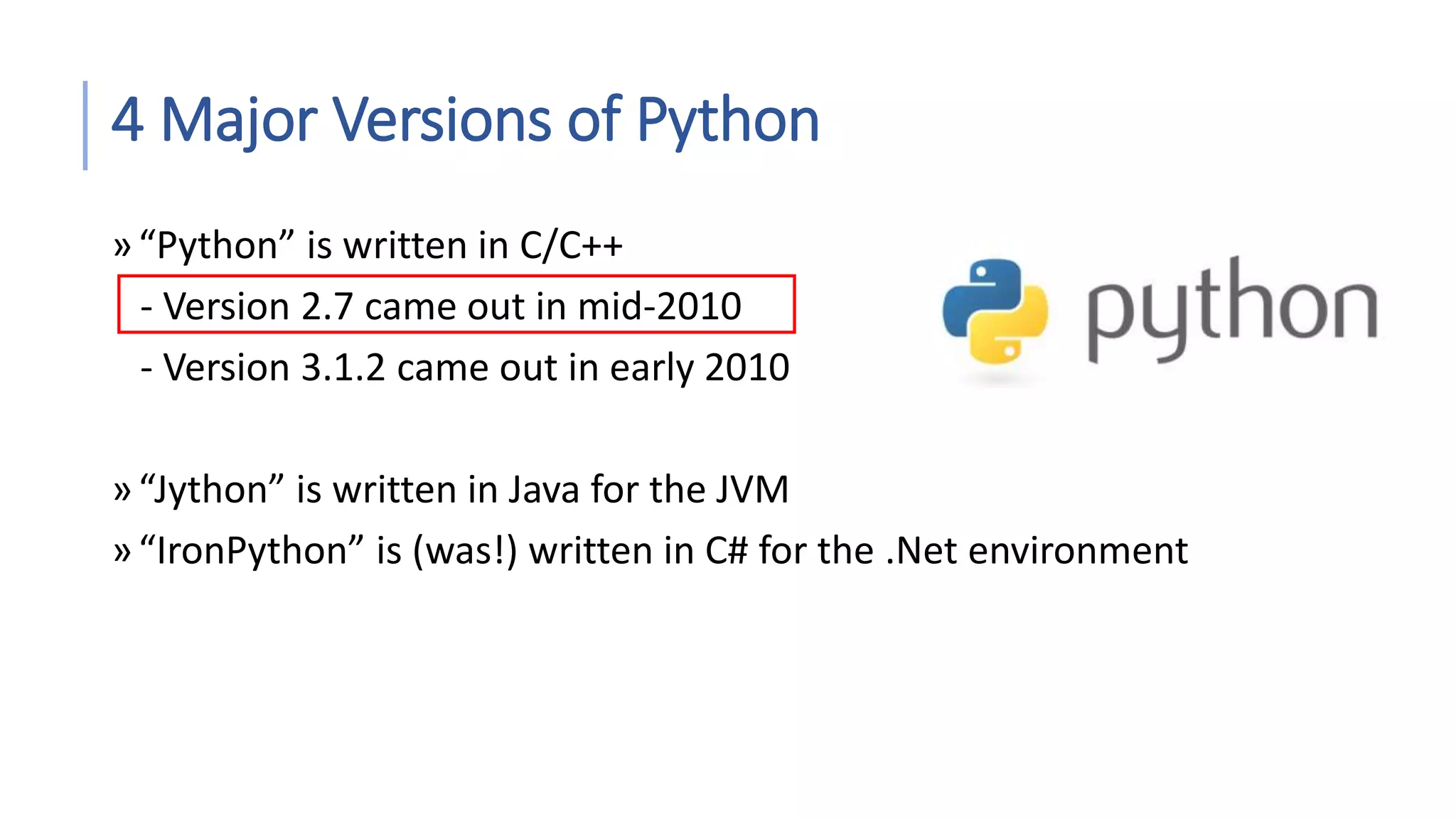
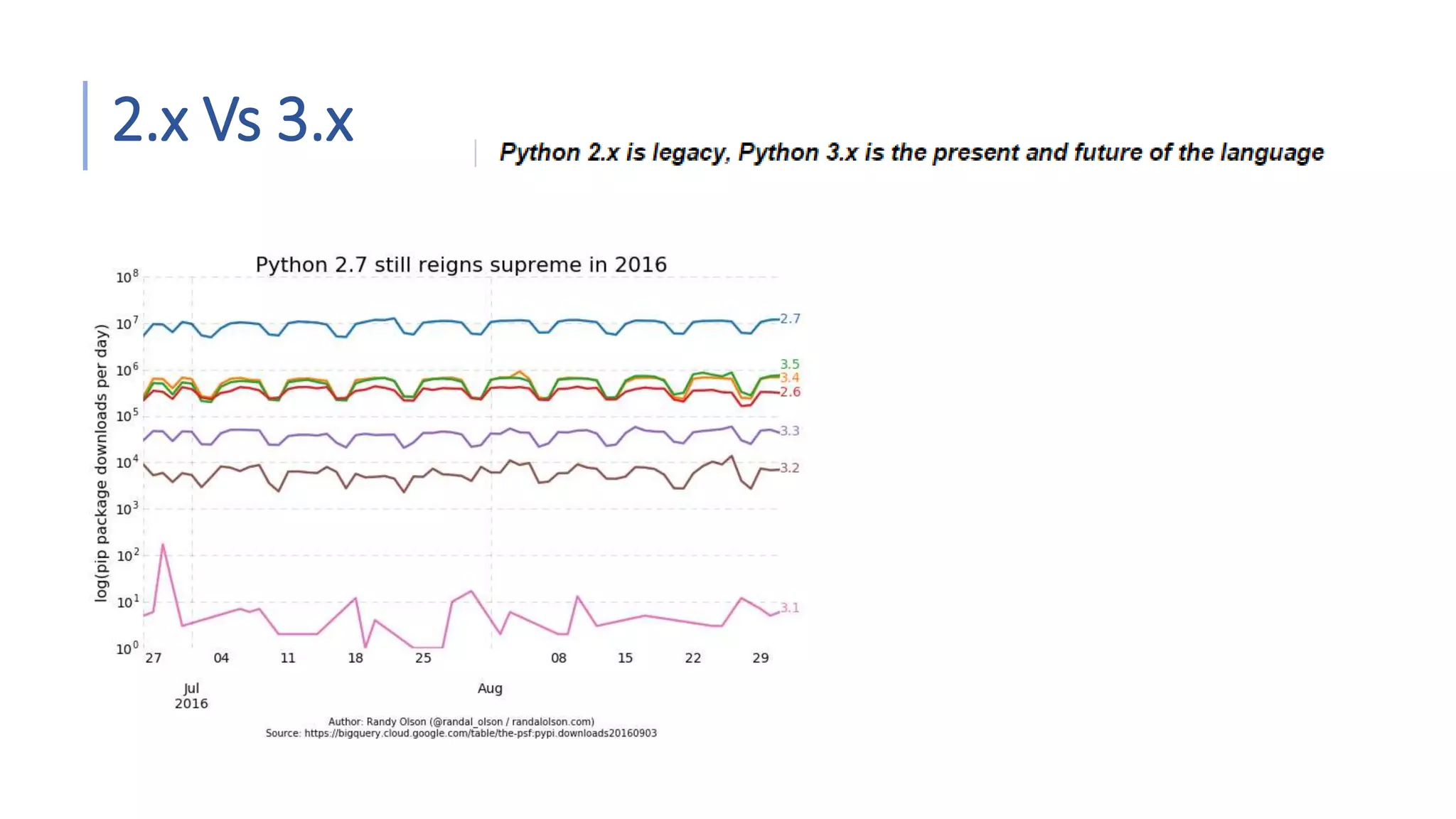
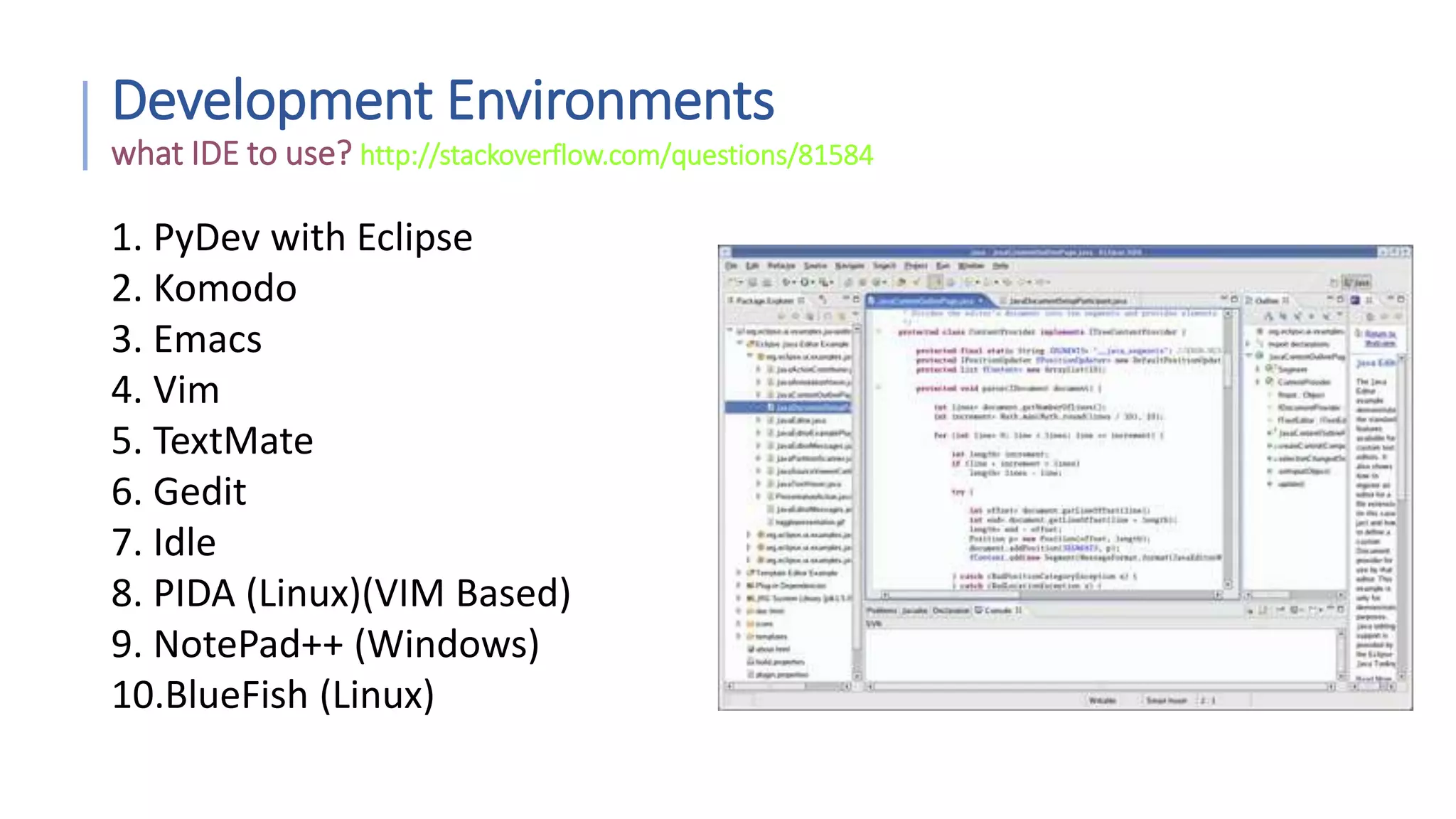
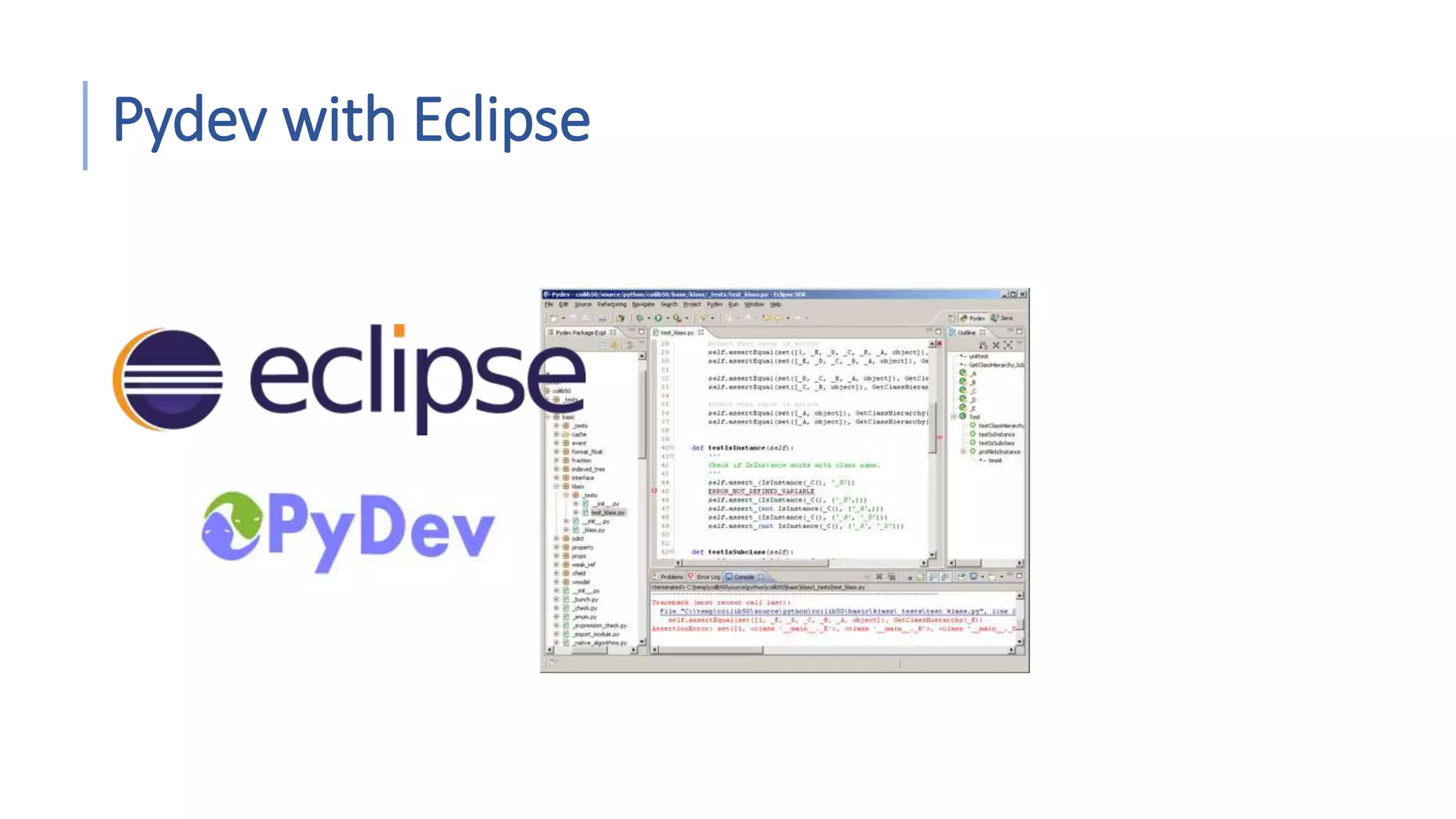
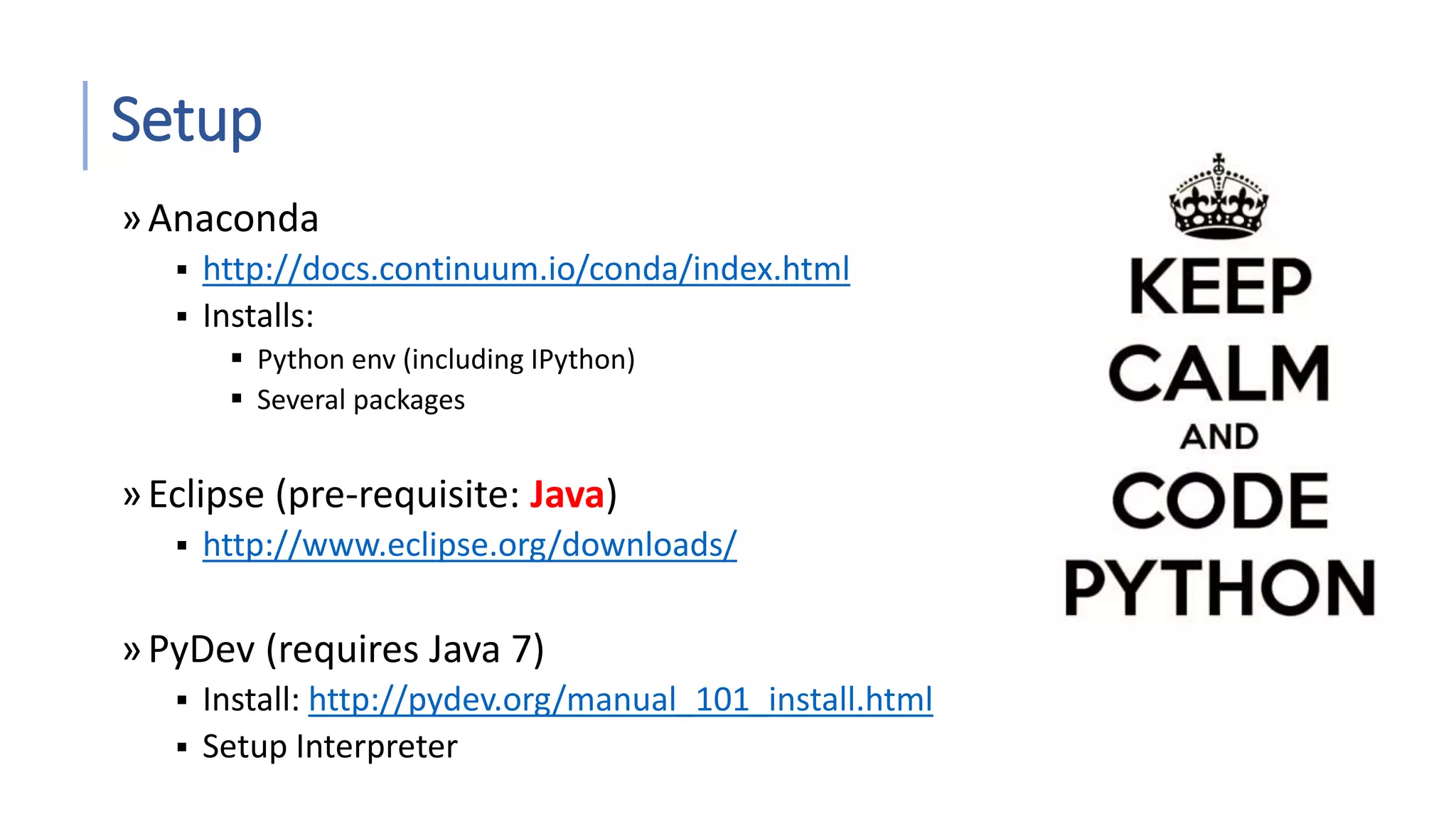
![Python Interactive Shell % python Python 2.6.1 (r261:67515, Feb 11 2010, 00:51:29) [GCC 4.2.1 (Apple Inc. build 5646)] on darwin Type "help", "copyright", "credits" or "license" for more information. >>> You can type things directly into a running Python session >>> 2+3*4 14 >>> name = "Andrew" >>> name 'Andrew' >>> print "Hello", name Hello Andrew >>>](https://image.slidesharecdn.com/introductiontopythonprogramming-1-180316224435/75/Introduction-to-python-programming-1-8-2048.jpg)
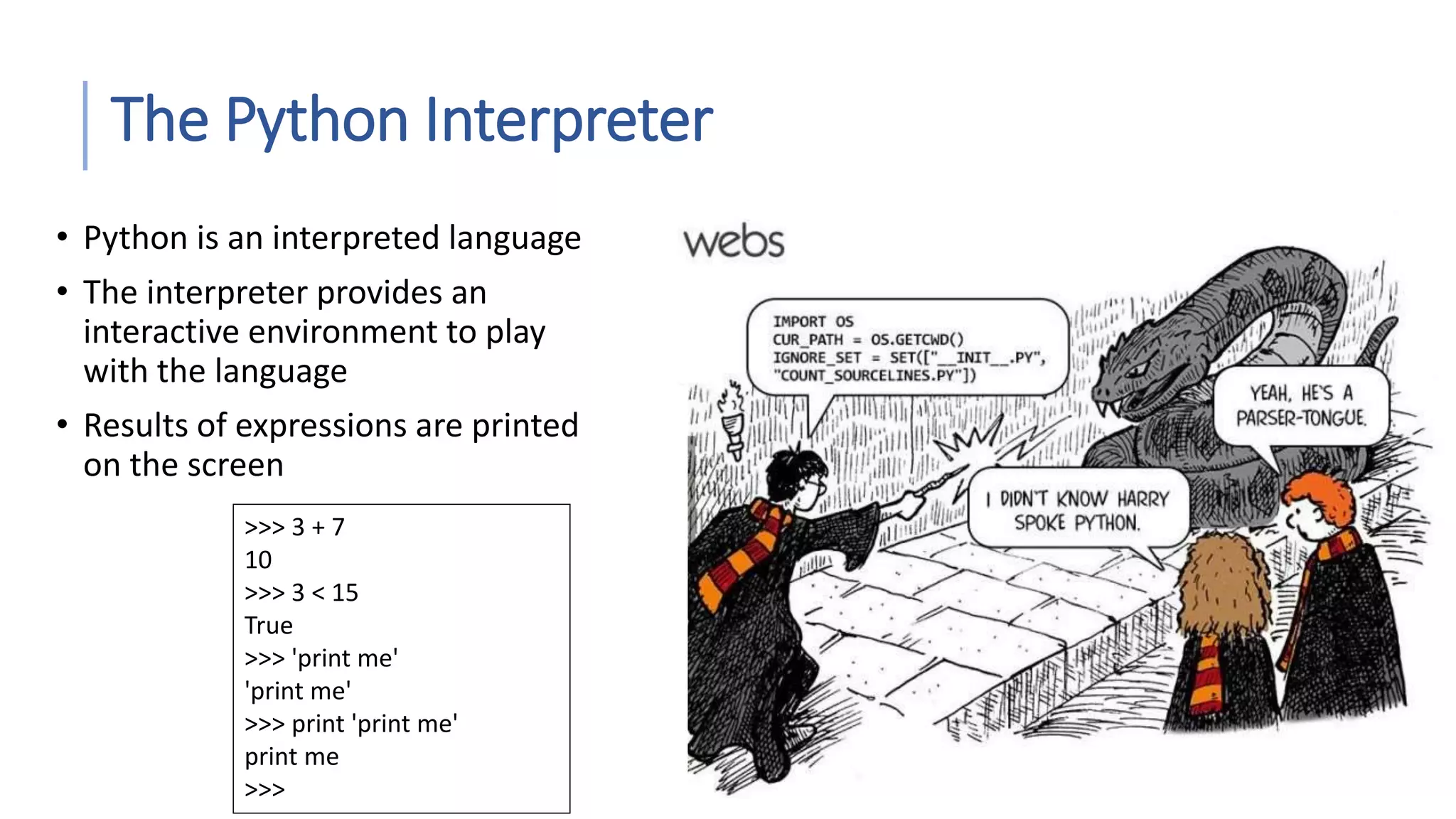
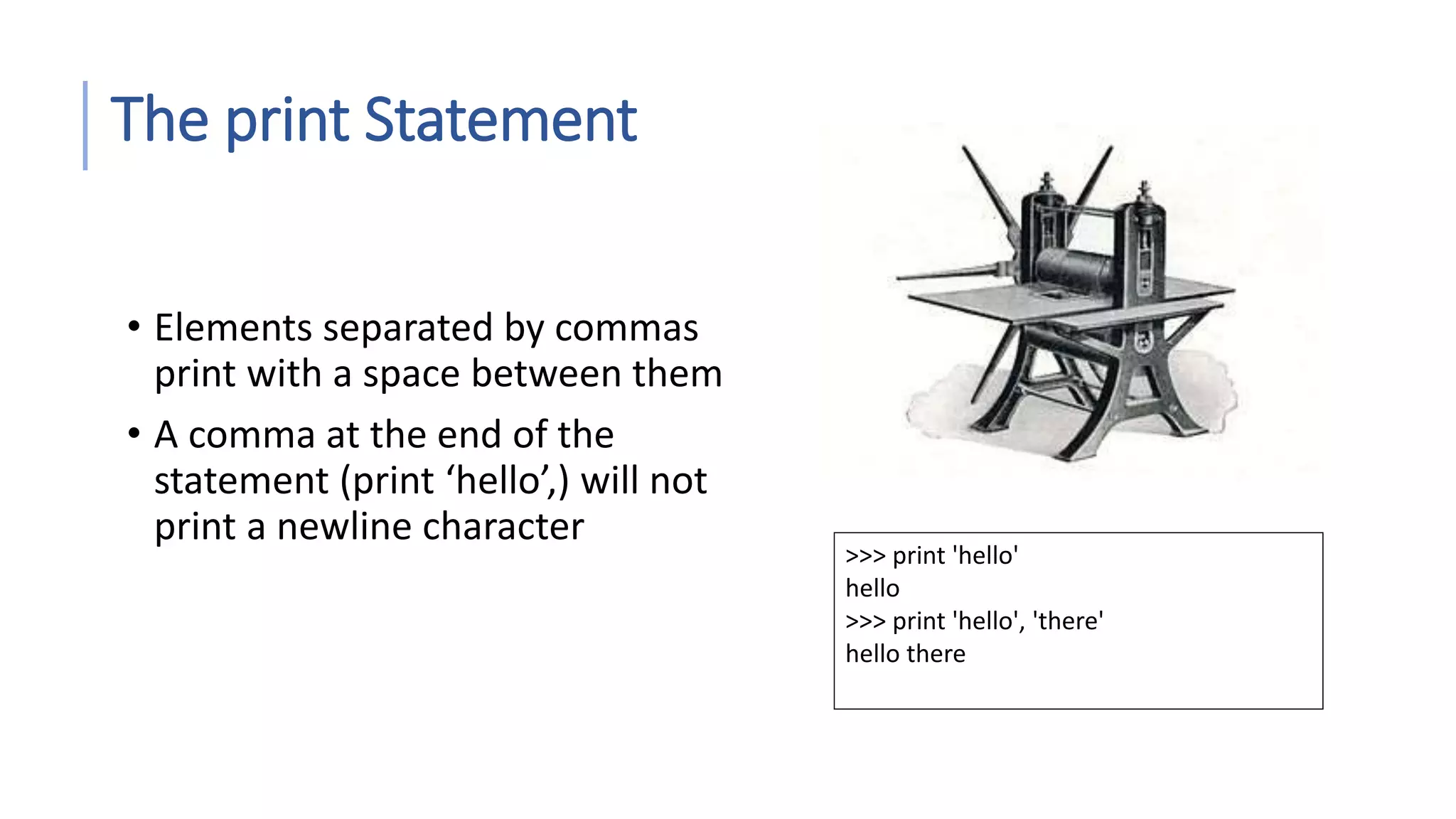
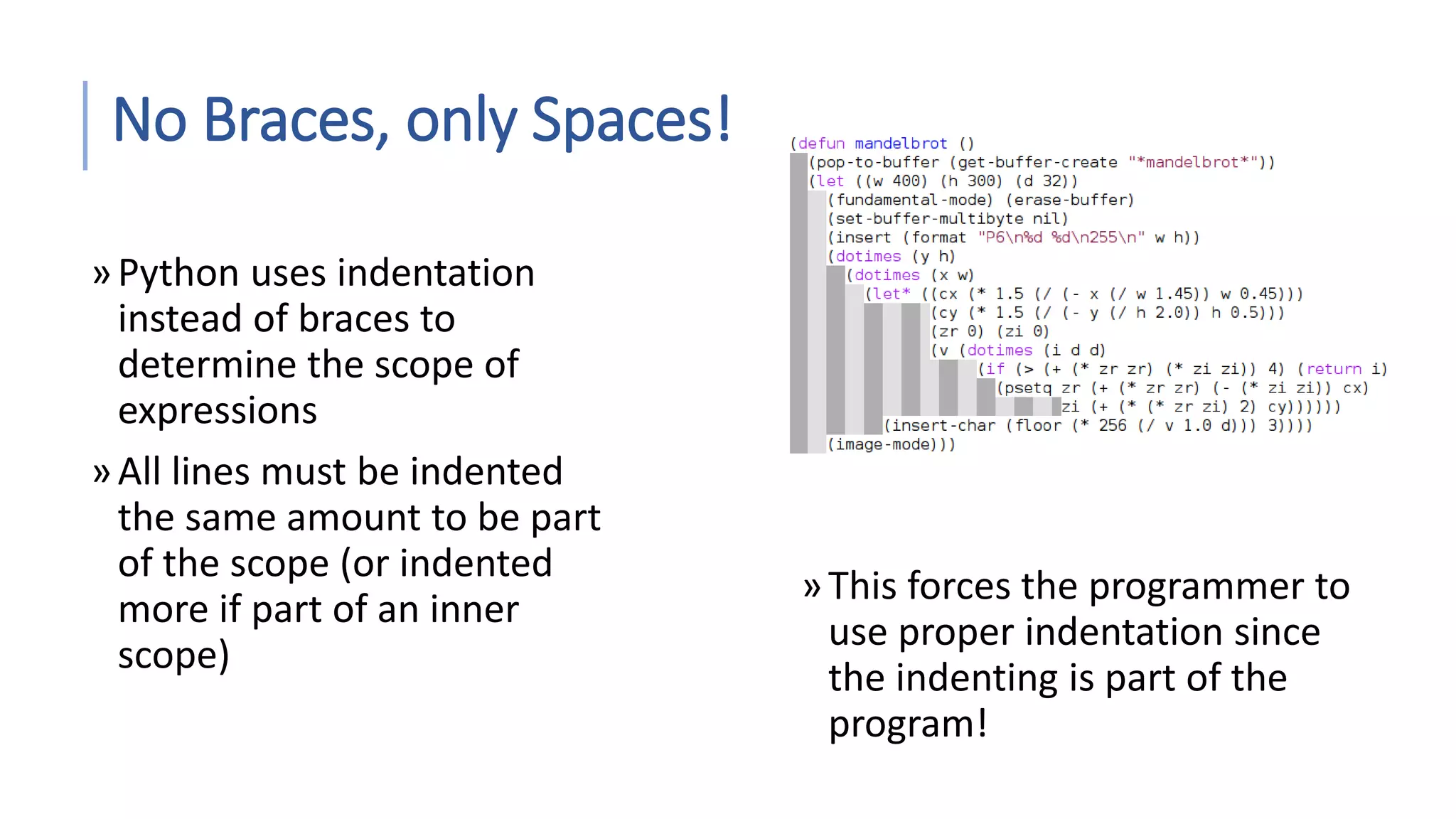
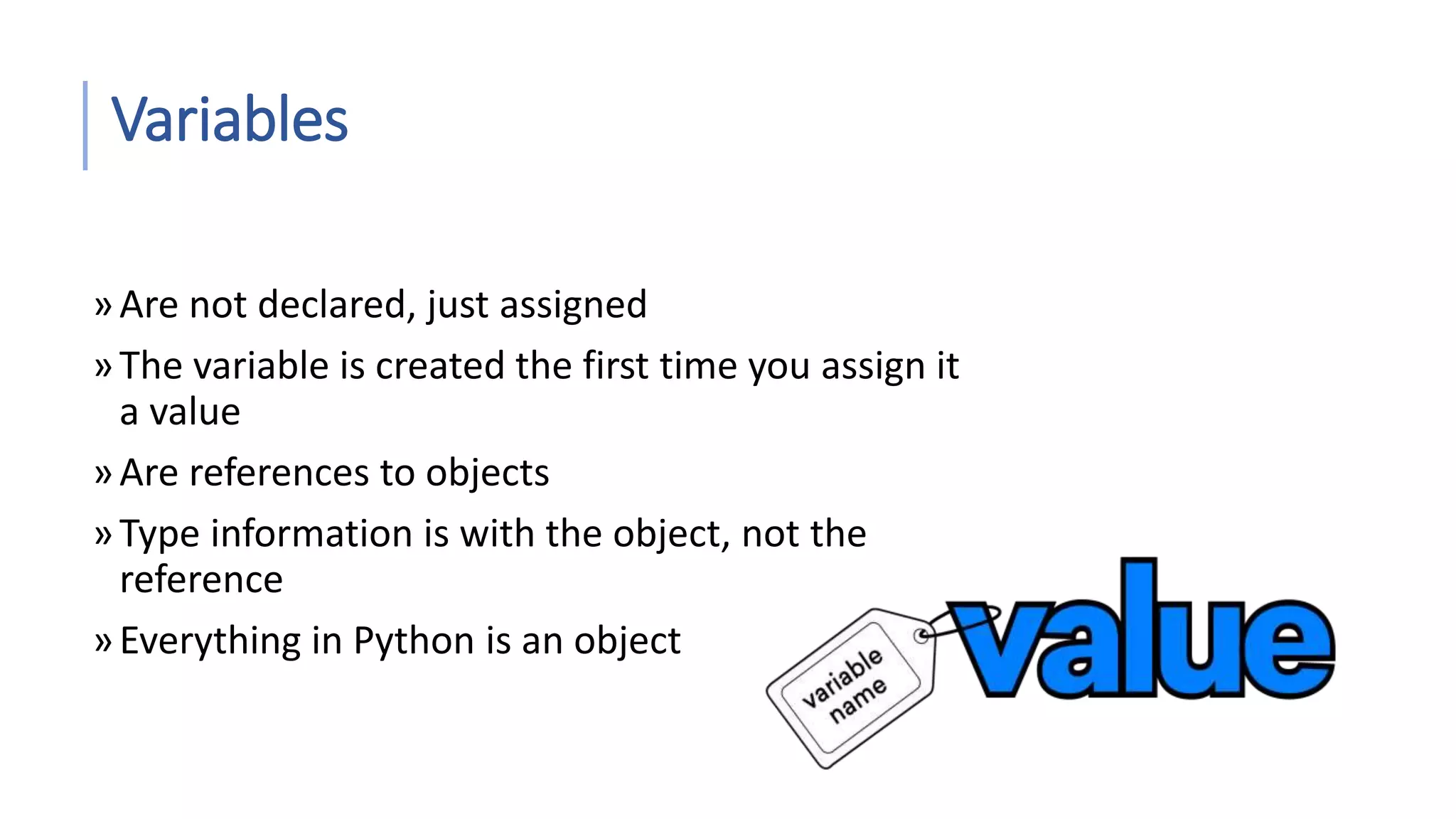
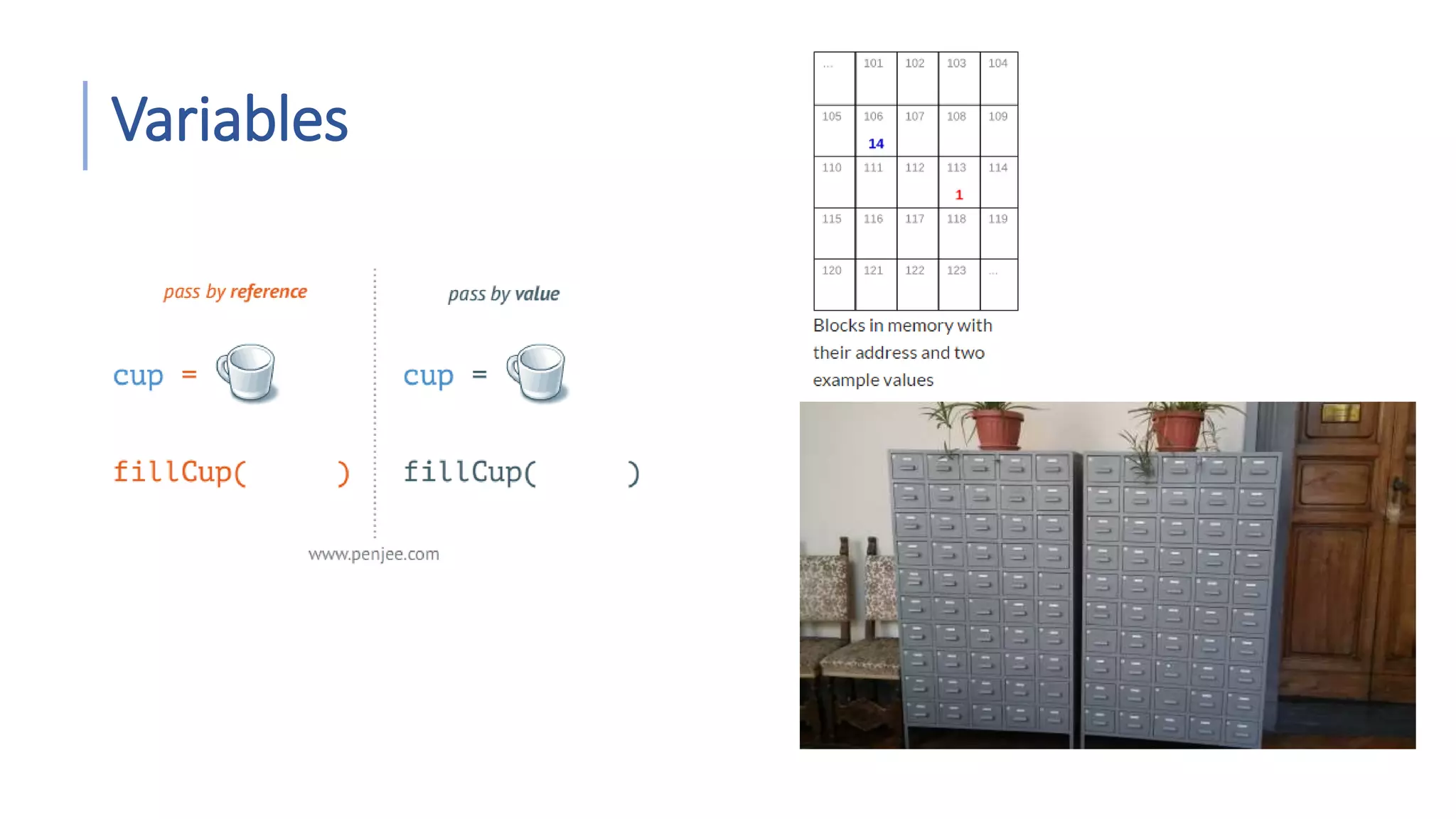
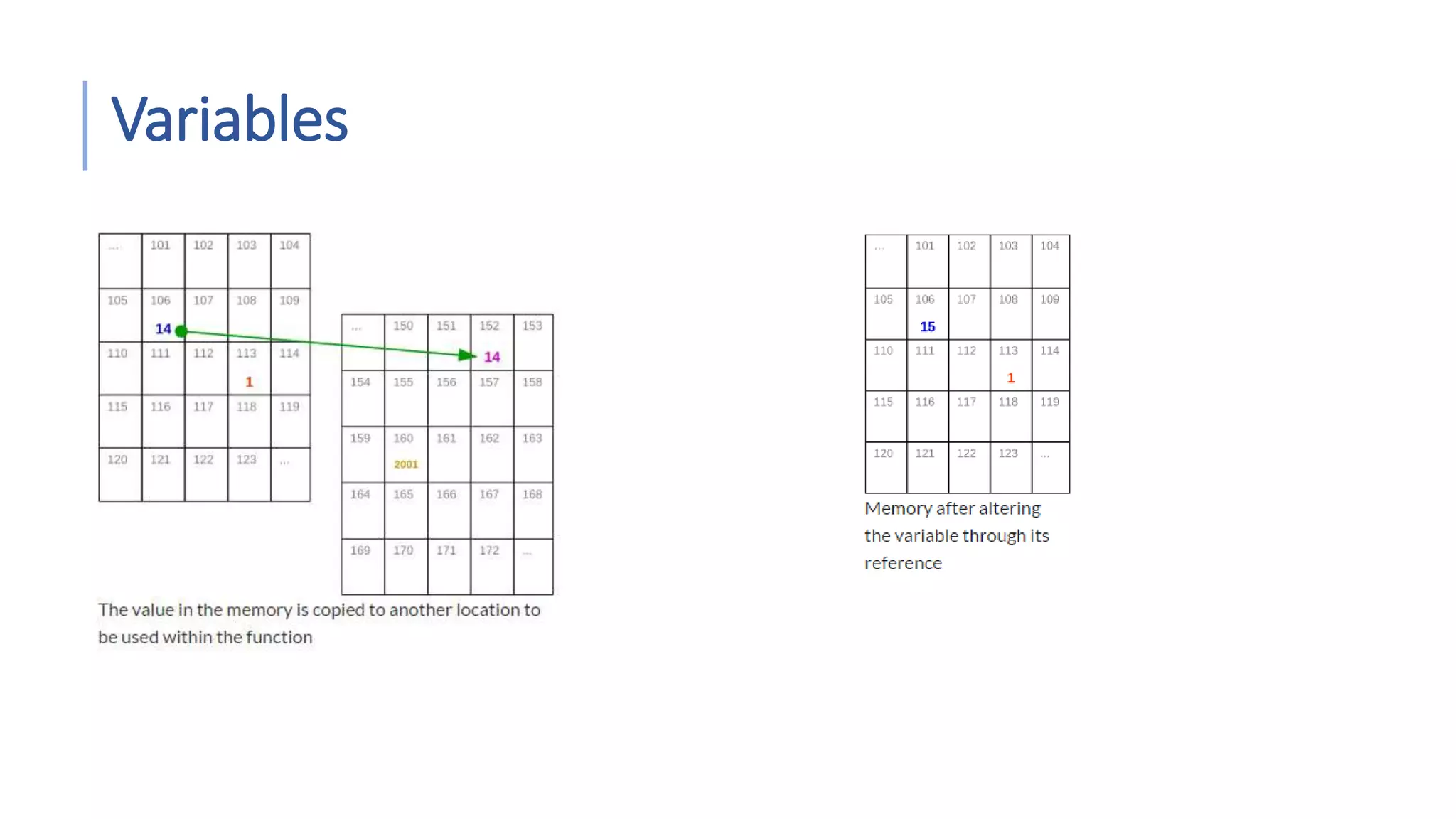
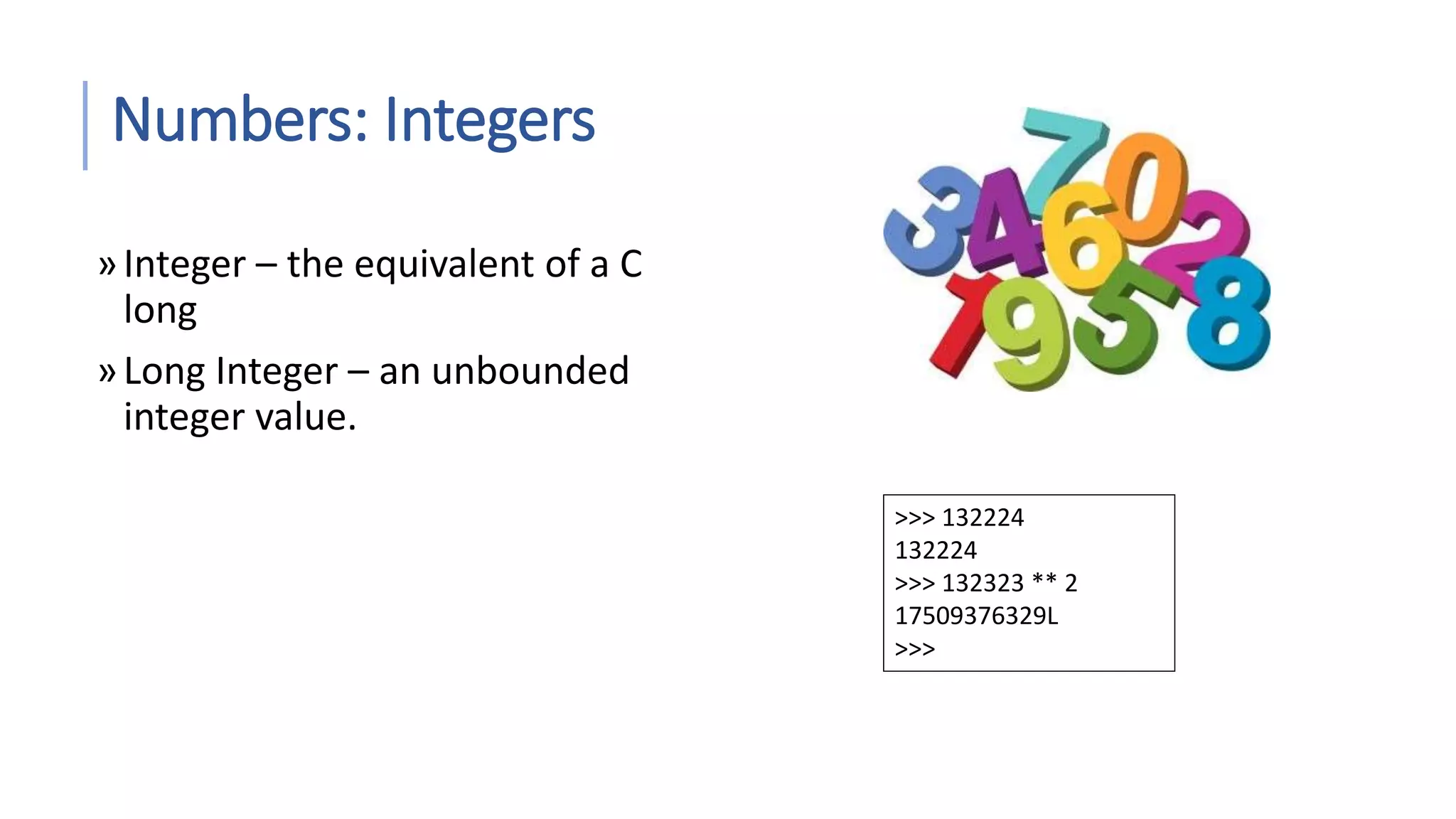
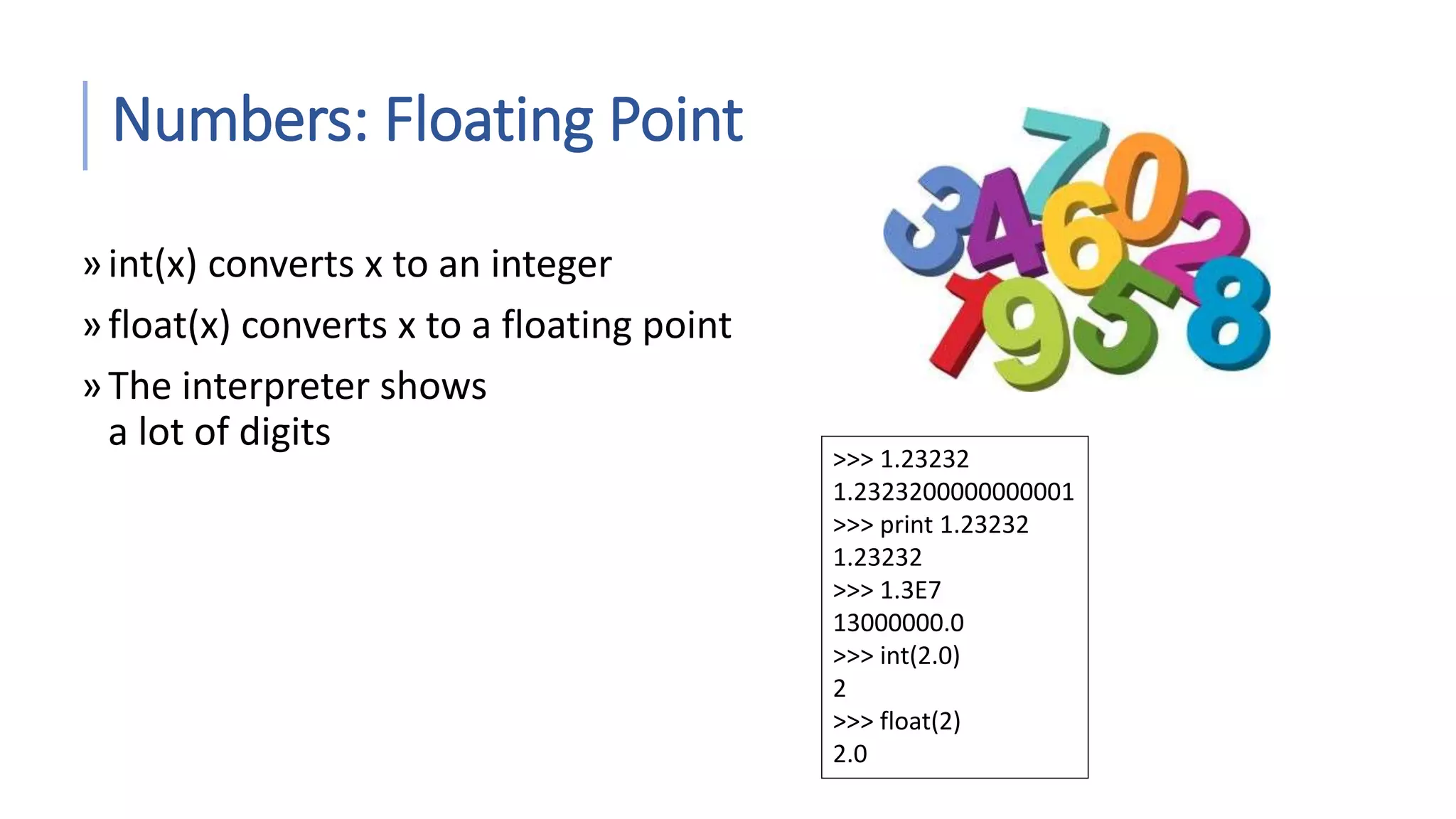
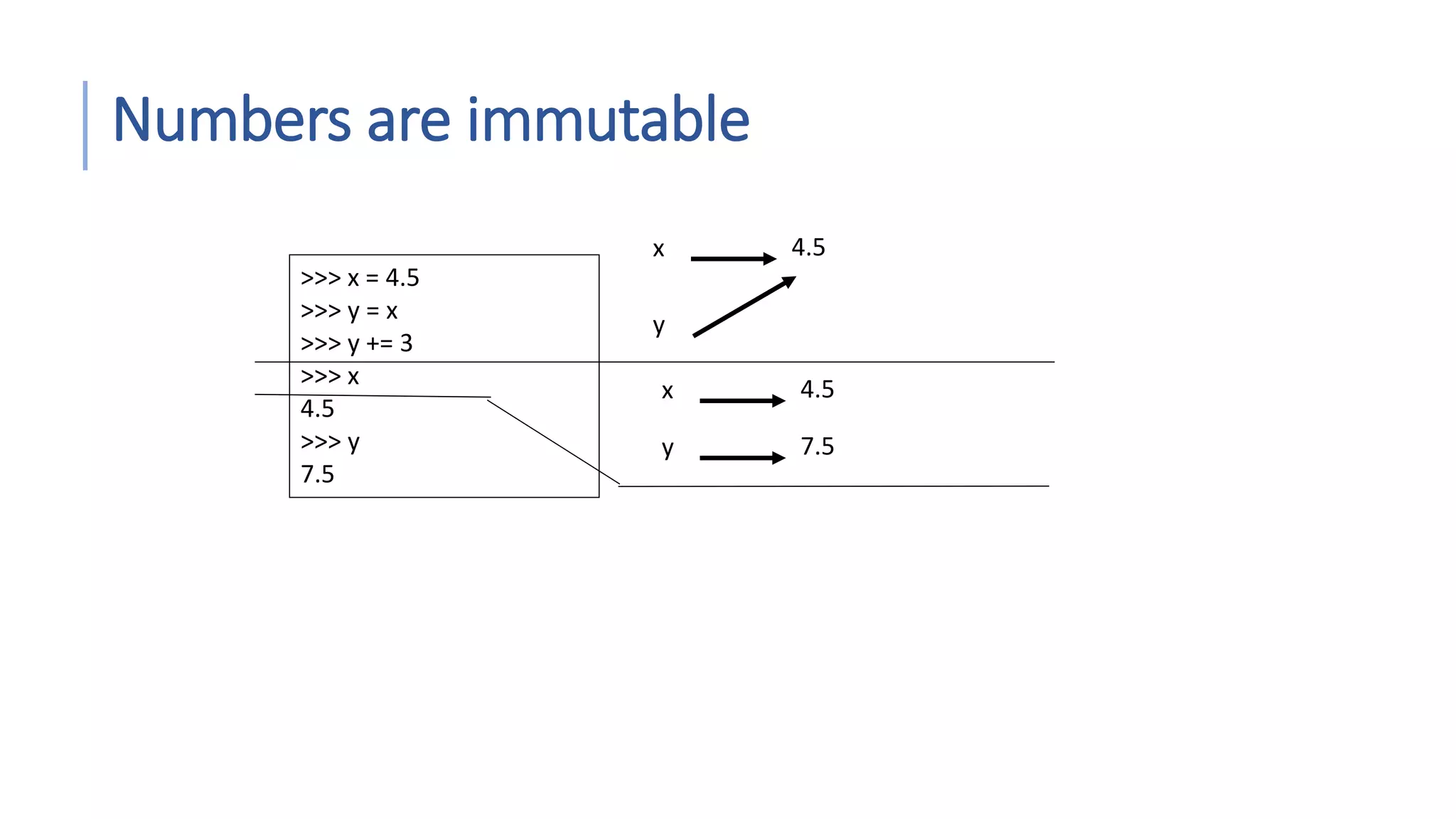
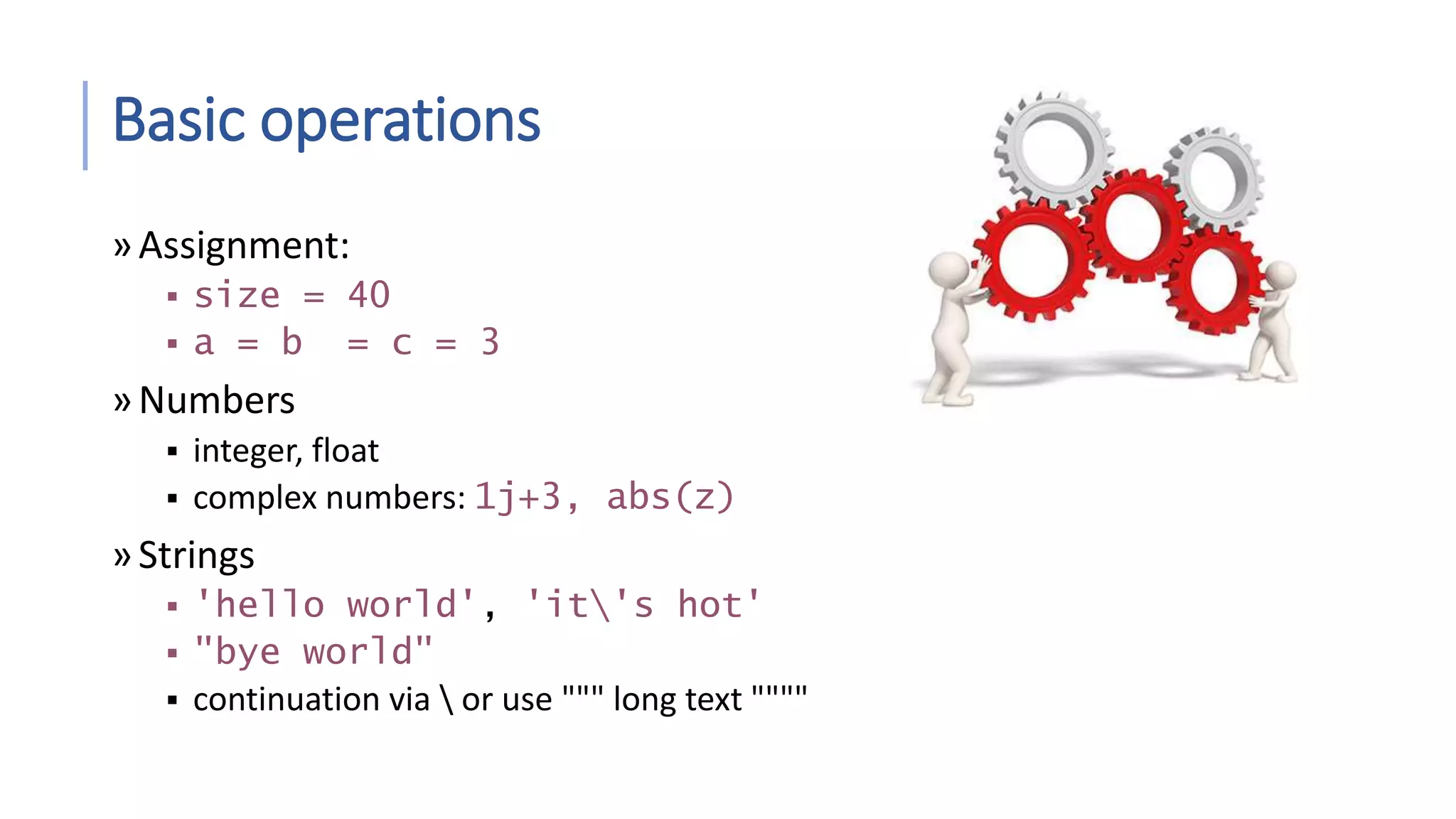
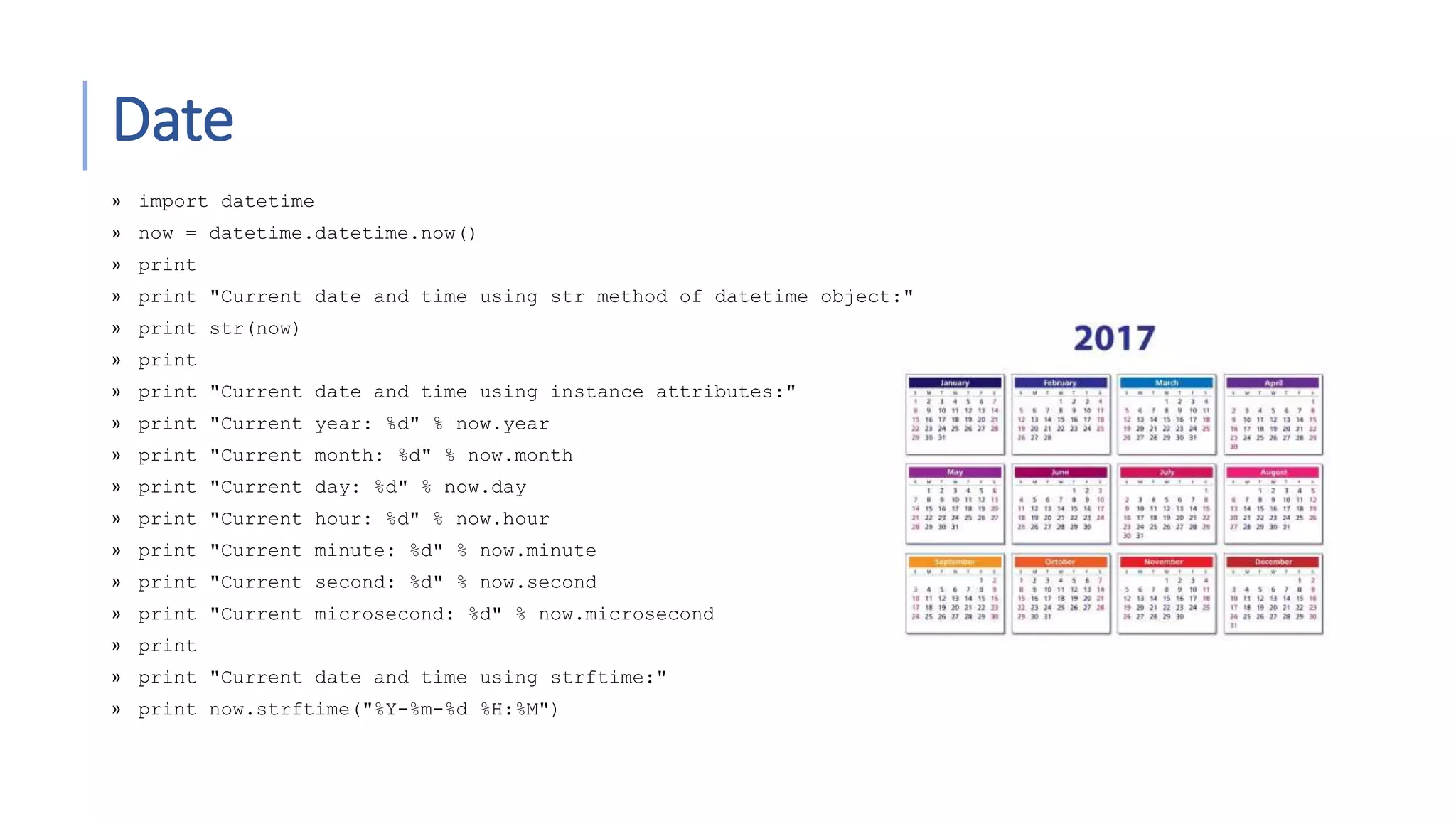
![Lists »lists can be heterogeneous a = ['spam', 'eggs', 100, 1234, 2*2] »Lists can be indexed and sliced: a[0] spam a[:2] ['spam', 'eggs'] »Lists can be manipulated a[2] = a[2] + 23 a[0:2] = [1,12] a[0:0] = [] len(a) 5](https://image.slidesharecdn.com/introductiontopythonprogramming-1-180316224435/75/Introduction-to-python-programming-1-20-2048.jpg)
![List methods »append(x) »extend(L) append all items in list (like Tcl lappend) »insert(i,x) »remove(x) »pop([i]), pop() create stack (FIFO), or queue (LIFO) pop(0) »index(x) return the index for value x](https://image.slidesharecdn.com/introductiontopythonprogramming-1-180316224435/75/Introduction-to-python-programming-1-21-2048.jpg)
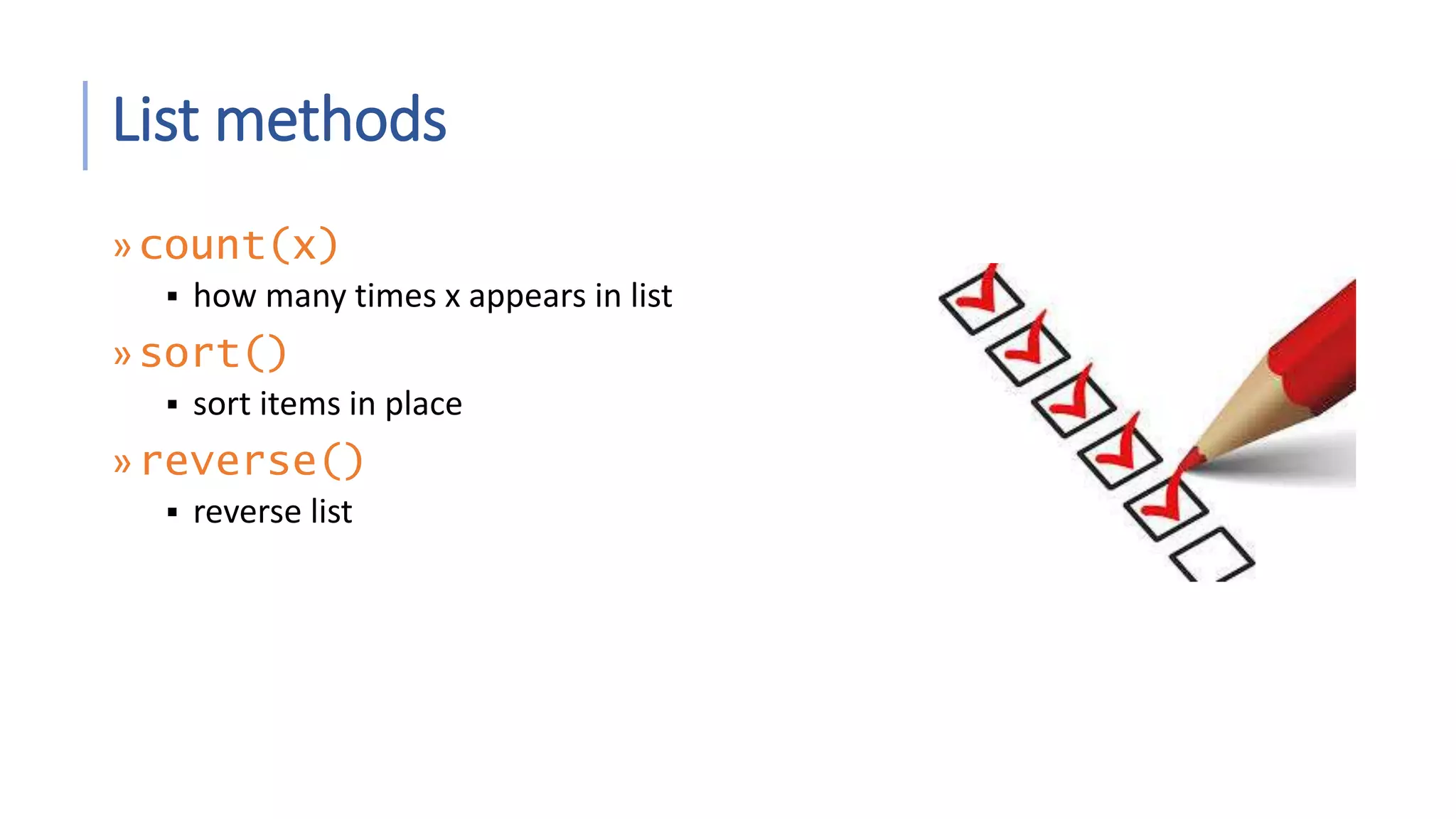
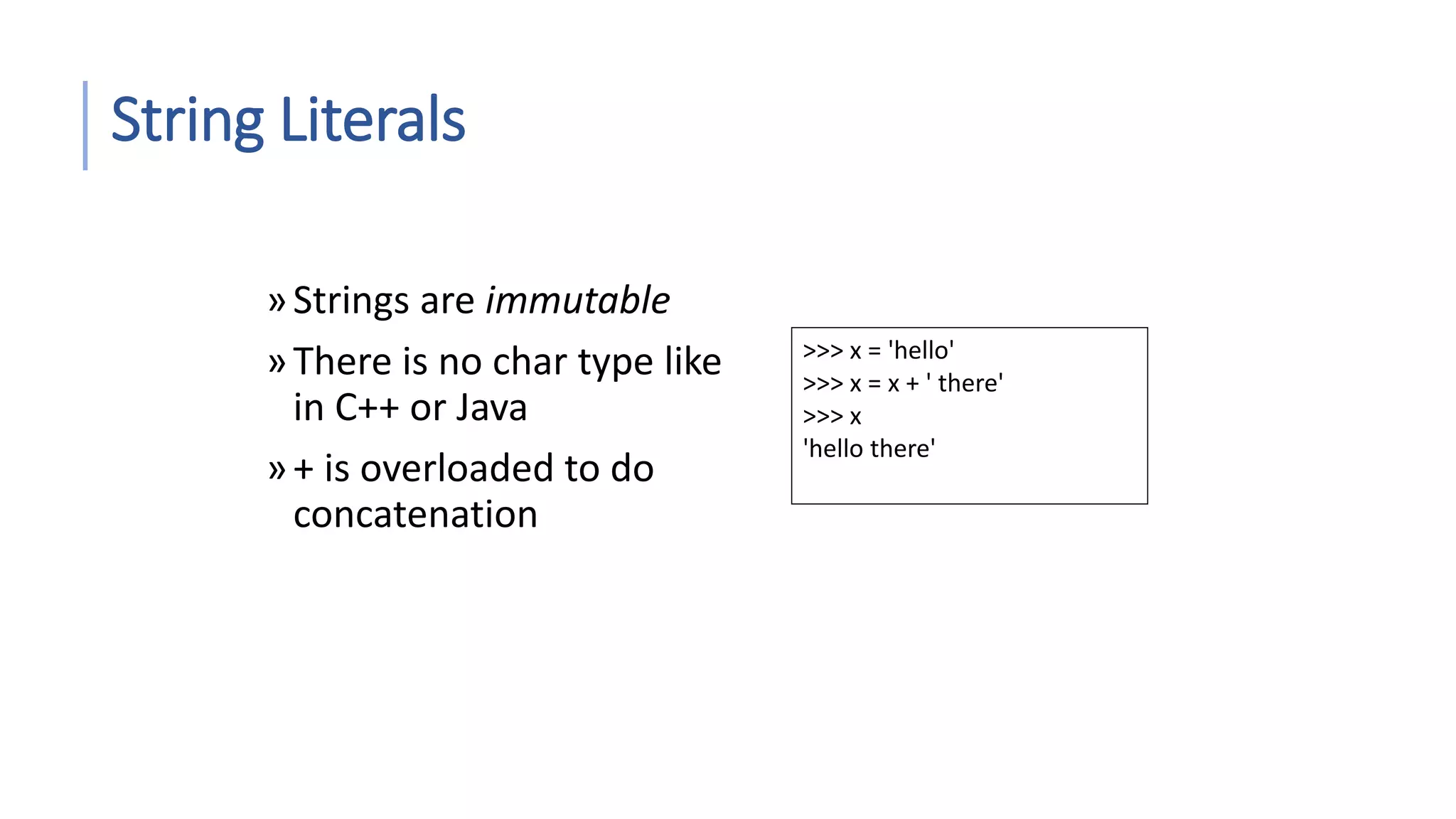
![Strings share many features with lists >>> smiles = "C(=N)(N)N.C(=O)(O)O" >>> smiles[0] 'C' >>> smiles[1] '(' >>> smiles[-1] 'O' >>> smiles[1:5] '(=N)' >>> smiles[10:-4] 'C(=O)' Use “slice” notation to get a substring](https://image.slidesharecdn.com/introductiontopythonprogramming-1-180316224435/75/Introduction-to-python-programming-1-24-2048.jpg)
![String operations »concatenate with + or neighbors word = 'Help' + x word = 'Help' 'a' »subscripting of strings 'Hello'[2] 'l' slice: 'Hello'[1:2] 'el' word[-1] last character len(word) 5 immutable: cannot assign to subscript](https://image.slidesharecdn.com/introductiontopythonprogramming-1-180316224435/75/Introduction-to-python-programming-1-25-2048.jpg)
![String Methods: find, split smiles = "C(=N)(N)N.C(=O)(O)O" >>> smiles.find("(O)") 15 >>> smiles.find(".") 9 >>> smiles.find(".", 10) -1 >>> smiles.split(".") ['C(=N)(N)N', 'C(=O)(O)O'] >>> Use “find” to find the start of a substring. Start looking at position 10. Find returns -1 if it couldn’t find a match. Split the string into parts with “.” as the delimiter](https://image.slidesharecdn.com/introductiontopythonprogramming-1-180316224435/75/Introduction-to-python-programming-1-26-2048.jpg)
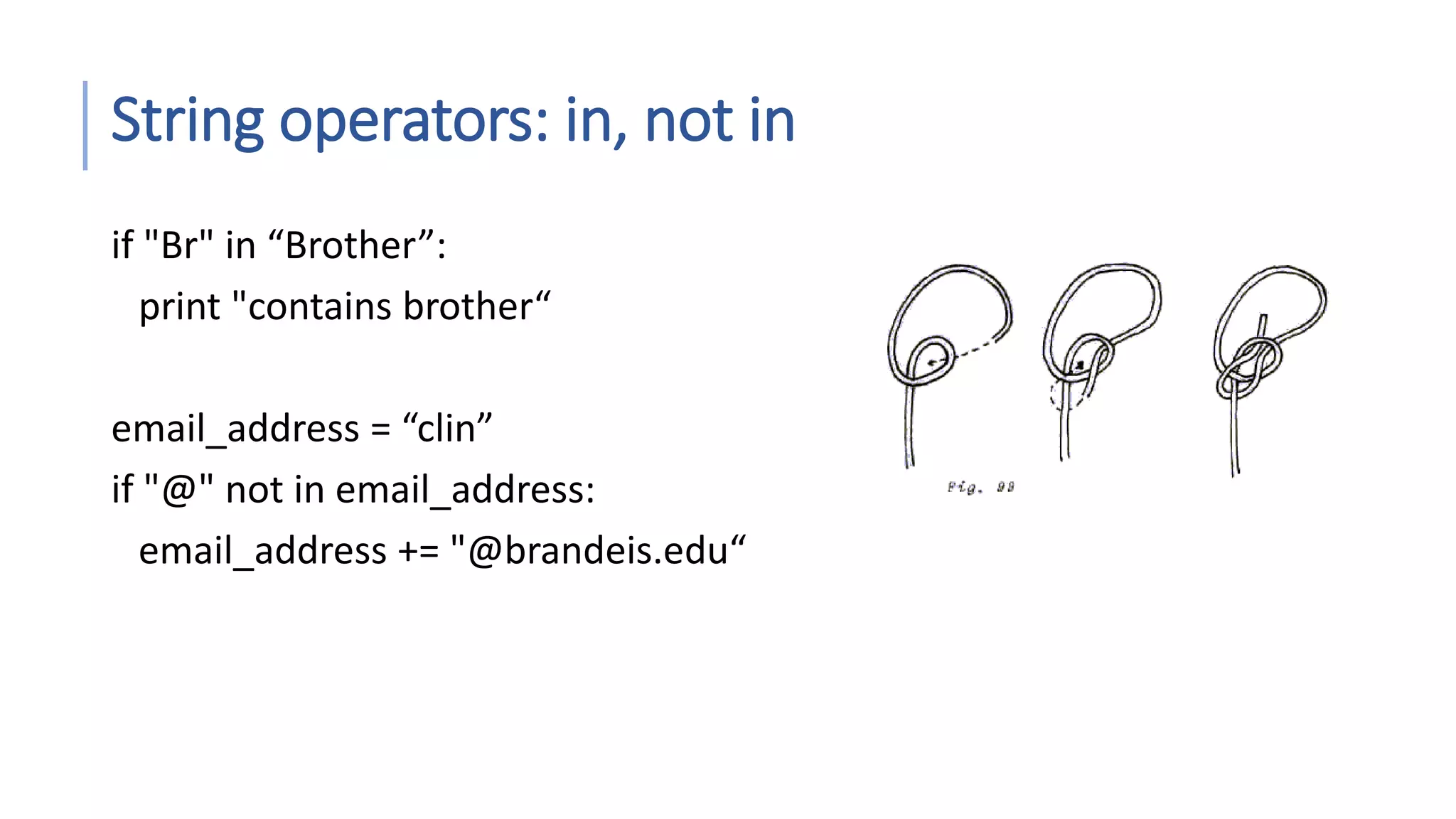
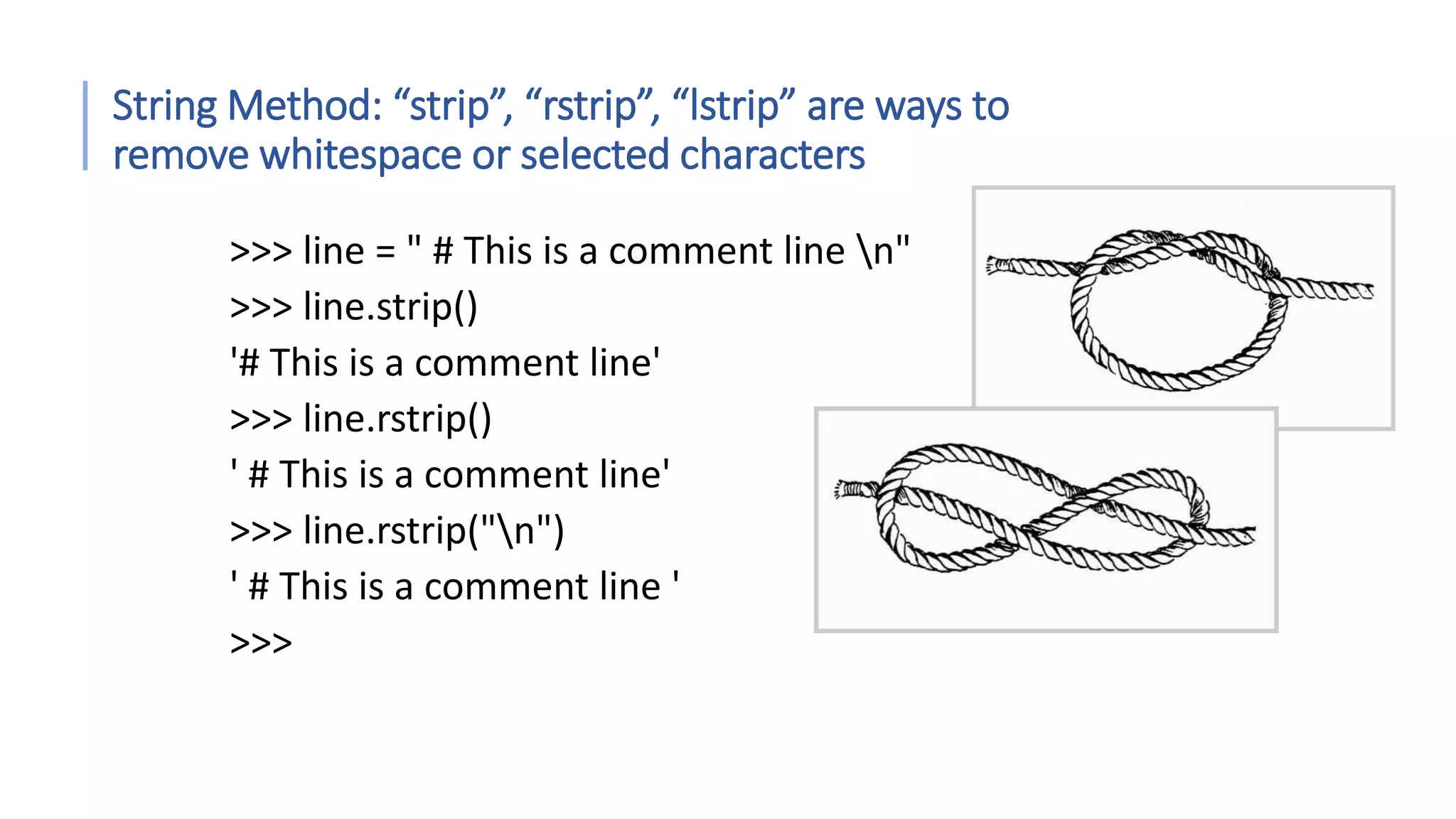
![More String methods email.startswith(“c") endswith(“u”) True/False >>> "%s@brandeis.edu" % "clin" 'clin@brandeis.edu' >>> names = [“Ben", “Chen", “Yaqin"] >>> ", ".join(names) ‘Ben, Chen, Yaqin‘ >>> “chen".upper() ‘CHEN'](https://image.slidesharecdn.com/introductiontopythonprogramming-1-180316224435/75/Introduction-to-python-programming-1-29-2048.jpg)
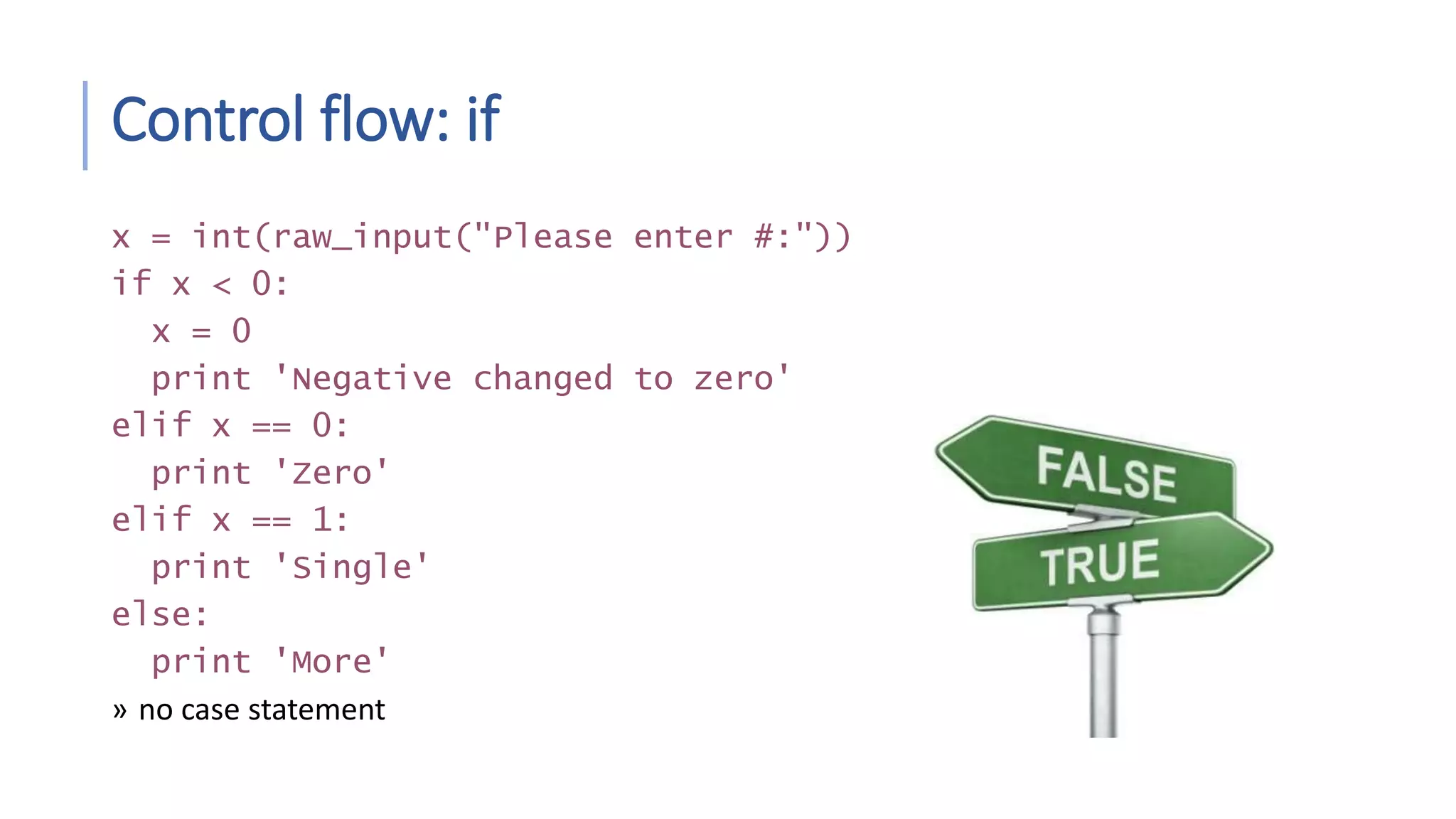
![Control flow: for a = ['cat', 'window', 'defenestrate'] for x in a: print x, len(x) »no arithmetic progression, but range(10) [0, 1, 2, 3, 4, 5, 6, 7, 8, 9] for i in range(len(a)): print i, a[i] »do not modify the sequence being iterated over](https://image.slidesharecdn.com/introductiontopythonprogramming-1-180316224435/75/Introduction-to-python-programming-1-31-2048.jpg)
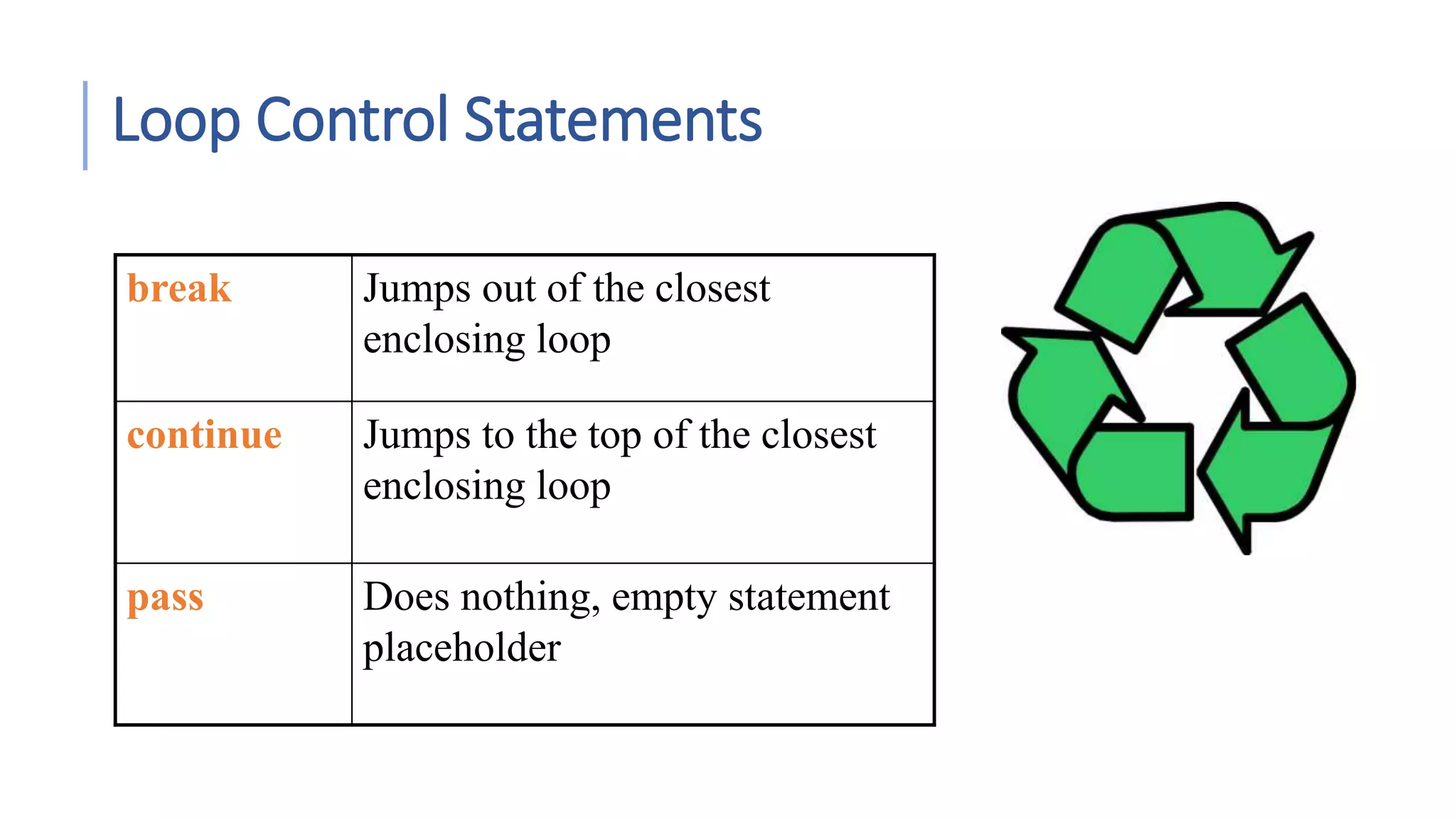
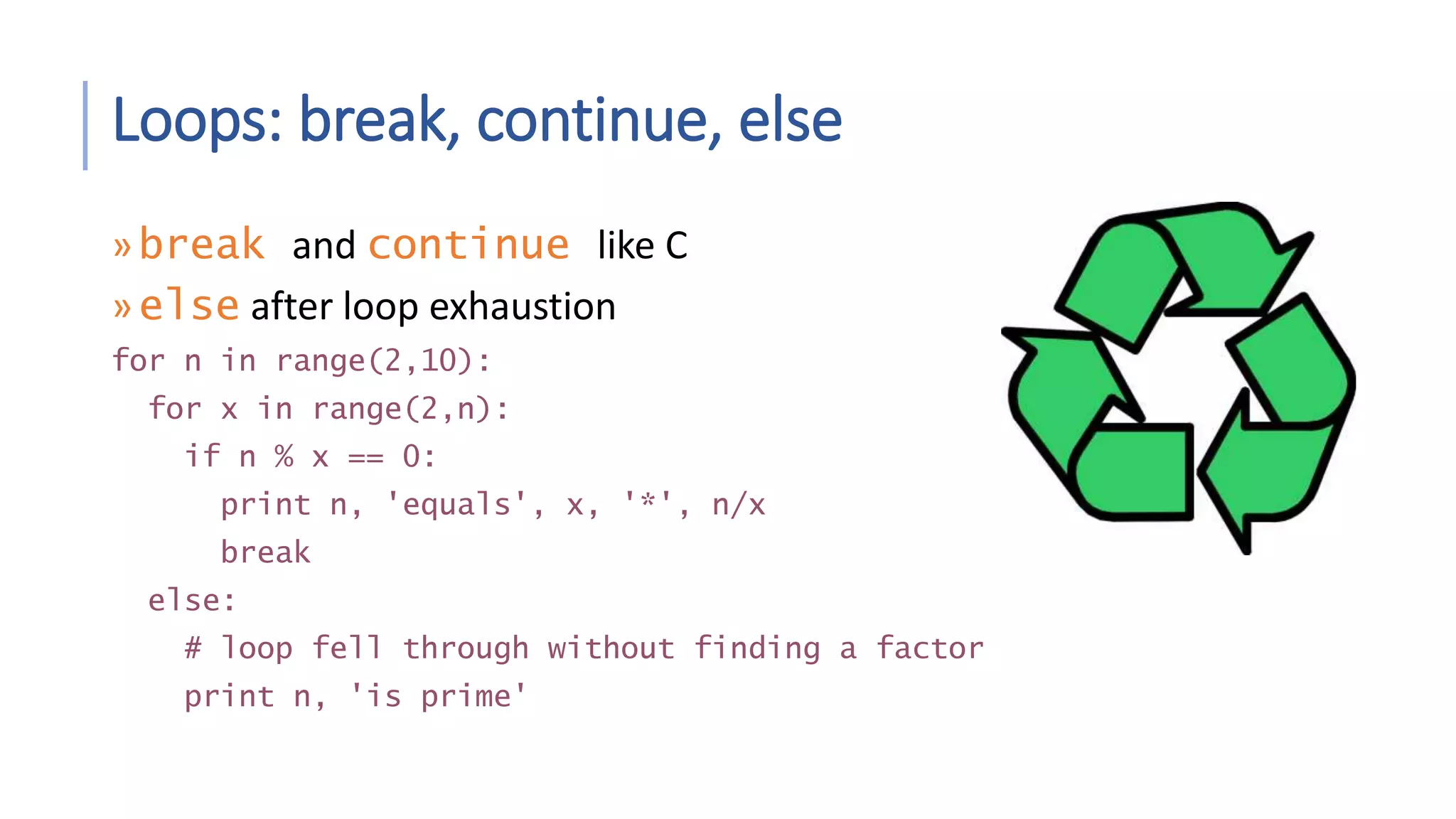
![Loop example » import fnmatch » import os » images = ['*.jpg', '*.jpeg', '*.png', '*.tif', '*.tiff'] » matches = [] » for root, dirnames, filenames in os.walk('C:'): » for extensions in images: » for filename in fnmatch.filter(filenames, extensions): » print filename » matches.append(os.path.join(root, filename)) Simple Matching fnmatch() compares a single file name against a pattern and returns a Boolean indicating whether or not they match. Filtering To test a sequence of filenames, you can use filter(). It returns a list of the names that match the pattern argument.](https://image.slidesharecdn.com/introductiontopythonprogramming-1-180316224435/75/Introduction-to-python-programming-1-34-2048.jpg)
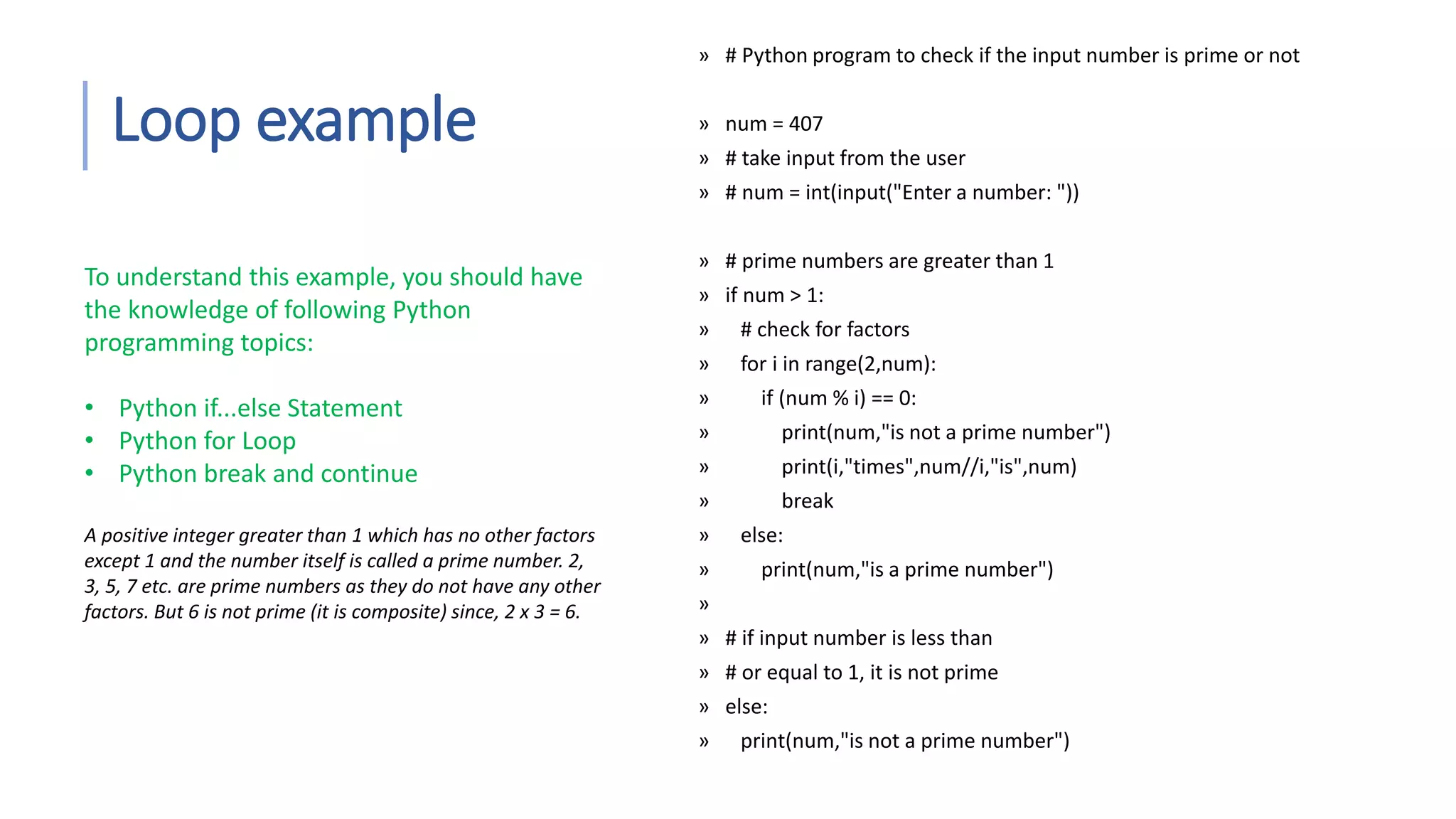
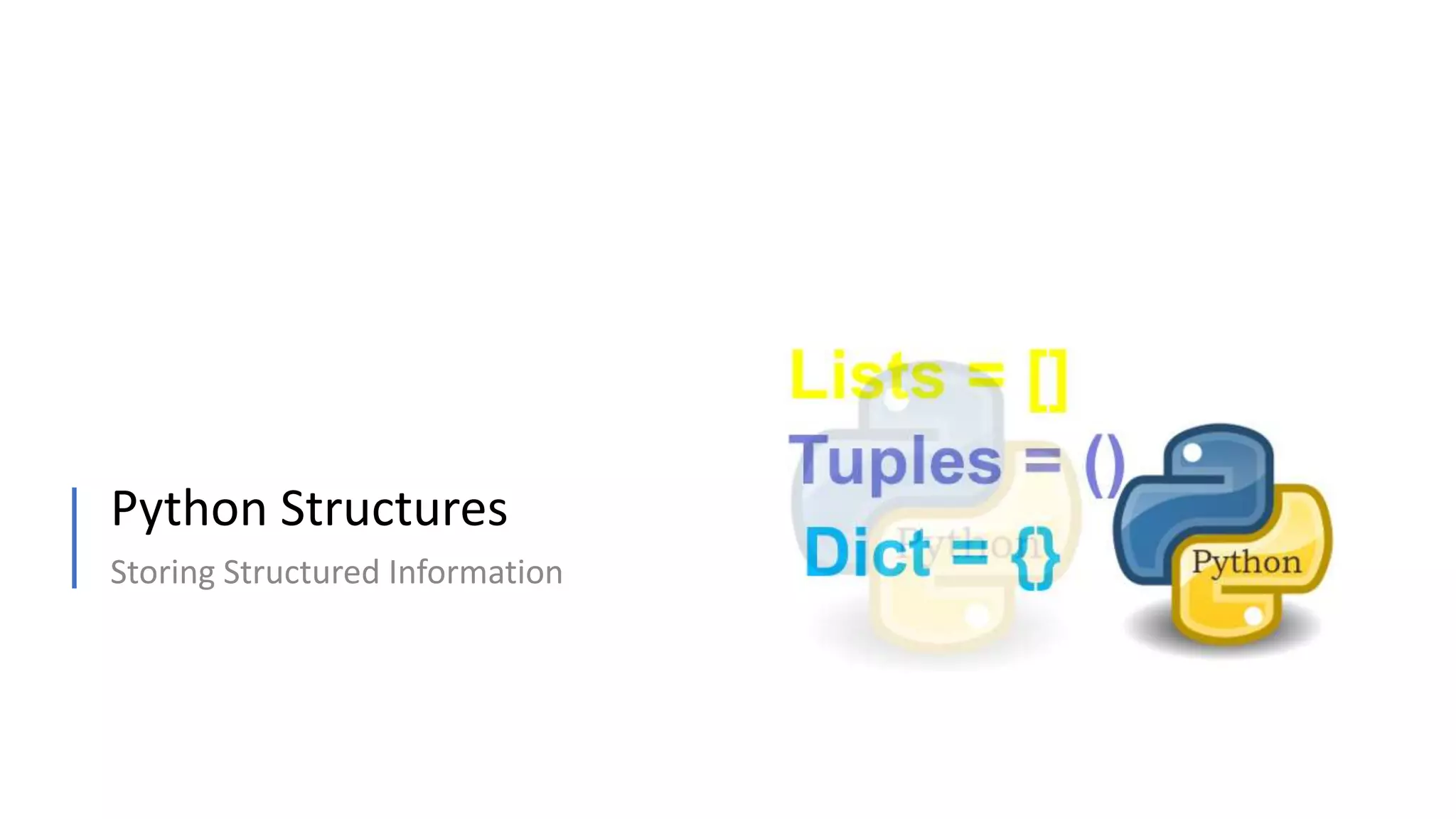
![List comprehensions »Create lists without map(), filter(), lambda »= expression followed by for clause + zero or more for or of clauses >>> vec = [2,4,6] >>> [3*x for x in vec] [6, 12, 18] >>> [{x: x**2} for x in vec} [{2: 4}, {4: 16}, {6: 36}]](https://image.slidesharecdn.com/introductiontopythonprogramming-1-180316224435/75/Introduction-to-python-programming-1-37-2048.jpg)
![List comprehensions »cross products: >>> vec1 = [2,4,6] >>> vec2 = [4,3,-9] >>> [x*y for x in vec1 for y in vec2] [8,6,-18, 16,12,-36, 24,18,-54] >>> [x+y for x in vec1 and y in vec2] [6,5,-7,8,7,-5,10,9,-3] >>> [vec1[i]*vec2[i] for i in range(len(vec1))] [8,12,-54]](https://image.slidesharecdn.com/introductiontopythonprogramming-1-180316224435/75/Introduction-to-python-programming-1-38-2048.jpg)
![List comprehensions »can also use if: >>> [3*x for x in vec if x > 3] [12, 18] >>> [3*x for x in vec if x < 2] []](https://image.slidesharecdn.com/introductiontopythonprogramming-1-180316224435/75/Introduction-to-python-programming-1-39-2048.jpg)
![Tuples: sort of an immutable list >>> yellow = (255, 255, 0) # r, g, b >>> one = (1,) >>> yellow[0] >>> yellow[1:] (255, 0) >>> yellow[0] = 0 Traceback (most recent call last): File "<stdin>", line 1, in <module> TypeError: 'tuple' object does not support item assignment Very common in string interpolation: >>> "%s lives in %s at latitude %.1f" % ("Andrew", "Sweden", 57.7056) 'Andrew lives in Sweden at latitude 57.7'](https://image.slidesharecdn.com/introductiontopythonprogramming-1-180316224435/75/Introduction-to-python-programming-1-40-2048.jpg)
![Tuples and sequences »lists, strings, tuples: examples of sequence type »tuple = values separated by commas >>> t = 123, 543, 'bar' >>> t[0] 123 >>> t (123, 543, 'bar')](https://image.slidesharecdn.com/introductiontopythonprogramming-1-180316224435/75/Introduction-to-python-programming-1-41-2048.jpg)
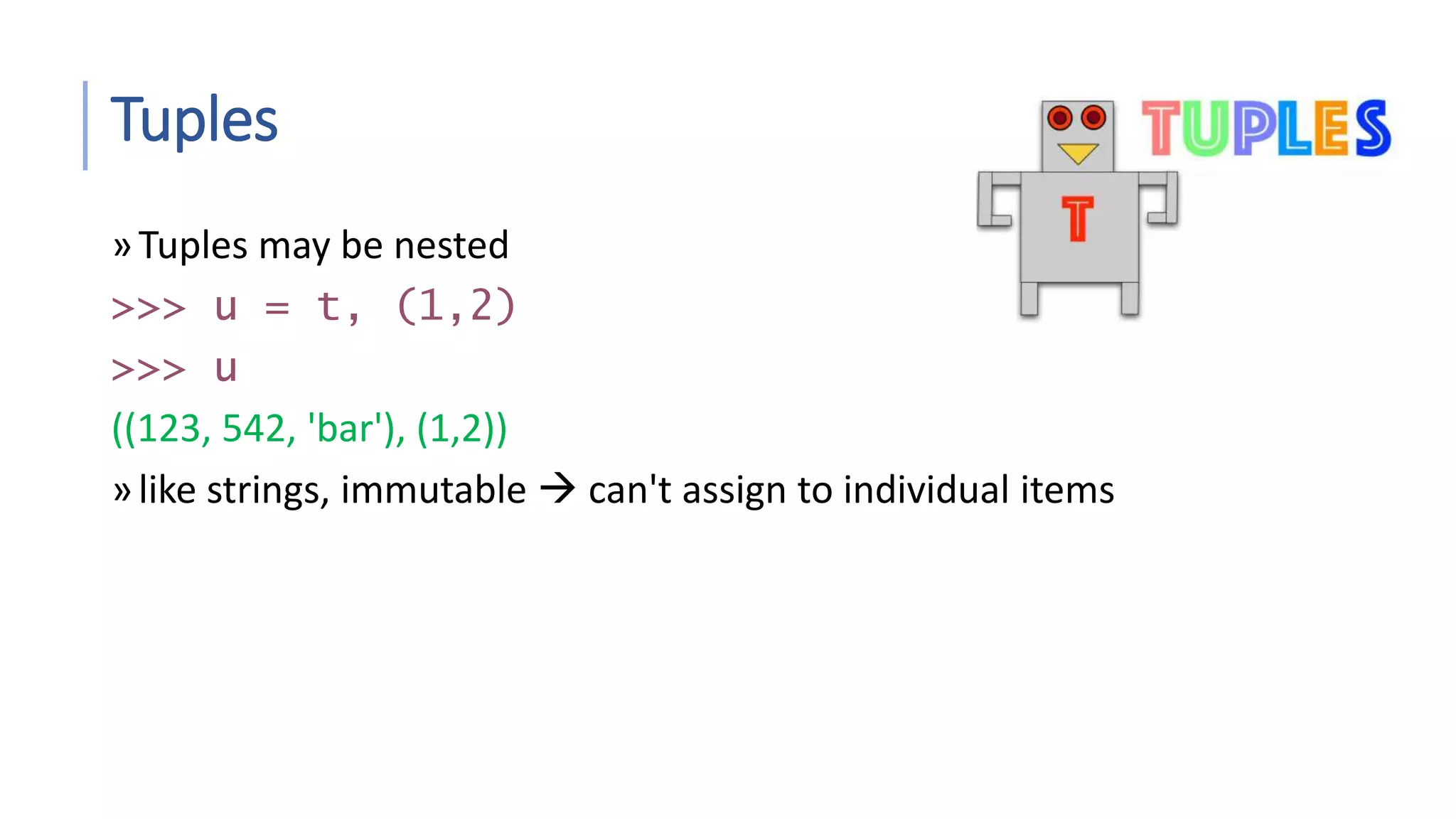
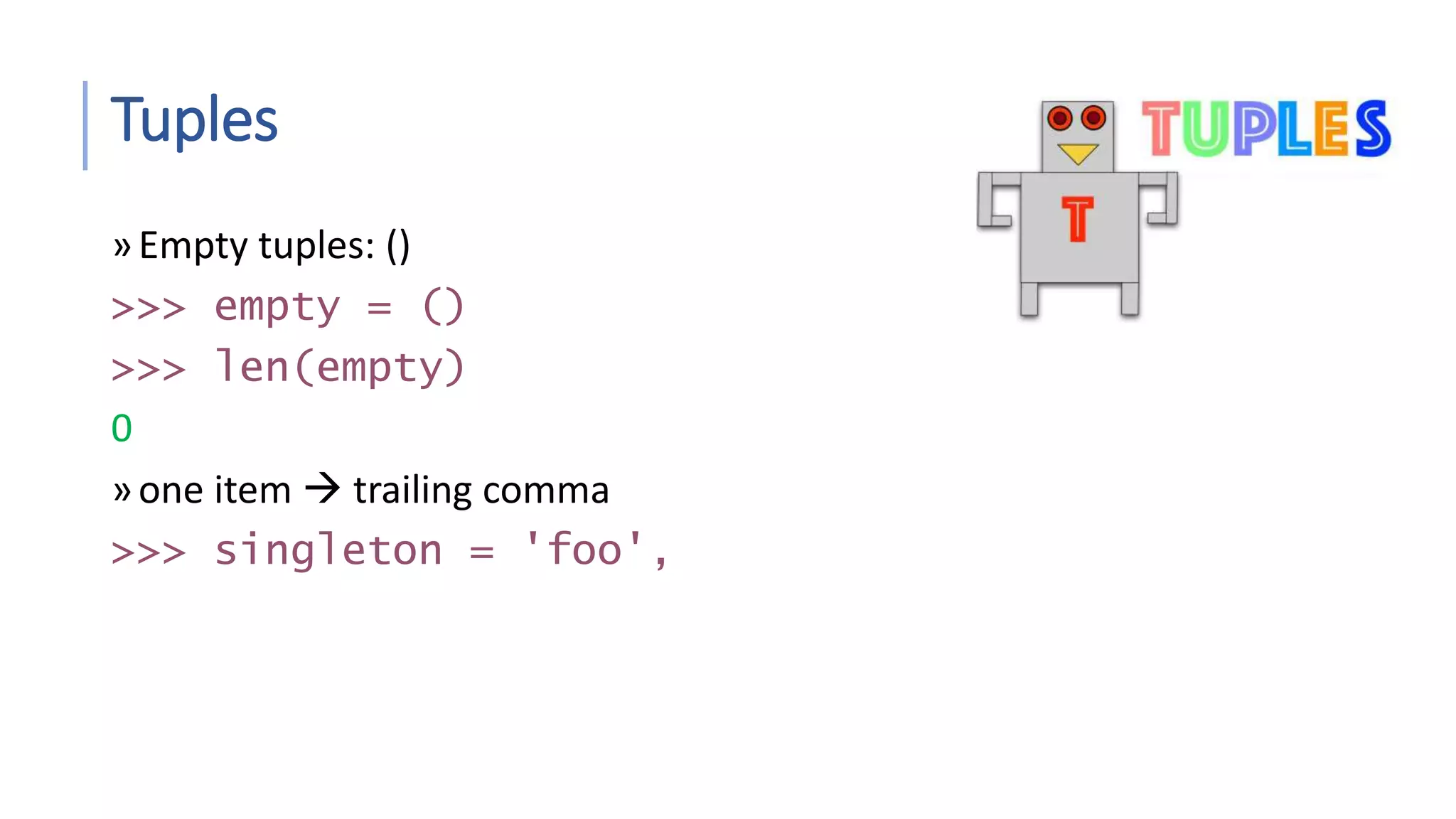
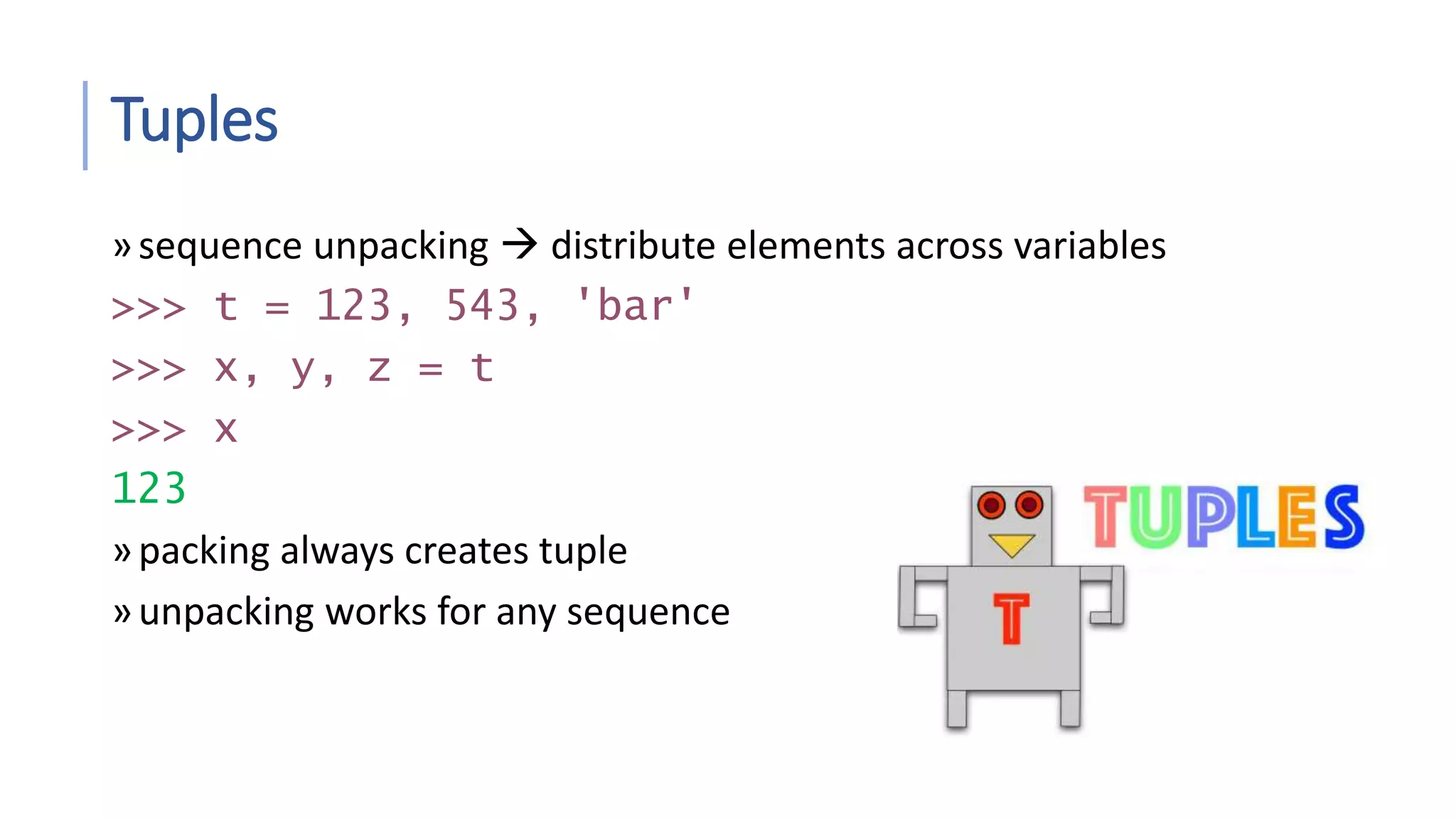
![Dictionaries »associative arrays »indexed by keys »keys are any immutable type: e.g., tuples »but not lists (mutable!) »uses 'key: value' notation >>> tel = {'hgs' : 7042, 'lennox': 7018} >>> tel['cs'] = 7000 >>> tel](https://image.slidesharecdn.com/introductiontopythonprogramming-1-180316224435/75/Introduction-to-python-programming-1-45-2048.jpg)
![Dictionaries »no particular order »delete elements with del >>> del tel['foo'] »keys() method unsorted list of keys >>> tel.keys() ['cs', 'lennox', 'hgs'] »use has_key() to check for existence >>> tel.has_key('foo') 0](https://image.slidesharecdn.com/introductiontopythonprogramming-1-180316224435/75/Introduction-to-python-programming-1-46-2048.jpg)
![Dictionaries » prices = {'apple': 0.40, 'banana': 0.50} » my_purchase = { » 'apple': 1, » 'banana': 6} » grocery_bill = sum(prices[fruit] * my_purchase[fruit] » for fruit in my_purchase) » print 'I owe the grocer $%.2f' % grocery_bill](https://image.slidesharecdn.com/introductiontopythonprogramming-1-180316224435/75/Introduction-to-python-programming-1-47-2048.jpg)
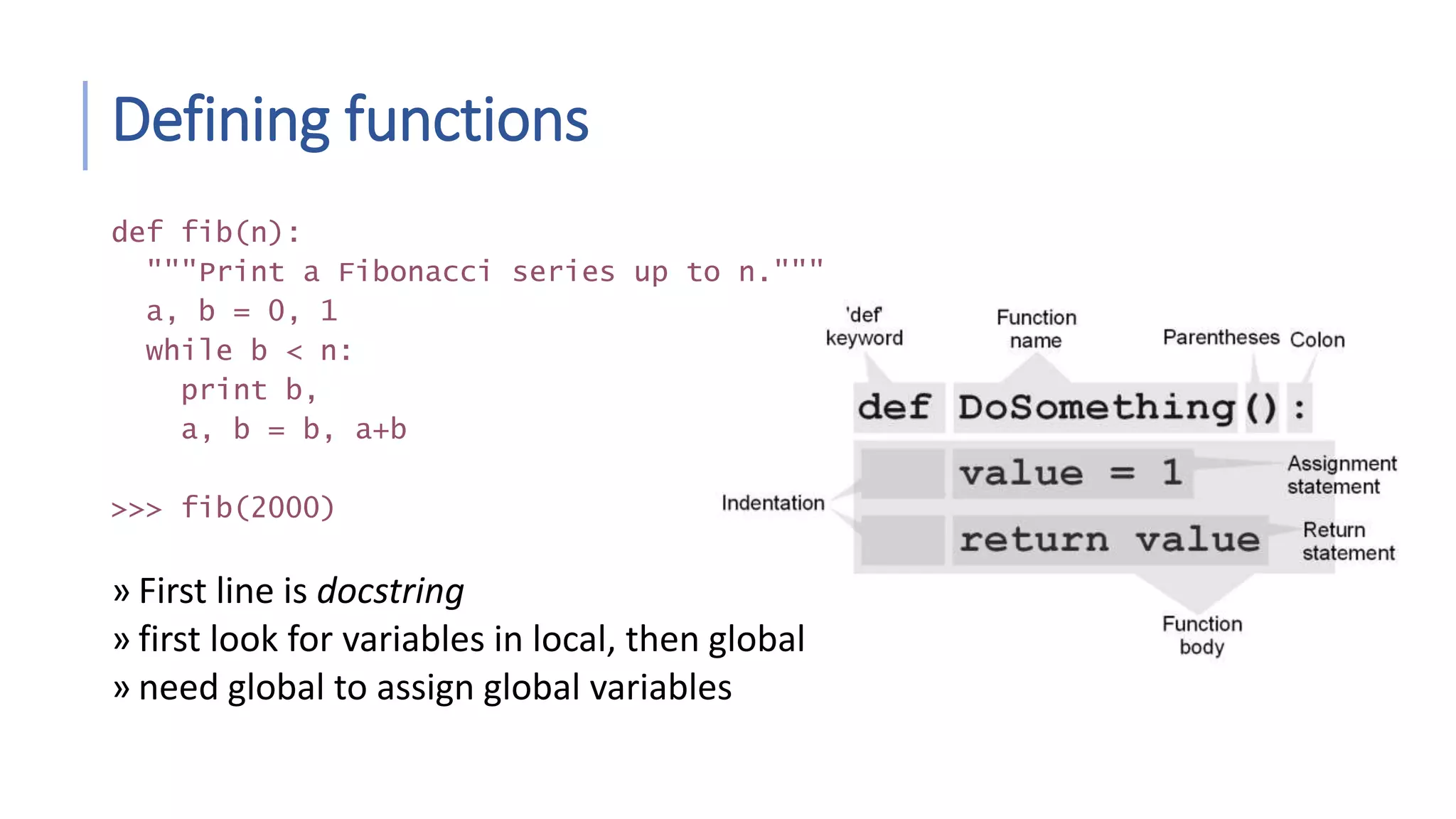
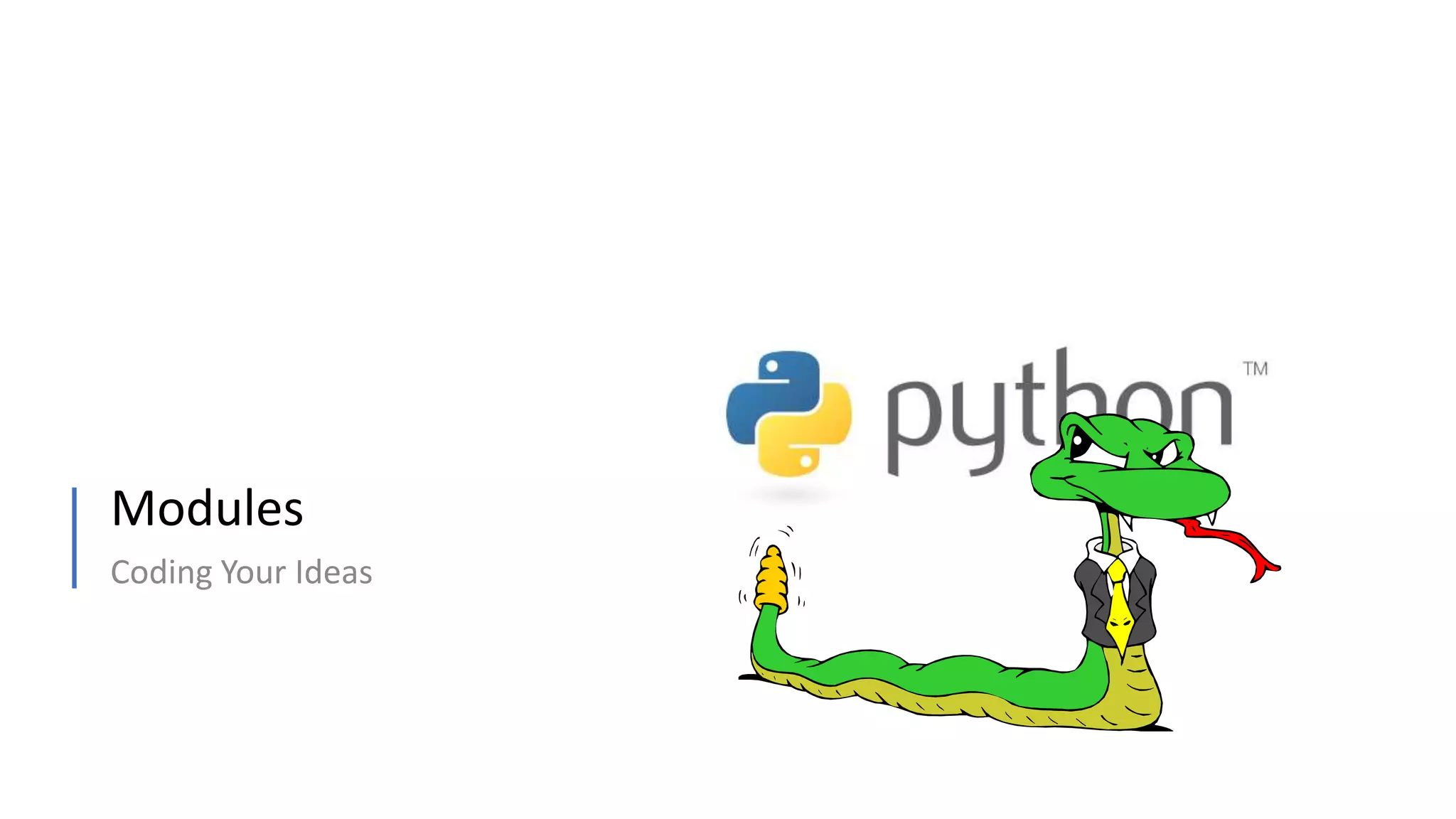
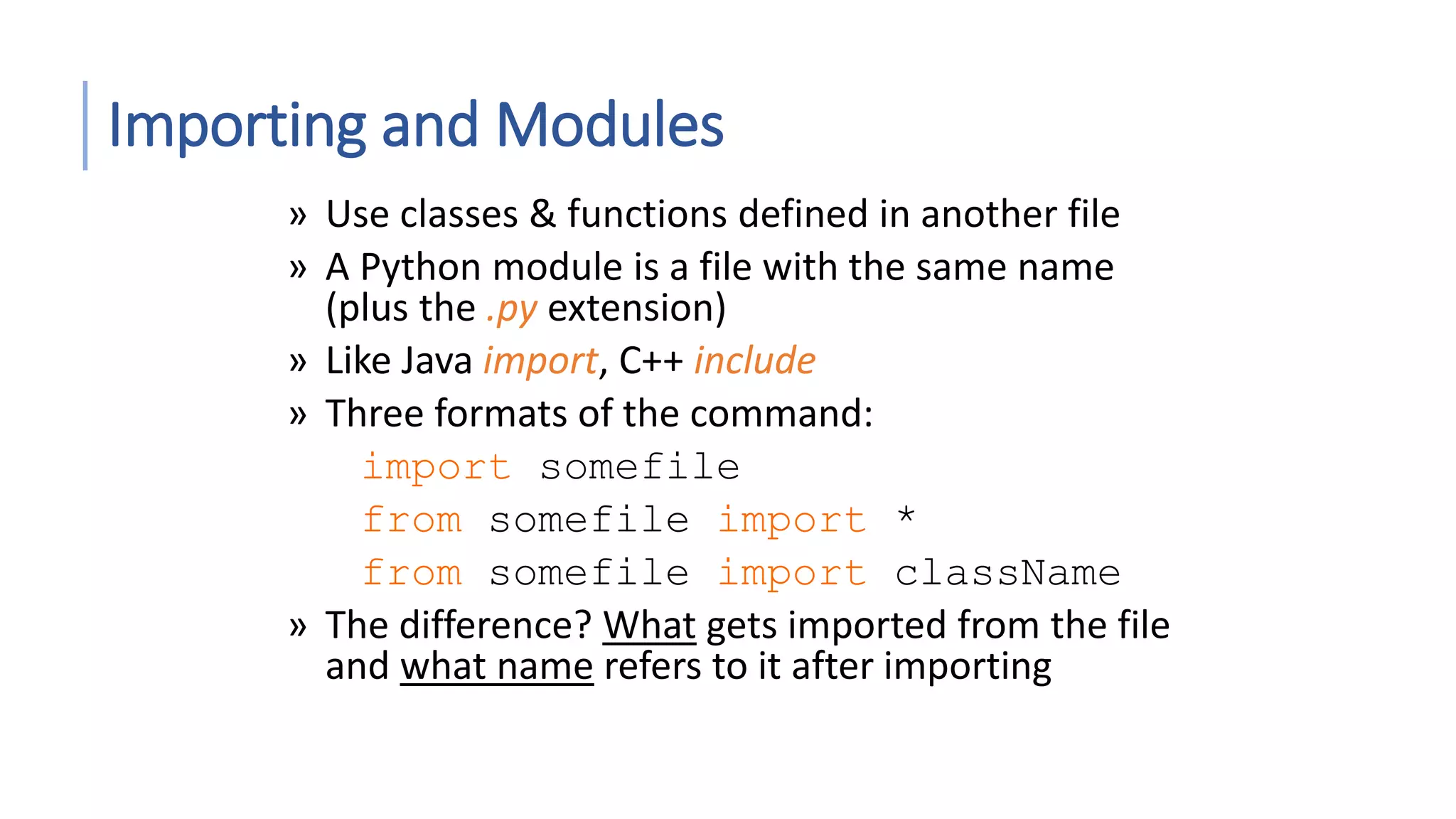
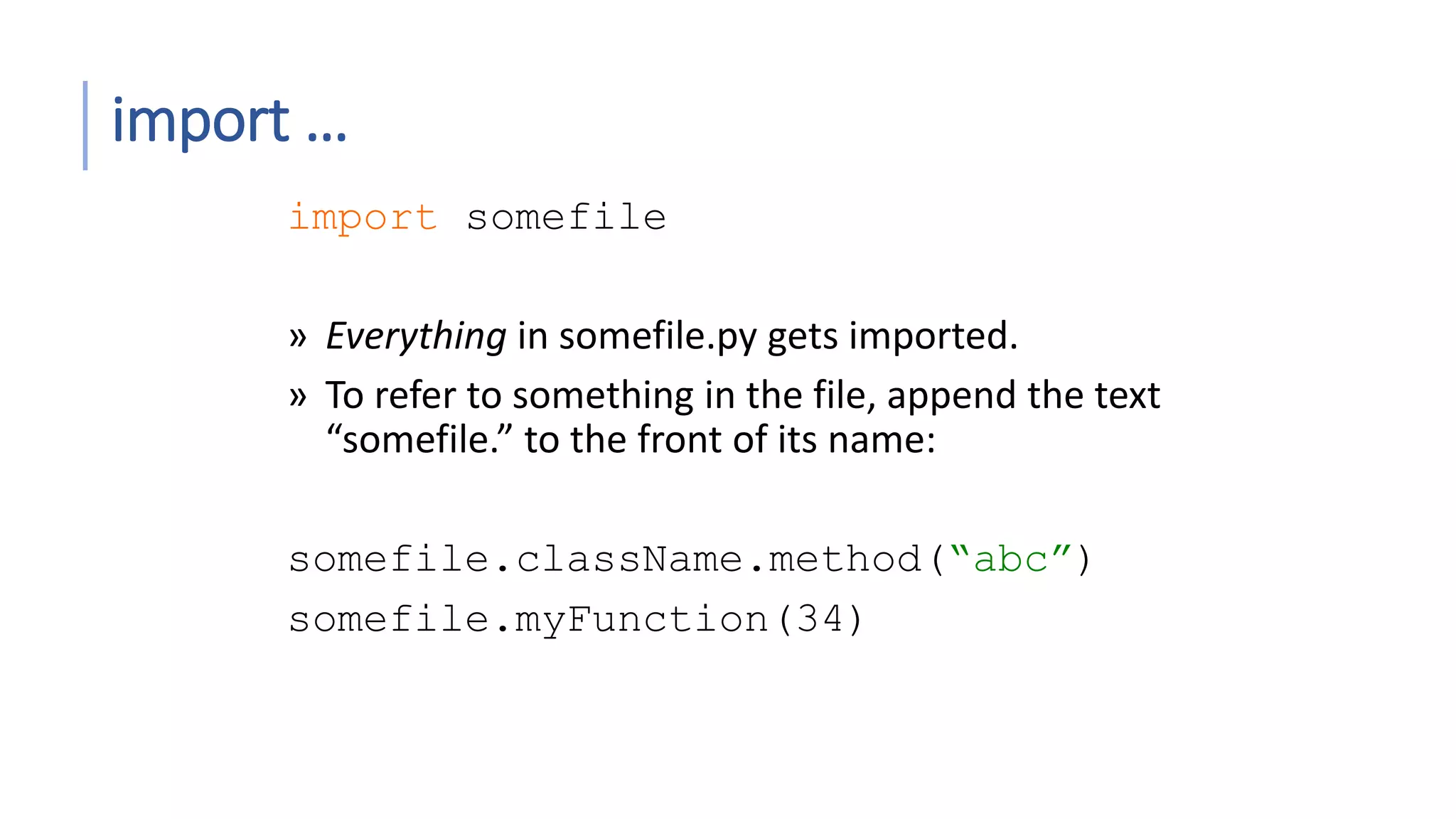
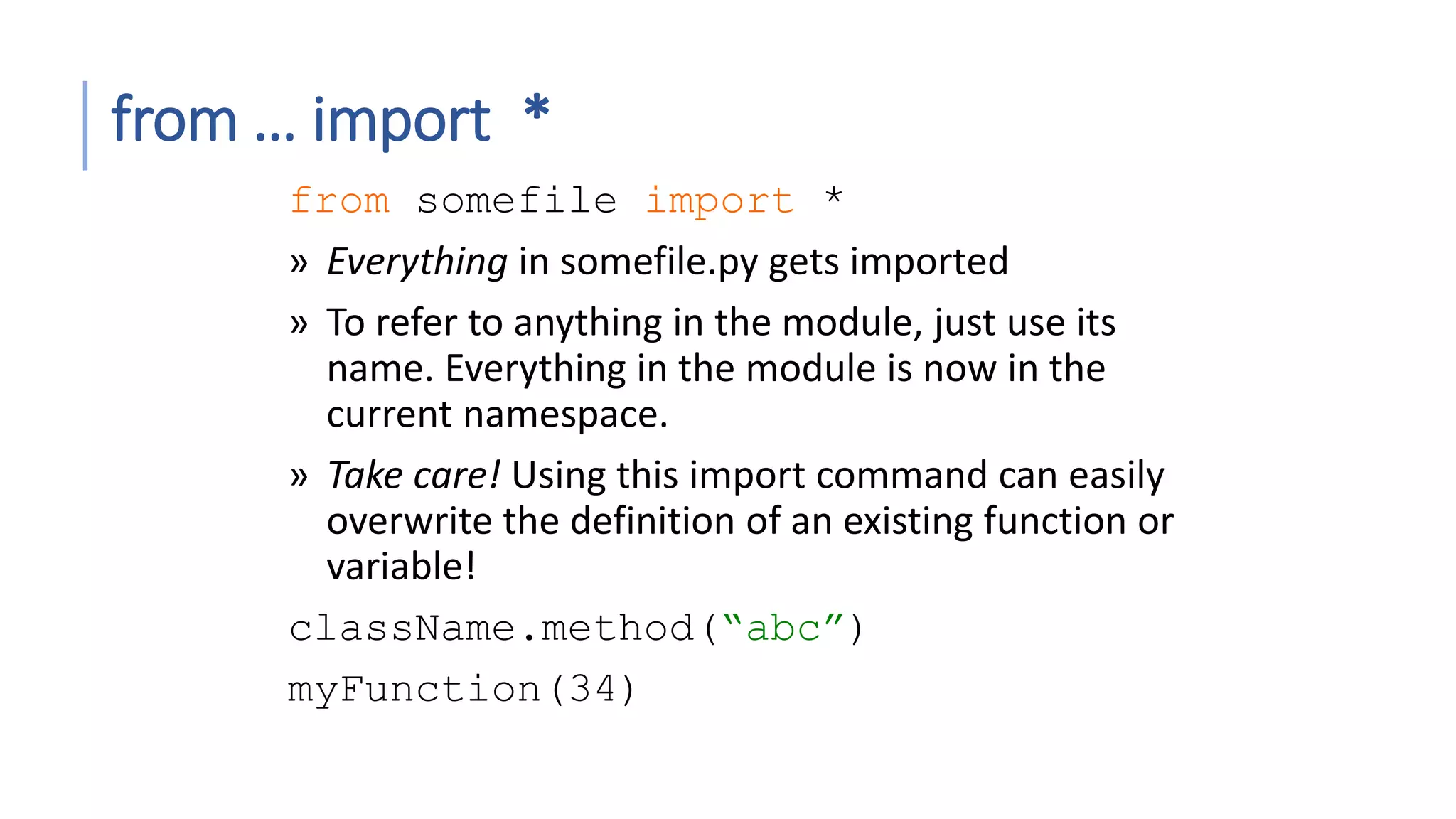
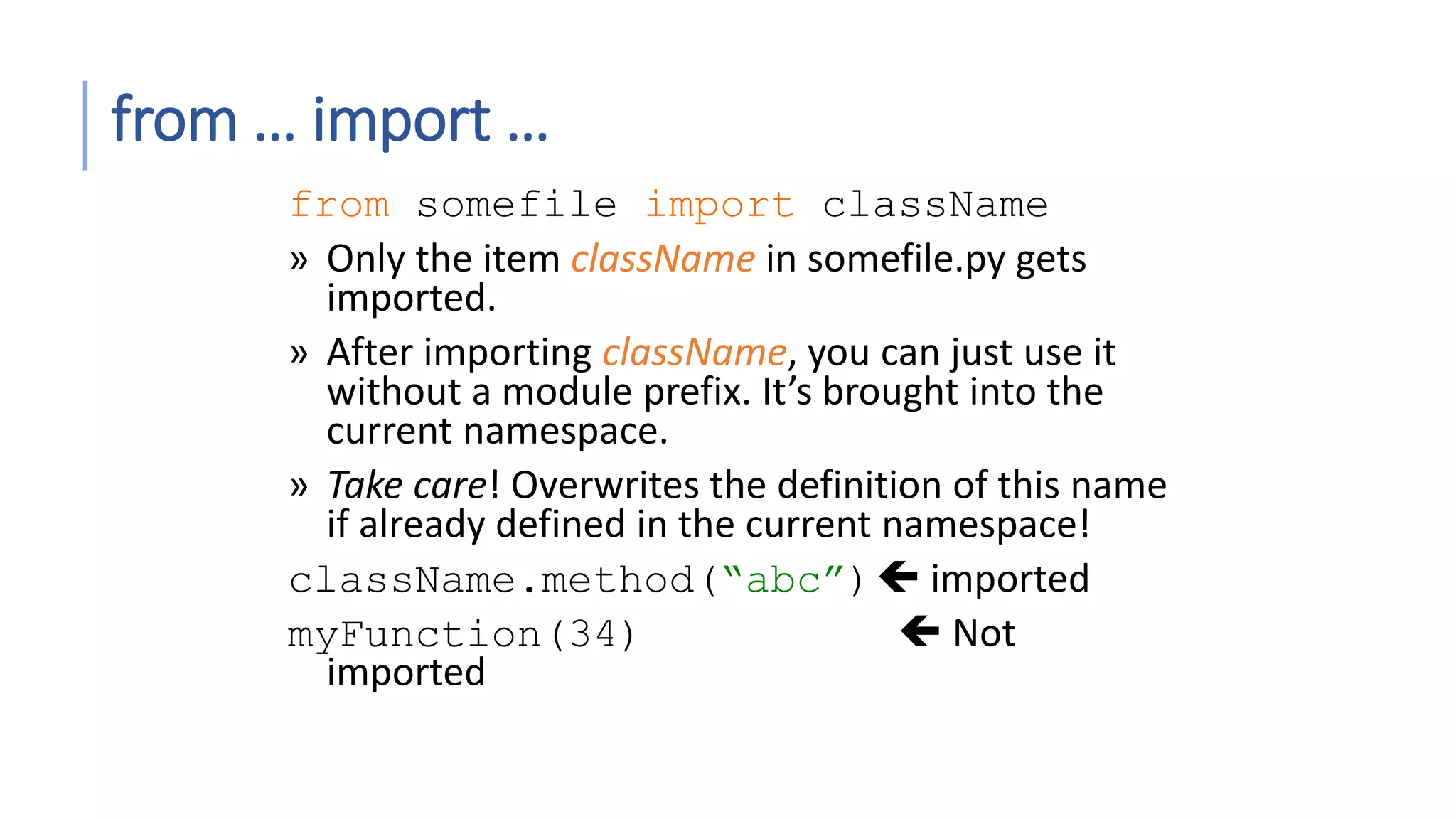
![Module search path »current directory »list of directories specified in PYTHONPATH environment variable »uses installation-default if not defined, e.g., .:/usr/local/lib/python »uses sys.path >>> import sys >>> sys.path ['', 'C:PROGRA~1Python2.2', 'C:Program FilesPython2.2DLLs', 'C:Program FilesPython2.2lib', 'C:Program FilesPython2.2liblib-tk', 'C:Program FilesPython2.2', 'C:Program FilesPython2.2libsite- packages']](https://image.slidesharecdn.com/introductiontopythonprogramming-1-180316224435/75/Introduction-to-python-programming-1-54-2048.jpg)

